
- Terms and Conditions
- Privacy Policy
- Cookie policy
- Cancellation and Refund Policy

UK Visa from Poland
The UK offers a wide range of visas and immigration routes for Polish nationals looking to work, study or settle permanently in the UK.
For more information about UK visas and immigration, including bespoke advice on how to apply for one from Poland, reach out to a member of our legal team today. Call us on (+44) 333 4149244 , or contact us online .
Request a call back from our immigration experts
- Our Services
- Content /Overview
- Related Pages
Benefits of Choosing IAS’ Immigration Lawyers
At IAS, we understand that every case and client is unique, so we provide bespoke assessment and support to each client. With us, you get a dedicated immigration lawyer who is dedicated to ensuring your application is successful. Enjoy the following benefits with IAS:
Compassionate support from an experienced immigration lawyer dedicated to your success
Support in gathering supporting documents and completing a high-quality application.
A personalised Letter of Representation to help compile a compelling case for approval
Continued support from your lawyer in the event of any complications.
Services we Provide
Need help with an immigration issue? Book a one-to-one advice session with one of our legal caseworkers.
We can complete your visa application on your behalf, taking the stress and hassle out of the process.
Need to submit an application quickly? We can help you complete and send it off in as little as 24 hours.
Ensure you have the greatest chance of a successful appeal with our legal support and guidance.
Overview of UK Visas from Poland
Polish nationals form one of the biggest ethnic minorities in the UK today, with an estimated 691,000 Polish-born people or people of Polish descent in the UK as of 2020.
Polish is also the second-most spoken language in England, and the third-most spoken language in the whole of the UK, after English and Welsh.
It’s therefore no surprise that Polish culture and influence on contemporary British life is widespread, especially so after Poland joined the EU in 2004. Many major British towns and cities have Polish communities, with Polish food shops being a common sight in many urban areas.
Even after the UK’s departure from the EU, Polish migration continues through schemes such as the EU Settlement Scheme and the UK’s various visas. Polish citizens can travel to the UK using one of these visas, with a variety of long- and short-term options available to suit applicants.
Short-Term UK Work Visas for Poles
If you’re a Polish national looking to visit or live in the UK short-term, there are a range of options available to you.
Firstly, note that Polish citizens visiting the UK for less than 6 months will not need to apply for a visa. You must, however, adhere to the Standard Visitor rules while in the UK, which include restrictions on being able to take up employment or claim public funds.
If you do wish to work in the UK however, there are a wide variety of temporary work visas available that allow for short-term work visits to the UK. These include the following:
- Seasonal Worker visa
- Charity Worker visa
- Creative Worker visa
- Youth Mobility Scheme visa
- Government Authorised Exchange visa
Note that this type of work visa is often only available to specific applicants who work in certain industries, such as horticulture and poultry production for the Seasonal Worker visa, or voluntary work for the Charity Worker visa. Because of this, it’s important to familiarise yourself with the eligibility criteria for each visa before applying.
Long-Term UK Work Visas for Poles
If you wish to work in the UK long-term with a view to settle permanently, there are a number of potential routes available.
The first of these is the Skilled Worker visa , which is the UK’s general work visa for applicants from a range of industries and professions. It allows you to come and work in the UK, as long as you have a valid job offer from an employer who can act as your sponsor, and as long as you meet minimum salary, job and English language requirements.
While the Skilled Worker visa is generally open to different types of workers, there are also visas targeted at workers in specific industries, and for different purposes. These include the following:
- Health and Care Worker visa
- Senior or Specialist Worker visa
- Scale-up Worker visa
- Minister of Religion visa
- International Sportsperson visa
As these visas are targeted at specific niches, it’s once again important to familiarise yourself with the eligibility criteria before applying to ensure that you’re eligible for your chosen visa.
All of these visas will allow you to apply for permanent settlement in the UK through indefinite leave to remain .
Get in touch with our immigration experts for help with your move to the UK from Poland.
UK Family Visas for Poles
If you already have certain family members who are living in the UK (and you’re not eligible to apply under the EU Settlement Scheme ), you may be eligible to apply for a Family visa .
A Family visa will allow you to settle in the UK long-term with an eligible family member. Your family member must have some form of settlement in the UK, such as through British or Irish citizenship, or settled or pre-settled status.
Family members you can join in the UK include the following:
- Spouses, civil partners or unmarried partners of at least 2 years
- Fiancés, fiancées or proposed civil partners
- Relatives who’ll provide long-term care for you
Polish citizens need to provide a wide range of evidence to be eligible for this visa, such as evidence showing that your relationship between you and your family member is genuine. You may also have to prove that you meet accommodation, financial and English language requirements, depending on which type of Family visa you wish to apply for.
All types of Family visa will allow you to eventually apply for permanent settlement in the UK.
Can Poles Apply for the EU Settlement Scheme?
The EU Settlement Scheme is the main way that EU residents, including Poles, can settle in the UK post-Brexit.
Although the main deadline for applicants for the scheme was 31 June 2021, you can still apply for scheme as long as one of the following apply:
- You have a Polish (or other EU) family member who was living in the UK by 31 December 2020
- You’re exempt from immigration control, or you stopped being exempt from immigration control after 30 June 2021
- You’re already in the UK with limited leave to enter or remain in the UK (such as if you’re here on a work or study visa) which expires after 30 June 2021
- You must have lived with them in that country by 30 December 2020, and returned to the UK with them
You may also still be eligible to apply if you have ‘reasonable grounds’ for not applying before the main deadline, such as if you had a medical condition that prevented you from applying, or you were the victim of domestic violence or modern slavery.
How Can IAS Help?
Hundreds of thousands of Polish nationals have immigrated to the UK in the past few decades, establishing a significant network and community of Polish expats across the country.
If you’re a Pole looking to move to the UK from Poland, whether for long- or short-term purposes, IAS can help.
We are a team of expert and professional immigration lawyers working within the UK and internationally. Our legal advisers are on hand to help you with any issue or concerns you may have about immigration or migration, regardless of your circumstances or background.
Whether you’re a Polish national looking for routes to work in the UK, join your spouse or family member, need assistance with the visa application process or just need to talk to an immigration professional regarding your own personal situation, we can help.
We can also help if you’re an international student looking to obtain a UK Student visa, or a Settlement visa for your relatives.
For the latest information about the services we offer, and to find out more about what we could do for you, get in touch with us today. Call us on (+44) 333 4149244 , or contact us online .
We offer immigration advice sessions as face to face appointments at all of our UK offices, or via the phone.
Table of Contents
Frequently Asked Questions
How do i apply for a uk visa.
All UK visa applications must be made in Poland on the Gov.uk website before you travel to the UK.
Here, you will need to fill in an application form and upload relevant supporting documents for your chosen visa.
You may also be required to attend an appointment at a visa application centre to give your biometrics information.
There is one visa application centre for Polish applicants in Warsaw.
How long can I stay in the UK for?
How long you will be able to stay in the UK will depend wholly on the type of visa you have. Different visas will have different periods of validity attached to them, as well as different conditions on whether they can be extended or not.
For example, the Spouse visa will be valid for an initial 2 years and 9 months, after which you can extend it for another 2 years and 6 months. Meanwhile, the Graduate visa is valid for 2 years, but cannot be extended.
It’s important to be aware of the conditions of your specific visa to ensure that you do not overstay your allotted period of leave in the UK. If you are not found to be complying with the conditions of your visa, you may be at risk of being deported.
What activities are permitted when visiting the UK?
When visiting the UK from Poland on a short-term, visa-free visit, you will be restricted on the kinds of activities you’ll be able to carry out. However, you will be able to visit the UK:
- For tourism, such as a holiday or vacation
- To see your family or friends
- To volunteer for up to 30 days with a registered charity
- To pass through the UK to another country
- For certain business activities, such as attending a meeting or interview
- To take part in a school exchange programme
- To do a recreational course of up to 30 days, such as a dance course
- To study, do a placement or take an exam
- As an academic, senior doctor or dentist
- To access private medical treatment

What our clients are saying
We are the UK’s leading immigration specialists
OISC Accredited UK Immigration lawyers
We’ve had over 9000 applications approved
We are now open 7 days a week from 8.30am to 6pm.
How our UK Immigration Lawyers can help
At the Immigration Advice Service our lawyers specialise in a wide range of UK visas, nationality and asylum applications and have represented clients in various successful complex and high-profile cases.
Get in Touch
Immigration Advice Service Ashwood House, Ellen Street Oldham, OL9 6QR
We have over 20 offices across the UK, find a branch near you:
Related pages for your continued reading

Corporate Immigration Support
Our lawyers support multinational corporations and entrepreneurs to obtain employee visas, business immigration licences and business visit visas.

UK Family Visa
With IAS’ track record of successfully helping clients achieve their Family visas, we can help you reunite with your partner, parent, or child.

UK Spouse Visa
Obtaining a spouse visa can be nerve racking. You want to get it right the first time and we want that for you as well. Get in touch with us for a personalised spouse visa application service.

Sponsor Licence
Businesses looking to sponsor foreign employees to work in the UK must obtain a sponsor licence. Get in touch with us now for support.
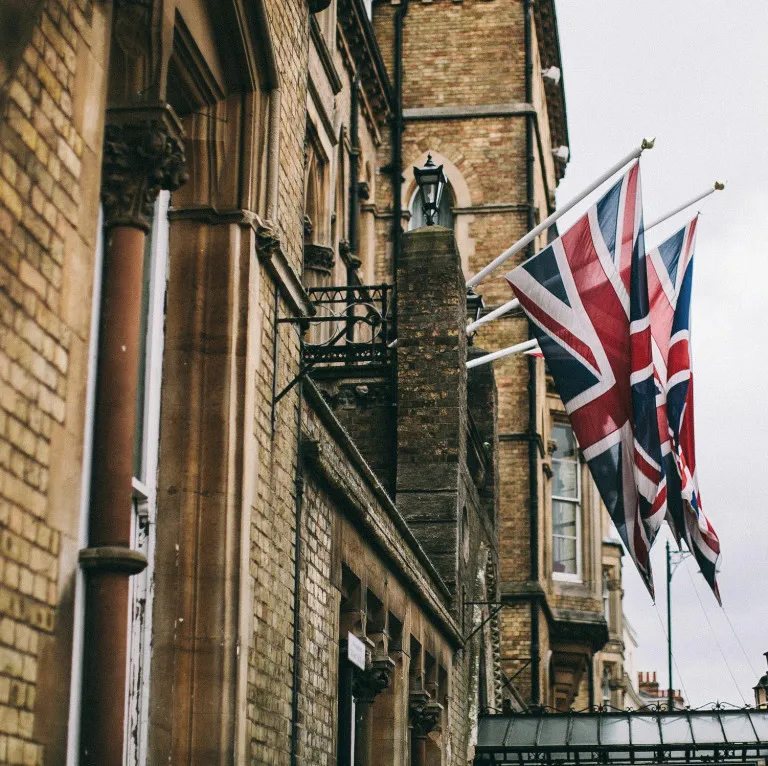
Indefinite Leave to Remain
Get in touch with us for expert, success-oriented assistance for indefinite leave to remain, long residence and settlement in the UK.

Global Immigration
We provide global immigration support in several other countries including the USA, Canada, Spain, Portugal, Germany, New Zealand, Ireland, and France.
In the news
Get in touch with our team
Learn about our professional services and find out how we can help.
First-timer's guide to Poland

Sep 29, 2023 • 7 min read

Everything you need to know about visiting Poland for the first time © Imgorthand / Getty Images
Supported by
Poland has a long, fascinating, sometimes tragic history, played out against a backdrop of royal castles and palaces, picturesque old towns and incredible landscapes.
From the Carpathian Mountains in the south to the Great Masurian Lakes in the north, Poland is a dream destination if you’re up for an activity-driven vacation – hiking, cycling and kayaking opportunities are abundant, plus there’s skiing in the winter.
If urban pleasures are more your thing, vibrant cities such as the capital Warsaw , the atmospheric old capital Kraków , and revamped 19th-century industrial powerhouse Łódź do not disappoint. Each offers masses of cultural attractions alongside delicious dining and lively nightlife scenes – all at very affordable prices.
As Poland is a big country packed with travel possibilities, you’re sure to have questions. Here are some tips and practical advice on how to get the most out of your first trip to Poland.
When should I go to Poland?
There’s no time of the year to specifically avoid when scheduling a trip. For fine weather and the chance to join summer festivals and events such as Kraków’s Jewish Culture Festival and Warsaw’s Summer Jazz Days , come between May and early September.
Towns and cities come alive as the warmer temperatures tempt everyone outside for alfresco dining and drinking. This is peak season, too, for visiting Poland’s 23 national parks.
The countryside in spring and autumn can also be very beautiful. Winter is the quietest season, except in ski resorts such as Zakopane . Come prepared for frigid temperatures and sloshing through snow and rain.
Compensations include low season rates at hotels and plenty of excellent museums in the major cities in which to shelter from the elements. Autumn through early spring is also when performing arts institutions such as Warsaw’s Teatr Wielki and Filharmonia Narodowa run their season of top-grade shows.

How much time do I need to visit Poland?
Two, or better, three days is the minimum needed for a short city break to either Warsaw or Kraków. You won’t have enough time to cover everything, but you will be able to get a feel for these places and tick off the main attractions.
If you’re prepared to move around quickly, you could cram in more of Poland over 10 days to two weeks, adding to your itinerary metropolises such as Gdańsk (also close to the Baltic seaside resort of Sopot ) and Łódź, as well as smaller historic towns like the artists’ retreat Kazimierz Dolny and Zamość , a perfectly preserved 16th-century Renaissance town.
Have a month to spare? Now you’re talking! This will give you the opportunity to explore rural backwaters and national parks such as World Heritage-listed Białowieża National Park , home to some 800 free-roaming European bison, Poland’s national symbol and Europe’s largest land mammal; and Karkonosze National Park with its spectacular Ice Age glacier-carved landscapes.
Is it easy to get in and around Poland?
Poland is tethered to the world by international flights. The capital’s main airport is the central Warsaw Chopin Airport , with Modlin Airport , 39km (24 miles) north of the city, handling budget carriers.
Other international airports include Gdańsk Lech Wałęsa Airport, Katowice Airport, Kraków John Paul II International Airport, Łódż Airport and Wrocław Airport . There are also excellent rail and bus links, especially with Western European neighbors, including overnight train services to Berlin and Vienna .
Getting around Poland itself is a breeze. There’s a comprehensive system of buses and trains offering both frequent services and affordable prices. For more remote parts, including nearly all the national parks, you’ll really need your own set of wheels.
Hiring a car is straightforward and the roads have vastly improved in recent years (although you will encounter some unsealed roads in the most rural regions). Major cities and towns all have decent public transport, and you can easily cover historic old town centers on foot.
Top things to do in Poland
Kraków, the former royal capital, is a stunner with its heady blend of history and harmonious architecture. At its heart are the vast Rynek Główny, Europe’s largest medieval marketplace, and the magnificent Wawel Royal Castle , on a hill above the Old Town.
But that's just the start – every part of the city is fascinating, from the former Jewish district of Kazimierz and its lively nightlife to the atomic fallout shelters of Nowa Huta .
Warsaw had to be almost completely rebuilt after WWII. The powerful Warsaw Rising Museum focuses on the darkest hours of WWII, while the Museum of Warsaw superbly documents the city's rise, fall and resurrection. Also don’t miss the award-winning POLIN Museum of the History of Polish Jews , and regal Wilanów Palace and surrounding lush parkland.
Toruń , a walled Gothic city on the Vistula River, miraculously escaped WWII intact. Wander through the UNESCO-listed Old Town crammed with museums, churches, grand mansions and squares. When you’re flagging, perk up with a peppery gingerbread cookie, Toruń’s signature snack, which you can make yourself at the Gingerbread Museum .
The UNESCO-listed Białowieża National Park holds one of Europe’s last vestiges of primeval forest, which you can visit in the company of a guide. The bison, which was once extinct outside zoos, has been successfully reintroduced here, although your best bet for seeing these magnificent animals is the region’s European Bison Show Reserve .

My favorite thing to do in Poland
I’m a huge fan of street art and Łódź has embraced this public form of creative expression unlike anywhere else in Poland - the city is practically one giant art gallery! There are well over 200 public works of art ranging from massive painted murals to installations involving neon, nails and porcelain tiles.
Among my favorites are Pasaż Róży, a dazzling courtyard completely plastered with mirror fragments arranged in swirling rose patterns, and Wiedźmin, a 70m tall mural designed by Jakub Rebelka on the sides of adjacent apartment blocks – it’s a homage to the Witcher series of fantasy books by Łódź-based author Andrzej Sapkowski.
How much money do I need for Poland?
Like everywhere in Europe in recent times, prices have been rising in Poland. That said, the country offers great value, especially when it comes to accommodation, dining out and entertainment. Getting around by public transport is also a bargain.
- Hostel room: 60 zł
- Basic room for two: 200 zł
- Self-catering apartment (including Airbnb): 120 zł
- Public transport ticket: 3.40 zł
- Coffee: 15-20 zł
- Sandwich: 15 zł
- Dinner for two: 150-200 zł
- Beer/pint at the bar: 12 zł
Is Poland part of the EU?
Yes, which means if you’re crossing into the country from neighboring EU countries – the Czech Republic (Czechia), Germany , Lithuania and Slovakia – there are no border formalities. However, rather than the euro, Poland’s national currency is the złoty (zł, sometimes also abbreviated as PLN) which dates back to the 14th century.
Most places accept card or electronic payments but sometimes you will need to pay in cash so it’s handy to keep some money in your wallet.
How easy is it to get online?
Very easy. Depending on your home mobile phone/internet plans, you should be able to surf the web and stay in touch using a smartphone or tablet. There are plenty of wifi hotspots and some of them are free.

What’s Polish food like?
Locals like nothing better than scoffing comfort foods such as pączki (rose-jam filled doughnuts) or a plate of pierogi , dough dumplings stuffed with anything from cottage cheese, potato and meat to blueberries or other fruits.
Traditional cooking is rustic and flavorful and can be summed up by Poland’s signature kiełbasa sausages. These are usually made with pork and various seasonings, though other meats, like beef and veal, can be added.
Beyond such staples Polish cuisine also includes hearty soups and dishes such as beef tartare. In the major cities and towns, there’s a wide choice of world cuisines alongside creative renditions of vegetarian and vegan dishes.
Editor's note: This article was sponsored by Poland NTO after the city was selected for Lonely Planet's Best in Travel 2024. Sponsors do not influence a destination's inclusion in Best In Travel, which is determined solely by Lonely Planet's editorial team.
Supported by Poland NTO
As a travel entertainment and inspirational media outlet, we sometimes incorporate brand sponsors into our efforts. This activity is clearly labeled across our platforms.
Funding for this story is provided by Poland NTO. All editorial views are those of Lonely Planet alone and reflect our policy of editorial independence and impartiality.
With sponsored content, both Lonely Planet and our brand partners have specific responsibilities:
Brand partner
Only provides financial support and their logo. Doesn't make revisions or approve the story.
Lonely Planet
We fully control the creative and editorial approach, just like any other featured story.
Explore related stories

Tips & Advice
Apr 27, 2024 • 17 min read
Looking to travel to Germany in 2024? Here's your guide to maximizing points and miles to get there with all the perks.

Apr 15, 2024 • 10 min read

Feb 26, 2024 • 4 min read

Feb 23, 2024 • 5 min read

Jan 19, 2024 • 11 min read

Jan 5, 2024 • 20 min read

Dec 19, 2023 • 6 min read

Nov 11, 2023 • 8 min read

Nov 6, 2023 • 5 min read

Oct 20, 2023 • 8 min read
We've detected unusual activity from your computer network
To continue, please click the box below to let us know you're not a robot.
Why did this happen?
Please make sure your browser supports JavaScript and cookies and that you are not blocking them from loading. For more information you can review our Terms of Service and Cookie Policy .
For inquiries related to this message please contact our support team and provide the reference ID below.
Rishi Sunak warns of 'growing threats' as he announces tens of billions of pounds in extra defence funding
Making the announcement on a visit to Poland, the prime minister says the additional funding represents the "biggest strengthening of our national defence in a generation to meet the challenge of an increasingly dangerous world".

Political editor @BethRigby
Tuesday 23 April 2024 18:25, UK
Please use Chrome browser for a more accessible video player
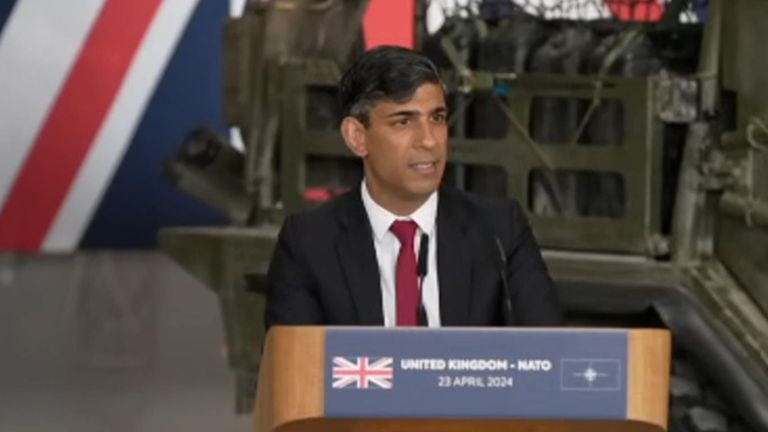
Rishi Sunak is to increase UK defence spending to 2.5% of GDP by 2030 as he warns European allies that the continent is at a "turning point" in the face of the growing threats from Russia, Iran and China.
Speaking alongside NATO Secretary General Jens Stoltenberg, the UK prime minister said he planned to steadily increase defence spending by the end of the decade, rising to 2.4% a year until 2027/28 - then hitting 2.5% by 2030/31.
Funding will rise from £64.6bn in 2024 to £78.2bn in 2028, and then jump to £87bn in 2030/31.
The government said the commitment amounted to an additional £75bn in funding over the next six years and would see the UK remain "by far the second largest defence spender in NATO after the US".
Labour's Steve Reed told Sky News' Politics Hub with Sophy Ridge that his party "would want to match" the pledge from the prime minister.
But he accused Mr Sunak of "belatedly seeing the defence of our country as important" after his performance in government on defence.
Politics latest: PM gives news conference after defence spending pledge
Making the announcement on a visit to Poland, Mr Sunak said the additional funding represented the "biggest strengthening of our national defence in a generation to meet the challenge of an increasingly dangerous world".
He revealed a further £10bn would be spent over the next decade on munitions production and modernisation of the armed forces, and that at least 5% of the defence budget would be committed to research and development.
The prime minister said: "An axis of autocratic states like Russia, Iran and China are increasingly working together to undermine democracies and reshape the world order.
"They are also investing heavily in their own militaries and in cyber capabilities and in low-cost technology, like the Shahed attack drones Iran fired towards Israel last weekend."
He added that this posed a "direct threat to the lives and livelihoods of people in the UK, as well as across Europe and the wider world", as he spoke of the need to take "further action now to deter these growing threats".
Be the first to get Breaking News
Install the Sky News app for free

Asked by Sky News whether the UK had entered a "pre-war era", the prime minister said: "We have to recognise that the world... is a more dangerous place".
But he said the threats from the likes of Russia were "nothing new" - they just came at a new "pace and intensity", adding: "That's why it's important that we make this investment and we make this investment now."
However, Mr Sunak said the UK was approaching them "from a position of strength and confidence".
Pointing to Ukraine, he said recent gains by the Russians were equivalent to taking over Basildon and Eastbourne, adding: "The allies are united, defence spending is growing across Europe and NATO has two new members.
"If you take a step back, you know, Russia is not in any way succeeding."
The prime minister added: "We have been making the right investments. NATO is strong. Our alliance is strong. People are doing the right thing. And as you know... Russia has not succeeded.
"But we can't be complacent. And that's why [we are making] the announcement today."

Today's commitment comes after growing pressure on the prime minister to increase defence spending in the face of increasing threats from hostile states.
Last month, two serving ministers - Anne-Marie Trevelyan and Tom Tugendhat - publicly urged the government to invest at a "much greater pace".
The House of Commons' spending watchdog, the Public Accounts Committee, also warned the gap between the Ministry of Defence's budget and the cost of the UK's desired military capabilities had risen by £16.9bn - the largest deficit ever - despite a promised injection of more than £46bn over the next decade.
The increase in defence spending will go down well with Mr Sunak's supporters among the Tory grassroots and comes fresh from his landmark Rwanda legislation being passed, with the prime minister emphatic that a regular rhythm of flights will be taking off from July.
Both announcements are part of a publicity blitz for the embattled leader as he looks to get on the front foot ahead of next week's local elections, aware that a disastrous night could put him into freefall.

Keep up with all the latest news from the UK and around the world by following Sky News
But Labour said the Conservatives had "shown time and time again that they cannot be trusted on defence".
Shadow defence minister John Healey said his party wanted to see "a fully funded plan to reach 2.5%", so would "examine the detail of the announcement closely".
However, he added: "The British public will judge ministers by what they do not what they say.
"Since 2010, the Conservatives have wasted more than £15bn mismanaging defence procurement, shrunk the army to its smallest size since Napoleon, missed their recruitment targets every year, and allowed morale to fall to record lows.
"Labour will conduct a strategic defence and security review in the first year in government to get to grips with the threats we face, the state of our armed forces, and the resources required."
Related Topics
- Conservatives
- Rishi Sunak
Nomadic Matt's Travel Site
Travel Better, Cheaper, Longer
Poland Travel Guide
Last Updated: April 18, 2024
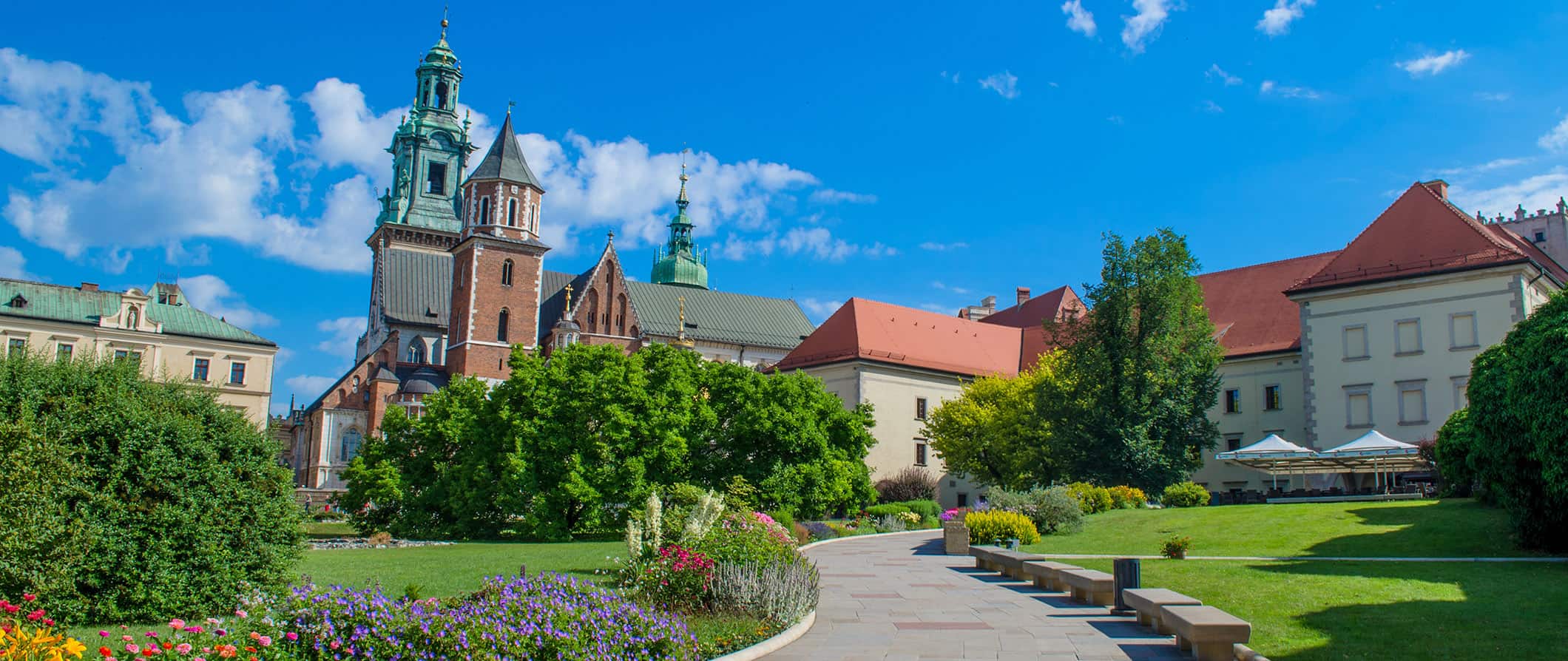
Poland is one of the most underrated destinations in Europe . With its incredible history and UNESCO World Heritage Sites, cheap food, world-class museums, wild nightlife, and plentiful nature, Poland is a budget-travel paradise. It has everything you’ll find in Western Europe — but for half the price and with half the crowds!
Most travelers visit Krakow or spend a day or two in Warsaw before departing to a neighboring country. While that’s better than nothing, Poland has so much more to offer.
From beautiful parks to medieval cities to cheap beer to rugged coastlines, you can spend weeks here and still only scratch the surface.
Best of all, there are far fewer tourists here than elsewhere in Europe so it’s easy to have a more local, more authentic experience.
Use this travel guide to Poland to plan your trip, save money, and make the most of your time in this budget-travel paradise!
Table of Contents
- Things to See and Do
- Typical Costs
- Suggested Budget
- Money-Saving Tips
- Where to Stay
- How to Get Around
- How to Stay Safe
- Best Places to Book Your Trip
- Related Blogs on Poland
Click Here for City Guides
Top 5 things to see and do in poland.
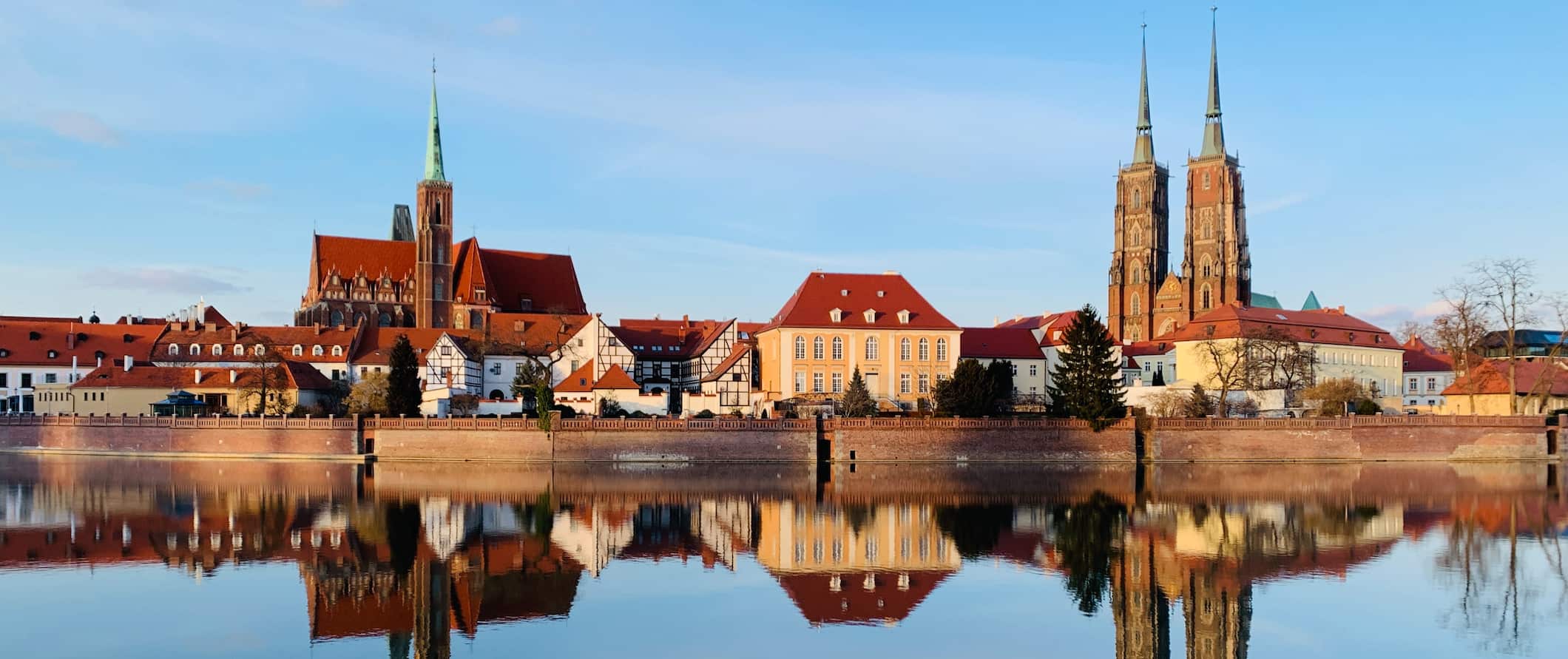
1. Visit Auschwitz
Auschwitz-Birkenau is the site of a former concentration camp used by the Nazis during World War II. Approximately 1.3 million people were sent here and an astounding 1.1 million of them were killed. When the camp was liberated in 1945, there were just 7,000 people there, many of whom were incredibly ill or sick. A visit here is sobering but shouldn’t be missed. Wear comfortable shoes as there is a lot of walking and keep in mind you’re allowed to take photographs but be considerate that this is a somber place. Admission is free, but the experience is much more meaningful with a guide who can provide context. Expect to pay around 550 PLN for a guide.
2. Explore Krakow
Krakow is a student city and one of the biggest tourist destinations in the country (people love coming here to party). This city is beautiful, inexpensive, and is filled with plenty to do. Be sure to check out the castle, the nearby salt mines, and underground ruins. The Christmas market in December is amazing too!
3. See Wroclaw
Wroclaw is one of Poland’s lesser-known destinations. Home to some amazing architecture, this small city is beautiful, inexpensive, and free of crowds. Be sure to see the Raclawice Panorama, which depicts the Battle of Raclawice that took place during the Kosciuszko Uprising in the 1790s.
4. Wander through Bialowieza National Park
This national park on the Belarus border contains the last remains of a primeval forest that once covered most of Europe. Today, it’s a UNESCO World Heritage Site and Biosphere Reserve, and remarkably, the only place where European bison still live in the wild. Bialowieza National Park is the oldest in Poland. Stretching 105 square kilometers (40 square miles), it’s thriving with biological diversity. Visitors can hike, walk, and bike in nature and you can also try unique local cuisine from Bialowieza, which is influenced by nearby Belarus and Ukraine. Some local favorites include Pielmieni meat dumplings, Mrowisko sweet cakes, and Zubr (bison) beer. Admission is 16 PLN. If you want a guide, expect to pay around 250 PLN.
5. Discover Warsaw
Explore the old and new towns, see the castle, binge on pierogis, and visit the city’s amazing museums that highlight the struggles of the Warsaw Uprising and the ghettoization of the Jews during World War II. Be sure to spend time wandering Warsaw’s Old Town, which is a UNESCO World Heritage Site filled with history, art, culture, and science. Savor a hearty Polish meal at one of the many ‘milk bars’ and check out Hala Koszyki, a funky food market hall with nearly 20 different eateries and many tasty offerings.
Other Things to See and Do in Poland
1. take a free walking tour.
One of the best things you can do when you arrive in a new destination is take a walking tour. It’s a great way to get the lay of the land and learn about the culture, people, and history of the destination. Walkative offers free tours in Warsaw, Krakow, Gdansk, Poznan, and a few other cities around the country. These tours provide much more insight than any guidebook. Just be sure to tip your guides at the end!
2. Tour the Szczecin underground tunnels
These concrete tunnels lie beneath the city of Szczecin in northwest Poland (near the border with Germany). The tunnels were designated as a bomb shelter in the 1940s and then used as a fallout shelter during the Cold War. Located 17 meters (56 feet) below ground, here you can see artifacts from World War II and learn how the shelter was used during the war. You’ll also learn how the tunnels were reinforced during the Cold War to survive a nuclear attack. Tours last around an hour and admission is 38 PLN. It can get cold in the tunnels so bring a sweater.
3. Visit a national park
Poland has 23 different national parks. Ojcowski National Park (near Krakow) is a small park filled with stunning caves and castles while Slowinski National Park (on the Baltic Coast), Biebrzanski, Narwianski, and Poleski National Parks (all located in the northeast) offer great bird watching. Bialowieza National Park (near Belarus) is where you can see Europe’s only wild bison. They’re a great way to get away from the crowds and stretch your legs, especially in the summer when the weather is nice, or in the fall when the leaves are changing. There are usually lodges and campgrounds near each park as well if you want to disconnect for a few days.
4. Explore Wawel Castle
This site in Krakow is one of the best-preserved medieval castles in all of Poland. Castles here are rare as most were mostly destroyed over the years (the vast majority of which being destroyed during World War II). Built in the 13th century under the order of King Casimir III, this UNESCO World Heritage Site is home to an art museum that has medieval tapestries, the former Polish crown jewels, and Ottoman Empire treasures. Admission ranges from 5-46 PLN depending on what you want to see. On Mondays in the summer, free tickets are available for the Crown Treasury and Armory. There are seasonal discounts from September to October as well for the Dragon’s Den, Sandomierska Tower, and The Lost Wawel archeological exhibition, and The Church of St. Gereon.
5. Visit the Wooden Churches
Tucked away in the southeastern corner of the country, The Wooden Churches of Southern Lesser Poland consists of six Roman Catholic churches that reflect various periods of religious architecture in Poland: from Medieval to Gothic, Rococo, Baroque, as well as the occasional onion dome and Greek cross. Dating back to the 15th and 16th centuries, the interiors of these UNESCO churches were intricately painted and carved by hand, with every inch of the church a veritable work of art. Dress appropriately when visiting as these are sites of religious worship.
6. Tour the Wieliczka Salt Mine
This mine produced table salt and was first used in the 13th century. It became one of Krakow’s main industries and was in use until 2007. Today, it’s a UNESCO World Heritage Site where you can marvel over the cavernous chambers, statues, chapels, chandeliers, and cathedrals — all carved out of salt and stone by the miners. The mines reach depths of over 300 meters (984 feet) and are also home to contemporary works of art. The mine is just 13 kilometers (8 miles) outside the city. Admission is 109 PLN.
7. Stroll through Gdansk
Formerly known as Danzig, Gdansk is a beautiful coastal city in northern Poland. Much of the city was rebuilt after World War II but you can still find plenty of history here. Be sure to spend some time wandering the old town and checking out the local markets and small artisan shops. And don’t miss the Basilica of St. Mary of the Assumption of the Blessed Virgin Mary, the city’s towering 16th-century gothic church. There’s also an excellent World War II museum here too.
8. Admire Kalwaria Zebrzydowska
Located an hour from Krakow, this Catholic monastery dates back to the 17th century. Built in the Mannerist (Late Renaissance) architectural style, it was declared a UNESCO Heritage Site in 1999. Surrounding the monastery are over 5 kilometers (3 miles) of pilgrimage routes and 42 chapels and churches which have been in regular use for over 400 years. Tours are free (though they must be booked in advance) and last around an hour. Donations are welcome.
9. Head to Lublin
Lublin is eastern Poland’s main city. It was an important trading and military center during the Middle Ages. It developed its own architectural style at the end of the 16th century, which has become known as the Lublin Renaissance as rulers here brought in many Italian architects to expand the city. Be sure to visit the castle, the monastery, and the old town (which is sometimes called “Little Krakow” owing to its similarities with Krakow’s old town). There’s also the sobering State Museum that illuminates the atrocities of the death camps of World War II.
10. See the world’s tallest pope statue
Located 2.5 hours south of Warsaw in Czestochowa, this statue of Pope John Paul II (who was born in Poland) stands 13.8 meters (42 feet) tall and is made of fiberglass. There really isn’t much else to see here but it makes for a quirky photo op if you’re in the area!
11. Visit the Exploseum
This abandoned Nazi explosive plant, founded by Alfred Nobel (the inventor of dynamite), is now a museum open to the public. Here visitors learn about Alfred Nobel, his company, what life was like for Polish residents during the German occupation, weapons used during the war, as well as modern weapons of war. It’s an interesting and eye-opening museum. Tucked away in Bydgoszcz (3 hours north of Warsaw), the museum takes 1-2 hours to explore. Admission is 17 PLN and includes a guide. Children under 6 are not allowed to enter.
12. Visit the Churches of Peace
These are the biggest timber-framed churches in Europe. Located in Jawor and Swidnica (near Wroclaw), they were built in the mid-17th century and were the first Lutheran churches constructed in Roman Catholic Poland. Since the churches were not Catholic, they were only allowed to be built from wood and could not have steeples or bells (Lutherans were not allowed to construct stone churches that could compete with the dominant religion). Today they are UNESCO World Heritage Sites. Admission is 12 PLN and an audio tour is available. Just be sure to dress appropriately.
13. See the World War II Museum in Gdansk
The Museum of the Second World War opened in 2008 and is one of the best museums in the country. It’s an immersive experience that really opens your eyes to the death and destruction that the war unleashed — in Poland and beyond. In addition to the weapons, clothing, letters, and maps there is an entire recreated street to give you a palpable sense of what it would have been like to live through the worst of the war. Admission 25 PLN. For an extra 2 PLN, you can also see their temporary expositions.
14. Explore the Tatra Mountains
This mountain range, part of the Carpathian Mountains, is located near the border of Poland and Slovakia. It’s here where you’ll find Tatra National Park (a protected UNESCO site), a great destination for hiking. Spanning over 200 square kilometers (77 square miles), there are plenty of day hikes available ranging from 2-12 hours. While you can’t camp in the park, there are mountain huts if you book in advance (they cost 35-70 PLN per night depending on where you stay). Make sure you check the weather before you go and bring ample water and sunscreen for your hike.
15. Take in the Warsaw Rising Museum
This museum is a tribute to the people of Warsaw who fought and died for Polish independence. Opened in 2004, the museum is home to hundreds of artifacts from the uprising of 1944, when Polish citizens rebelled against German occupation. The uprising lasted 63 days and was the largest resistance movement during World War II. Some 15,000 members of the Polish resistance were killed, as well as 2,000-17,000 German troops. There are weapons, clothing, letters, and interactive films that shed light on one of the most important events in Polish history. Admission is 25 PLN.
16. Tour Schlinder’s Factory
Oskar Schindler was a German industrialist who saved over 1,200 Jews during the war. His story was made famous by Steven Spielberg’s 1993 film, Schindler’s List . Located in his actual factory in Krakow, this museum offers a thorough trip through the history of World War II, highlighting how he saved so many people during the war while bankrupting himself in the process. Admission starts at 10 PLN or 72 PLN for a guided tour. There are a number of limited free tickets on Mondays.
For more information on specific cities in Poland, check out these guides:
- Krakow Travel Guide
- Warsaw Travel Guide
Poland Travel Costs
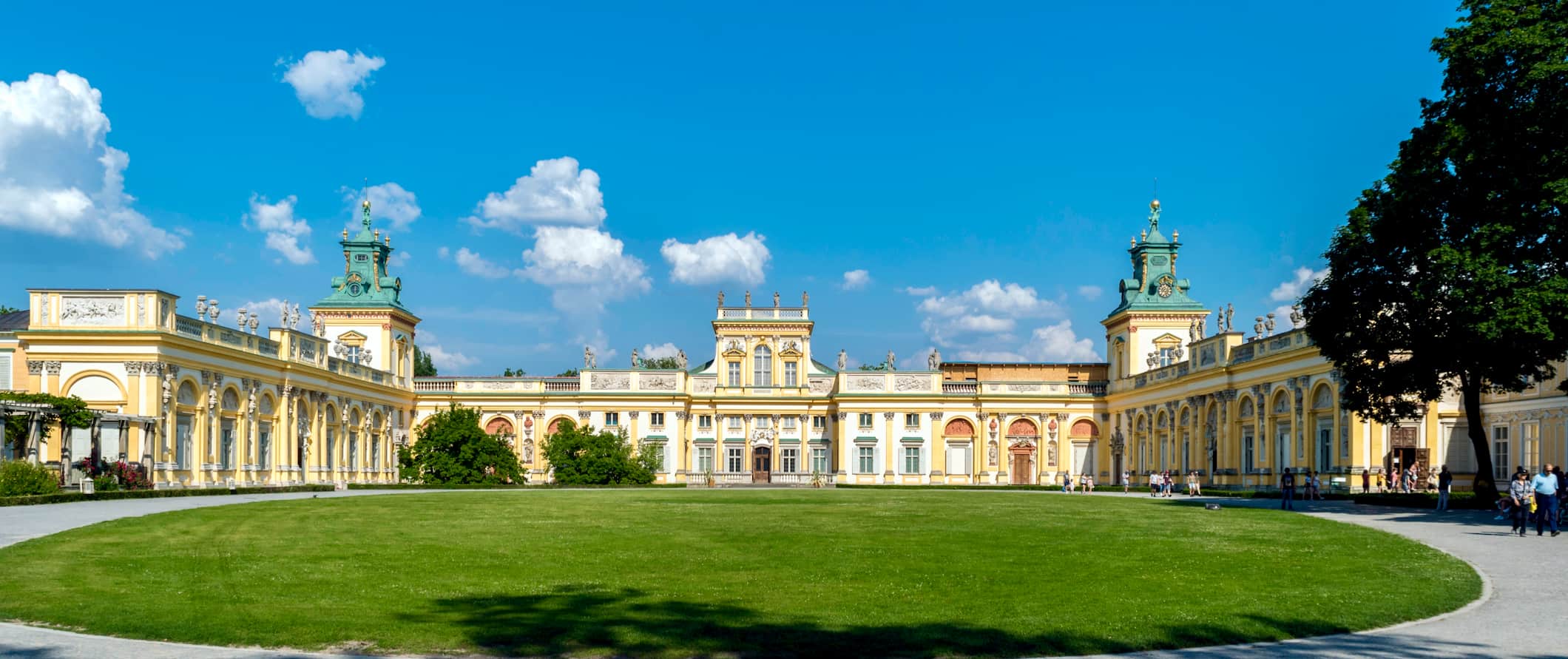
Accommodation – A bed in a dorm with 8-10 beds costs 55-95 PLN per night. Private rooms cost 120-200 PLN. Free Wi-Fi is standard and most hostels also have self-catering facilities. Free breakfast is available at many hostels too.
Budget two-star hotels start at 150-275 PLN per night. Free Wi-Fi is common and many hotels also include a simple free breakfast as well. For a three-star hotel, expect to pay at least 300-500 PLN.
Airbnb is available throughout the country with private rooms starting at 75 PLN per night while entire homes/apartments cost at least 100 PLN. Prices are usually double these numbers, however, so be sure to book early to find the best deals.
There are plenty of campgrounds throughout the country for those traveling with a tent. Expect to pay around 40 PLN per night for a basic tent plot for two people without electricity. Wild camping is tolerated if you’re in the mountains and as long as you are not in a national park (camping in national parks is strictly prohibited in Poland).
Food – Polish meals are quite hearty, usually containing potatoes, meat (pork and chicken), and seasonal produce like beets or cabbage. Stews and soups (like borscht, a beet soup) are popular and can be found at most local restaurants. Pierogis are also a common staple and can be found everywhere for cheap. For some traditional Polish food, try beef tongue or pork knuckles. The country also has lots of traditional desserts too, like paczki (a Polish donut) and makowiec (poppy-seed cake).
Most cheap meals of traditional cuisine (served at local restaurants called bar mleczny or “milk bars”) cost around 35 PLN. For a three-course meal with a drink and table service, expect to pay around 75 PLN. Fast food (think McDonald’s) costs 25 PLN for a combo meal.
A large pizza costs around 25-30 PLN while Chinese food costs around 15-20 PLN. Zapiekanki , a popular Polish street snack that’s like a pizza on a baguette, costs 5-6 PLN.
Beer costs 8-12 PLN, while a glass of wine is a minimum of 12 PLN. A latte or cappuccino is around 11 PLN. Bottled water is 5 PLN.
If you buy your own groceries and cook your meals, expect to pay around 150-165 PLN per week for basic staples like pasta, rice, seasonal vegetables, and some meat. Local markets are the cheapest places to buy fresh produce. Biedronka is a cheap grocery store that’s everywhere.
Backpacking Poland Suggested Budgets
On a backpacker budget of 175 PLN per day, you can stay in a hostel dorm, cook all your meals, limit your drinking, take public transportation to get around, and do some cheap activities like free walking tours and visiting the free museums. If you plan on drinking, add 10-20 PLN to your budget per day.
On a mid-range budget of 330 PLN per day, you can stay in a private Airbnb or private hostel room, eat out for most meals at cheap milk bars, enjoy a couple of drinks, take the occasional taxi to get around, and do more paid activities like visiting the Uprising Museum or taking a tour of Auschwitz.
On a “luxury” budget of 600 PLN or more per day, you can stay in a hotel, eat out anywhere you want, drink more, rent a car to get around, and do whatever guided tours and activities you want. This is just the ground floor for luxury though. The sky is the limit!
You can use the chart below to get some idea of how much you need to budget daily, depending on your travel style. Keep in mind these are daily averages — some days you’ll spend more, some days you’ll spend less (you might spend less every day). We just want to give you a general idea of how to make your budget. Prices are in PLN.
Poland Travel Guide: Money-Saving Tips
Poland is a very affordable country so there aren’t too many tips out there to help you save. You won’t be spending a lot of money anyways unless you go out of your way to spend money. That being said, there are still a few extra ways you can save money while you visit Poland:
- Eat at milk bars – You’ll get a taste of Poland at a mleczny (milk bars). Hearty pierogis, homemade soups, plenty of meat, and a local beer usually cost around 30 PLN. While they are a no-frills choice, the food is tasty and filling.
- Get a tourist card – Certain cities, like Krakow and Warsaw, offer tourist cards that provide unlimited public transportation and free or discounted museum access. If you plan to see lots of sites, be sure to go to the local tourism office and pick up one of these cards. They usually cost 100-160 PLN.
- Take advantage of train specials – Poland has various special train tickets that can save you money during your visit. For example, the Weekend Ticket ( Bilet Weekendowy ) is available for several train lines and lasts from Friday night at 7pm to Monday at 6am and allows for unlimited trips within Poland. It’s a great way to see the country if you need to cover a lot of ground in a short time!
- Watch your drinking – Cities like Krakow are known for their parties, pub crawls, and long nights out. These can add up quickly, so watch how much you drink. Start off by grabbing your favorite drinks from a grocery store first whenever possible. You’ll save a ton that way.
- Take a free walking tour – Free tours from companies like Walkative can be found in Poland’s larger cities. They are a great way to explore the city while learning about the history, culture, and architecture. Just be sure to tip!
- Use ridesharing apps – Ridesharing apps like BlaBlaCar are a great way to get around the country for cheap. You simply download the app, find someone looking for passengers, pay a small fee, and go! Everyone is rated and verified, and it’s usually more convenient (and cheaper) than other forms of transportation. For travel within a city, use Uber. It’s cheaper than the local taxis.
- Stay with a local – While accommodation is not expensive in Poland, Couchsurfing is a great way to lower your accommodation costs. Not only will you save money by getting a free place to stay but you’ll also be able to make a local friend and get insider knowledge about the country.
- Bike share – For 10 PLN, you can register for Vetrulio, a bike-rental company in Warsaw. After you sign up, bike use is free for 20 minutes, making it essentially free to bounce around the city during your visit. After 20 minutes (up to the first hour) it’s just 1 PLN and then 3 PLN for the next hour.
- Bring a water bottle – The tap water in Poland is safe to drink so bring a reusable water bottle to save money and reduce your plastic use. LifeStraw is my go-to brand as their bottles have built in filters to ensure your water is always clean and safe.
Where to Stay in Poland
Accommodation in Poland is very affordable. Even if you don’t want to do the whole hostel thing, you can find really comfortable and inexpensive hotels throughout the country. Here are some of my favorite places to stay in Poland:
- Oki Doki Old Town (Warsaw)
- Warsaw Centrum Hostel (Warsaw)
- Greg and Tom Hostel (Krakow)
- Let’s Rock (Krakow)
- Slowgate Hostel (Gdansk)
- Mleczarnia Hostel (Wroclaw)
How to Get Around Poland
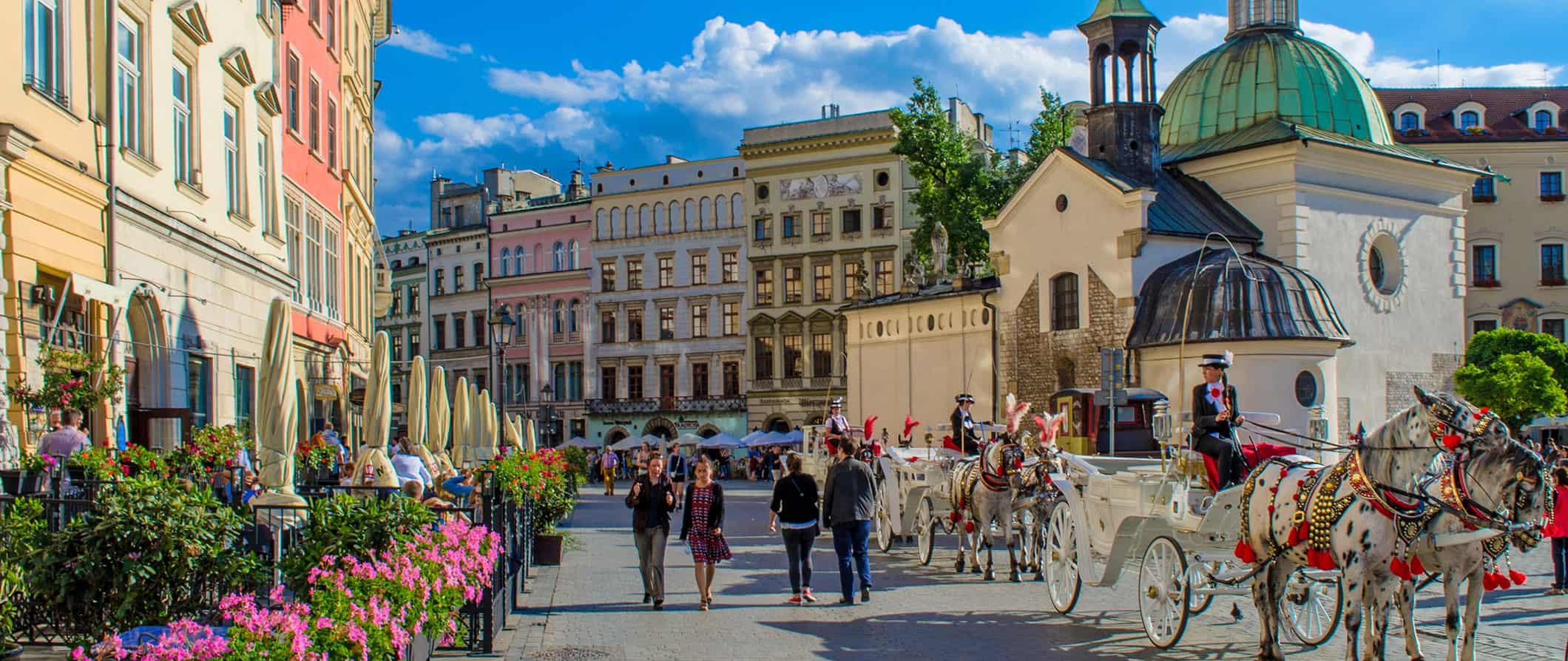
Public transportation – Buses and trams are the most common ways to get around in each city. Only Warsaw has a subway system. Public buses and trams cost around 3-5 PLN for a one-way ride, depending on how far you go. For a single-day pass, expect prices to start at 15 PLN per person. In Warsaw, a three-day public transportation pass starts at 36 PLN.
Bus – Poland has an extensive bus network so you can easily travel around the entire country by bus if you’re on a budget. Flixbus (and its partner company, Polski Bus) are the best options as they have comfortable buses for affordable prices. For example, the 4-hour journey from Warsaw to Krakow costs around 44 PLN while the 7-hour ride to Gdansk from Warsaw costs around 50 PLN.
The buses have bathrooms, electrical outlets, and Wi-Fi, making them a good choice for budget travelers.
Train – While trains aren’t as cheap as buses, they’re a good option for long-distance trips. There are several different companies operating trains here with a variety of train types. The three most important to travelers are the ExpressInterCity Premium (EIP), ExpressInterCity (EIC), and InterCity (IC).
The EIP trains are fast and operate between major cities. They have first-class and second-class seats and reservations are mandatory. These are the newest trains and have a dining car if you’re looking to eat during your trip. They can be pricey if you book on the day, so try to book in advance for the best prices.
EIC trains also run between major cities but are a little slower. They are still perfectly safe and comfortable, with a dining car and business class seats available. Since the services aren’t as great, the prices here are lower than on EIP trains. There are first- and second-class seats as well.
IC trains are the cheapest of the three but also the slowest as they make more stops. They have basic amenities such as power outlets.
InterRegio (IR) trains are another option as they stop in most medium-sized cities. There are no first-class or seat reservations here, so they can be a bit busier and sometimes won’t have space for luggage. But they are affordable!
The train from Warsaw to Gdansk costs around 175 PLN and takes around 2.5 hours while the 2-hour train from Warsaw to Krakow is just 50 PLN.
To find routes and prices for trains around Europe, use Trainline .
Flying – Flying around Poland is relatively cheap thanks to budget airlines like Ryanair. From Warsaw, you can get to pretty much any city in the country for under 325 PLN, round trip.
For example, Warsaw to Krakow takes just under an hour and costs 280 PLN while Warsaw to Gdansk takes an hour and costs 180 PLN.
It’s also easy to get to/from Poland via plane as Wizz and Ryanair fly all over the continent. You can find flights for as little as 50 PLN to destinations all around Europe if you book early and are flexible.
Rideshare – BlaBlaCar is the best ride-sharing option for intercity travel. It’s cheap and fast, and drivers are verified and have reviews so it’s quite safe. Just make sure you have flexible plans as drivers are often late or change their plans entirely.
Car rental – Car rentals start at 75 PLN per day for a multi-day rental. Drivers must have had their license for at least one year and an International Driving Permit (IDP) is required for citizens of certain countries.
For the best car rental prices, use Discover Cars .
When to Go to Poland
The best (and most popular) time to visit Poland is during the summer, from June to August. Temperatures are hot and rain is infrequent. Expect daily highs between 17-25°C (63-77°F) during this time (and a 1-3 degree difference between Gdansk in the north to Krakow in the south).
The summer is also the busiest time of the year for tourism, though and you’ll only really notice it in the main tourist cities (such as Warsaw and Krakow).
The shoulder season of late April-May and September-October are great times to visit as well, with temperatures ranging from 5-15°C (41-59°F). You’ll beat the crowd and have much milder temperatures. There’s more rain in the spring but you’ll get the stunning autumn colors in the fall which makes for a scenic backdrop to your trip.
Winter in Poland can be quite cold, with temperatures dropping to around -1°C (30°F) during the day and -5°C (23°F) overnight. Snow is common, which can affect conditions if you’re traveling by car. In short, I wouldn’t recommend a winter visit unless you plan on going skiing or taking part in other winter activities such as visiting the Christmas markets.
How to Stay Safe in Poland
Poland is a very safe country. The risk of theft or getting pickpocketed is much lower here than it is in other parts of Europe. Of course, you should always keep your valuables secure and out of sight when riding public transportation and while you’re in popular tourist areas.
Taxi scams are rare, but always make sure your driver is using the meter. If they aren’t, ask them to stop and find a taxi that will. To avoid fake taxis, have your hotel/hostel staff call a taxi for you to ensure you aren’t scammed.
ATM skimming (when criminals attach a covert device to an ATM that can steal your information) can occur here, so always make sure you use verified ATMs. If you can, go into the bank to withdraw your money (as opposed to using outdoor ATMs, which are easier to tamper with).
If you’re worried about getting ripped off, you can read about common travel scams to avoid here .
Solo female travelers should generally feel safe here, however, the standard precautions apply (never leave your drink unattended at the bar, never walk home alone at night intoxicated, etc.).
If you rent a vehicle here, don’t leave any valuables in it overnight. Break-ins are rare but it’s better to be safe than sorry.
If you experience an emergency, dial 112 for assistance.
The most important piece of advice I can offer is to purchase good travel insurance. Travel insurance will protect you against illness, injury, theft, and cancellations. It’s comprehensive protection in case anything goes wrong. I never go on a trip without it as I’ve had to use it many times in the past. You can use the widget below to find the policy right for you:
Poland Travel Guide: The Best Booking Resources
These are my favorite companies to use when I travel. They consistently have the best deals, offer world-class customer service and great value, and overall, are better than their competitors. They are the companies I use the most and are always the starting point in my search for travel deals.
- Skyscanner – Skyscanner is my favorite flight search engine. They search small websites and budget airlines that larger search sites tend to miss. They are hands down the number one place to start.
- Hostelworld – This is the best hostel accommodation site out there with the largest inventory, best search interface, and widest availability.
- Booking.com – The best all around booking site that constantly provides the cheapest and lowest rates. They have the widest selection of budget accommodation. In all my tests, they’ve always had the cheapest rates out of all the booking websites.
- HostelPass – This new card gives you up to 20% off hostels throughout Europe. It’s a great way to save money. They’re constantly adding new hostels too. I’ve always wanted something like this and glad it finallt exists.
- Get Your Guide – Get Your Guide is a huge online marketplace for tours and excursions. They have tons of tour options available in cities all around the world, including everything from cooking classes, walking tours, street art lessons, and more!
- The Man in Seat 61 – This website is the ultimate guide to train travel anywhere in the world. They have the most comprehensive information on routes, times, prices, and train conditions. If you are planning a long train journey or some epic train trip, consult this site.
- Rome2Rio – This website allows you to see how to get from point A to point B the best and cheapest way possible. It will give you all the bus, train, plane, or boat routes that can get you there as well as how much they cost.
- FlixBus – Flixbus has routes between 20 European countries with prices starting as low 5 EUR! Their buses include WiFi, electrical outlets, a free checked bag.
- SafetyWing – Safety Wing offers convenient and affordable plans tailored to digital nomads and long-term travelers. They have cheap monthly plans, great customer service, and an easy-to-use claims process that makes it perfect for those on the road.
- LifeStraw – My go-to company for reusable water bottles with built-in filters so you can ensure your drinking water is always clean and safe.
- Unbound Merino – They make lightweight, durable, easy-to-clean travel clothing.
- Top Travel Credit Cards – Points are the best way to cut down travel expenses. Here’s my favorite point earning credit cards so you can get free travel!
- BlaBlaCar – BlaBlaCar is a ridesharing website that lets you share rides with vetted local drivers by pitching in for gas. You simply request a seat, they approve, and off you go! It’s a cheaper and more interesting way to travel than by bus or train!
Poland Travel Guide: Related Articles
Want more info? Check out all the articles I’ve written on Europe travel and continue planning your trip:

The 6 Best Hotels in Copenhagen

The 6 Best Hotels in Florence

The 7 Best Hotels in Madrid

The 6 Best Hotels in Vienna

The Best Walking Tours in Barcelona

How to Be a Digital Nomad in Europe
Get my best stuff sent straight to you, pin it on pinterest.
- Where To Stay
- Transportation
- Booking Resources
- Related Blogs
UK puts its defense industry on 'war footing' and gives Ukraine $620 million in new military aid
WARSAW, Poland — The U.K. prime minister said Tuesday the country is putting its defense industry on a “war footing” by increasing defense spending to 2.5% of GDP by the end of the decade, and pledged to send arms worth 500 million pounds ($620 million) to Ukraine.
Prime Minister Rishi Sunak described the increase as the “biggest strengthening of our national defense for a generation.”
“In a world that is the most dangerous it has been since the end of the Cold War, we cannot be complacent,” Sunak said at a news briefing alongside NATO Secretary General Jens Stoltenberg during a visit to Poland. “As our adversaries align, we must do more to defend our country, our interests and our values.”
Sunak promised an extra 75 billion pounds ($93 billion) in defense spending over the next six years. The target of 2.5% of GDP spending was a re-commitment of a target set by former Prime Minister Boris Johnson in 2022. Sunak previously said the goal would be met when economic conditions allow.
A decade ago, NATO leaders agreed to commit 2% of GDP to defense spending. Russia’s full-scale invasion of Ukraine has given that effort new urgency. Britain has spent above that over the past decade but never higher than 2.35% in 2020, according to NATO data.
“We will put the U.K.’s own defense industry on a war footing,” Sunak told British troops serving on NATO’s eastern front near Ukraine. “One of the central lessons of the war in Ukraine is that we need deeper stockpiles of munitions, and for industry to be able to replenish them more quickly.”
U.K. official figures show that defense spending last year was about 55.5 billion pounds. NATO data shows that amounting to about 2.07% of the U.K.’s GDP, ahead of countries including France and Germany but behind Poland, the U.S., Estonia and others.
“It’s time for us to re-arm,” Sunak told a news briefing alongside Polish Prime Minister Donald Tusk, noting that Poland spends a larger percentage of its GDP on defense than any NATO ally.
Sunak said that next year Britain would deploy its Typhoon fighter jets to Poland to help police its skies. Poland, which borders Ukraine, has seen several incursions of its airspace since Russia invaded Ukraine in 2022.
Sunak also spoke with Ukrainian President Volodymyr Zelenskyy to confirm the new assistance to Ukraine and “assure him of the U.K.’s steadfast support for Ukraine’s defense against Russia’s brutal and expansionist ambitions,” Sunak’s office said.
U.K. authorities said the commitment included 400 vehicles, 60 boats, 1,600 munitions and 4 million rounds of ammunition, at a time when Ukraine is struggling to hold off advancing Russian forces on the eastern front line.
The shipment will include British Storm Shadow long-range missiles, which have a range of about 150 miles (240 kilometers) and have proved effective at hitting Russian targets.
Zelenskyy has pleaded for greater international assistance, warning that his country will lose the war without it.
Britain’s announcement came three days after the U.S. House of Representatives approved $61 billion in new aid for Ukraine. The Senate was voting on the package Tuesday.
Ammunition shortages over the past six months have led Ukrainian military commanders to ration shells, a disadvantage that Russia has seized on this year — taking the city of Avdiivka and currently inching towards the town of Chasiv Yar, also in the eastern Donetsk region.
Hui reported from London.
Follow AP’s coverage of the war in Ukraine at https://apnews.com/hub/russia-ukraine

Update April 12, 2024
Information for u.s. citizens in the middle east.
- Travel Advisories |
- Contact Us |
- MyTravelGov |
Find U.S. Embassies & Consulates
Travel.state.gov, congressional liaison, special issuance agency, u.s. passports, international travel, intercountry adoption, international parental child abduction, records and authentications, popular links, travel advisories, mytravelgov, stay connected, legal resources, legal information, info for u.s. law enforcement, replace or certify documents.
Before You Go
Learn About Your Destination
While Abroad
Emergencies
Share this page:
Travel Advisory July 26, 2023
Poland - level 1: exercise normal precautions.
Reissued with obsolete COVID-19 page links removed. Exercise normal precautions in Poland.
Read the country information page for additional information on travel to Poland.
If you decide to travel to Poland:
- Enroll in the Smart Traveler Enrollment Program ( STEP ) to receive Alerts and make it easier to locate you in an emergency.
- Follow the Department of State on Facebook and Twitter .
- Review the Country Security Report for Poland.
- Visit the CDC page for the latest Travel Health Information related to your travel.
- Prepare a contingency plan for emergency situations. Review the Traveler’s Checklist .
Embassy Messages
View Alerts and Messages Archive
Quick Facts
Six months remaining validity strongly recommended; at least three months remaining validity beyond planned departure from the Schengen area is required
Must have at least one page
Not required for stays under 90 days
10,000€ (euros or equivalent)
Embassies and Consulates
U.s. embassy warsaw.
Aleje Ujazdowskie 29/31 00-540 Warsaw, Poland Telephone: +48 (22) 504-2000 American Citizens Services: +48 (22) 504-2784 Emergency After-Hours Telephone: +48 (22) 504-2000 Fax: +(48) (22) 504-2088 Email: [email protected]
U.S. Consulate General Krakow Ulica Stolarska 9 31-043 Kraków, Poland Telephone: +48 (12) 424-5100 American Citizens Services: +48 (12) 424-5129 Emergency After-Hours Telephone: +48 (22) 504-2000 Fax: +(48) (12) 424-5103 Email: [email protected]
U.S. Consular Agent Poznan Ulica Paderewskiego 8 61-770 Poznan Telephone: +(48) (61) 851-8516 Emergency After-Hours Telephone: +(48) (22) 504-2000 Fax: +(48) (61) 851-8966 Email: [email protected]
Destination Description
Learn about the U.S. relationship to countries around the world.
Entry, Exit and Visa Requirements
U.S. citizens are restricted from entering Poland from Belarus and Russia unless they meet one of the exceptions currently in place. You may find the list of exceptions on the Polish Border Guard website .
U.S. citizens who do not meet one of the listed exceptions, but who want to return to the United States from Belarus by transiting through Poland, may seek a special permit to enter Poland only at the border crossing point in Brest-Terespol.
Traveling Through Europe : If you are planning to visit or travel through European countries, you should be familiar with the requirements of the Schengen Agreement.
- Your passport should be valid for at least three months beyond the period of stay. If you plan on transiting a Schengen country, review our U.S. Travelers in Europe page .
- You will need sufficient proof of funds and a return plane ticket .
- For additional information about visas for the Schengen area, see the Schengen Visa page.
Military/Status of Forces Agreement (SOFA) Travelers : Active-duty U.S. military personnel may enter Poland under the SOFA with proper Department of Defense (DOD) identification and travel orders. All SOFA family members, civilian employees, and contractors must have valid passports. Active-duty military personnel should obtain a tourist passport before leaving the United States to accommodate off-duty travel. DOD travelers should consult with their unit for clearance before leaving the United States.
If you are transiting Poland en route to other countries, know all entry and exit requirements for your final destination . You may be denied boarding for your connecting flight if you have incorrect documentation or insufficient validity on your passport. If you are denied boarding, you will need sufficient funds and a return airline ticket or an itinerary that does not require re-entry into the Schengen zone in order to return to the United States.
For further information on entry requirements and current visa information, please contact the consular section of the Embassy of Poland , 2224 Wyoming Avenue, N.W., Washington, D.C. 20008, (202) 499-1700, or a Polish consulate in Chicago, Los Angeles, New York, or Houston.
The U.S. Department of State is unaware of any HIV/AIDS entry restrictions for visitors to or foreign residents of Poland.
Find information on dual nationality , prevention of international child abduction, and customs on our websites.
Safety and Security
Terrorism: Terrorist groups and those inspired by such organizations are intent on attacking U.S. citizens abroad. Terrorists are increasingly using less sophisticated methods of attack – including knives, firearms, and vehicles – to more effectively target crowds. Frequently, their aim is unprotected or vulnerable targets, such as:
- High-profile public events (sporting contests, political rallies, demonstrations, holiday events, celebratory gatherings, etc.)
- Hotels, clubs, and restaurants frequented by tourists
- Places of worship
- Shopping malls and markets
- Public transportation systems (including subways, buses, trains, and scheduled commercial flights)
For more information, see our Terrorism page.
Crime: Poland has a low crime rate overall, the highest rates of crime rates occur in major cities.
- Safeguard your belongings in public areas . Thieves and pickpockets operate at major tourist destinations, railroad stations, and on trains (particularly overnight trains), trams, and buses. Report incidents of theft to the police.
- Do not leave valuables in plain sight inside vehicles .
- If someone directs you to pull over or signals that something is wrong with your car, continue driving until you reach a safe spot (such as a crowded gas station, supermarket, or a police station) to inspect your vehicle.
- Only change money at banks or legitimate exchange kiosks (kantor). ATMs at commercial banks, large hotels, shopping malls, and airports are safest.
- While casinos and gaming establishments are government-regulated, some are affiliated with or have attracted the interest of organized crime.
- Avoid adult entertainment venues . Such establishments have been known to present foreign customers with inflated charges and threaten those who refuse to pay. There have been some incidents of suspected drink spiking associated with these venues.
- Travel in a group when going out at night to nightclubs, discos, bars, or high-tourism areas, such as the Market Square in Krakow and Old Town in Warsaw.
Demonstrations occur frequently. They may take place in response to political or economic issues, on politically significant holidays, and during international events.
- Demonstrations can be unpredictable; avoid areas around protests and demonstrations.
- Past demonstrations have turned violent.
- Check local media for updates and traffic advisories.
The Travel Advisory and Security Alerts can be found on the U.S. Mission to Poland’s website .
International Financial Scams: See the Department of State and the FBI pages for information.
Victims of Crime: U.S. citizen victims of sexual assault should first contact the local police. Report crimes to the local police by calling 112 (multilingual emergency dispatch centers serving Poland and EU countries), and contact the U.S. Embassy in Warsaw at +48 (22) 504-2000 or the U.S. Consulate in Krakow at +48 (12) 424-5100. Local authorities are responsible for investigating and prosecuting crimes.
See our webpage on help for U.S. victims of crime overseas .
- Provide a list of health care providers in Poland
- Assist you in reporting a crime to the police
- Contact relatives or friends with your written consent
- Explain the local criminal justice process in general terms
- Provide a list of local attorneys
- Provide information on victim’s compensation programs in the United States. A list of organizations providing assistance programs for victims of crimes in Poland is available on the website of the Ministry of Justice here .
- Provide an emergency loan for repatriation to the United States and/or limited medical support
- Help you find accommodation and arrange flights home
- Replace a stolen or lost passport
Domestic Violence: U.S. citizen victims of domestic violence should contact local authorities and the U.S. Embassy in Warsaw or the U.S. Consulate in Krakow for assistance.
Tourism: The tourism industry is generally regulated. Rules (with regards to best practices and safety inspections) are regularly enforced. Hazardous areas/activities are identified with appropriate signage and professional staff is typically on hand in support of organized activities. In the event of an injury, appropriate medical treatment is widely available throughout the country. Outside of a major metropolitan center, it may take more time for first responders and medical professionals to stabilize a patient and provide life-saving assistance. U.S. citizens are encouraged to purchase medical evacuation insurance .
Local Laws & Special Circumstances
Criminal Penalties: You are subject to local laws. If you violate local laws, even unknowingly, you may be arrested, imprisoned, or deported.
A U.S. passport will not help you avoid arrest or prosecution.
Furthermore, some crimes are also prosecutable in the United States, regardless of local law. For examples, see our website on crimes against minors abroad and the Department of Justice website.
Arrest Notification: If you are arrested or detained, ask the police or prison officials to notify the U.S. Embassy immediately . Under Polish law, a person with Polish and U.S. citizenship is deemed to be a Polish citizen; however, dual U.S.-Polish nationals may still ask to see a U.S. consular officer. See our webpage for further information.
Special Circumstances: Polish Law prohibits possession of firearms or ammunition without proper permits.
In Poland, it is illegal to possess, carry, transport, import or export arms or ammunition without proper authorization. Polish law broadly defines the meaning of “arms” to include items that may put life or health at risk, which may include parts of firearms or ammunition. Travelers have been arrested who were in possession of military items without proper permits. Please visit the Government of Poland’s website to find out more about obtaining a permit and our website on traveling with firearms .
Polish Customs enforces strict regulations concerning the export of items such as works of art. Contact the Polish Embassy in Washington, D.C., or a Polish consulate in Chicago, Los Angeles, New York, or Houston for specific information regarding customs requirements.
Taking pictures of Polish military buildings or other national security/restricted objects is illegal.
Penalties are severe for possessing, using, or trafficking illegal drugs in Poland. Expect long jail sentences and heavy fines if convicted.
Local police can stop a car and request identification to establish identity, and may ask the driver subsequent questions.
Individuals establishing a business or practicing a profession that requires additional permits or licensing should seek information from the competent local authorities prior to practicing or operating a business. Information about conducting business in Poland can be found at the U.S. Embassy’s website .
Counterfeit and Pirated Goods: Although counterfeit and pirated goods are prevalent in many countries, including Poland, they may still be illegal according to local laws. Possessing or purchasing them is against the law. You may be subject to heavy fines and even imprisonment. You must also relinquish the items if you bring them back to the United States. For more information, see the U.S. Department of Justice website and the Polish Ministry of Finance Customs Department.
Faith-Based Travelers: See the following webpages for details:
· Faith-Based Travel Information
· International Religious Freedom Report – see country reports
· Human Rights Report – see country reports
· Hajj Fact Sheet for Travelers
· Best Practices for Volunteering Abroad
LGBTQI+ Travelers : There are no legal restrictions on either consensual same-sex sexual conduct between adults or the organization of LGBTQI+ events in Poland. Polish law prohibits discrimination in employment on the basis of sexual orientation or gender identity and the government enforces these provisions. The social acceptance of LGBTQI+ individuals is not as prevalent as in the United States, though polling indicates tolerance is steadily increasing. Some politicians have made derogatory comments about LGBTQI+ persons. Media have not recently reported on physical and verbal attacks against LGBTQI+ persons, but community members have reported concerns about their physical safety. Travelers identifying openly as LGBTQI+ may face harassment. The practice of so-called conversion therapy is legal and offered on a voluntary basis. See our LGBTQI+ Travel Information page and section six of our Human Rights report for further details.
Travelers with Disabilities : Polish law prohibits discrimination against persons with physical, sensory, intellectual, or mental disabilities, but some discrimination occurs. Polish law states that buildings should be accessible for persons with disabilities, but in practice, many buildings remain inaccessible. Newer public trains, vehicles, and stations may be accessible, but older ones are not. Wheelchair users will find many challenges throughout the country. Service animals are generally allowed in public buildings and on transportation. Pedestrian crossings at intersections in large cities are generally equipped with audible crossing signals.
Students: See our students abroad page and FBI travel tips .
Women Travelers : See our travel tips for women travelers .
COVID-19 Testing: COVID PCR and antigen tests are available for U.S. citizens in Poland and results are available within 24 hours.
Adequate medical care is available, but the quality of hospitals and nursing support may not be comparable to U.S. standards in all regions of Poland . Emergency services may be lacking in small towns and rural areas. Physicians are generally well-trained, and many younger doctors speak English (nurses and staff may not). While medication and treatment are generally substantially less costly than in the United States, doctors and hospitals often expect cash payment prior to treatment . Private hospitals usually require advance payment or proof of adequate insurance before admitting a patient. Patients bear all costs for transfer to or between hospitals. Medication, while generally available, may not be U.S. brand-name drugs.
For emergency services in Poland, dial 112 . Ambulance services are widely available.
The U.S. Embassy maintains a list of doctors and hospitals . We do not endorse or recommend any specific medical provider or clinic.
The Embassy does not pay medical bills . Be aware that U.S. Medicare/Medicaid does not apply overseas. Most hospitals and doctors overseas do not accept U.S. health insurance.
Medical Insurance: Make sure your health insurance plan provides coverage overseas. Most care providers overseas only accept cash payments. See our webpage for more information on insurance overseas. Visit the U.S. Centers for Disease Control and Prevention for more information on type of insurance you should consider before you travel overseas.
We strongly recommend supplemental insurance to cover medical evacuation.
Always carry your prescription medication in original packaging, along with your doctor’s prescription. Check with the Ministry of Health Poland to ensure the medication is legal in Poland.
Vaccinations: The CDC does not recommend and there is no requirement for specific vaccinations for U.S. citizen travelers.
Further health information:
- World Health Organization
- U.S. Centers for Disease Control and Prevention (CDC)
Medical Tourism and Elective Surgery :
- Medical tourism is a rapidly growing industry. U.S. citizens traveling to Poland for medical tourism or elective surgery should understand that medical systems operate differently from those in the United States and are not subject to the same rules and regulations. Anyone interested in traveling for medical purposes should consult with their local physician before traveling and visit the U.S. Centers for Disease Control and Prevention website for more information on Medical Tourism.
- We strongly recommend supplemental insurance to cover medical evacuation in the event of unforeseen medical complications.
Pharmaceuticals :
- U.S. Customs and Border Protection and the Food and Drug Administration are responsible for rules governing the transport of medication back to the United States. Medication purchased abroad must meet their requirements to be legally brought back into the United States. Medication should be for personal use and must be approved for use in the United States. Please visit the U.S. Customs and Border Protection and the Food and Drug Administration websites for more information.
Water Quality:
- Food and water standards in Poland are similar to those in the United States. Most travelers do not need to take special food or water precautions beyond what they normally do at home. For more information please visit CDC Traveler’s Health.
Adventure Travel:
- Visit the U.S. Centers for Disease Control and Prevention website for more information about Adventure Travel .
Air Quality:
- Cities in Poland have higher air pollution levels than major U.S. cities. Especially in Krakow, levels are often above U.S. health-based standards in the winter. Air quality is often good to moderate during warmer months. Visit the European Environment Agency’s website for information on air quality in Poland.
Travel and Transportation
Road Conditions and Safety: Road conditions in Poland differ significantly from those in the United States. Poland has the third-highest road fatality rate based on population in the European Union. Driving, especially after dark, is hazardous. Roads are sometimes narrow, poorly lit, frequently under repair (especially in summer), and are often also used by pedestrians and cyclists. Pedestrians account for approximately one-third of all traffic fatalities in Poland.
- Polish roadside services, while not equal to those in the United States, are adequate. The Polish Automobile Association ( Polski Związek Motorowy Auto-Tour ) has multilingual operators and provides assistance countrywide 24/7. Call (22) 532-8403 or email [email protected] .
- The police emergency number is 997 , fire service is 998 , ambulance service is 999 , and the general emergency number is 112.
Traffic Laws: You must have a U.S. driver's license and International Driving Permit (IDP) in order to drive in Poland . U.S. citizens cannot obtain IDPs in Poland. If you stay in Poland for more than six months and continue to drive, you must obtain a Polish driver’s license. You can find information on obtaining an International Driving Permit here .
- Seat belt use is mandatory .
- Use headlights year-round at all times .
- Children under 12 must sit in rear seats . Children under 12 and shorter than 4’11” must use a child’s car seat.
- Using hand-held cell phones while driving is prohibited .
- Polish law provides zero tolerance for driving under the influence of alcohol/drugs . Prison sentences for DUI violations or accidents caused by impaired drivers can range from two to twelve years.
- Fines for traffic violations can be substantial . Non-residents are expected to pay the police officer at the time the ticket is issued. Be prepared to pay in cash in local currency.
Public Transportation : Public transportation in Poland is efficient, inexpensive, and safe. A ticket is required when boarding a bus or tram and if the ticket is not validated upon entry, you may be fined. In cities, taxis are available at major hotels and designated taxi stands, and can be ordered in advance by phone.
Avoid taxis without a company name and/or telephone number printed on the light bar . Make sure that the driver displays his or her license inside the vehicle, has a functioning meter, and uses the meter when starting your trip. At airports in Poland, including Warsaw’s Chopin Airport, only use taxis found at designated stands and avoid unregistered taxi stalls.
Apps-based Ride Sharing: Internet-based ride services, such as Uber, iTaxi, and Freenow, are legal in Poland and growing in popularity as a safe ride option. However, some internet-based ride services may not be authorized to drop off or pick up patrons in some downtown tourist areas.
See our Road Safety page for more information. Also, visit Poland’s National Tourist Office and Poland’s General Roads and Highways Authority responsible for road safety information.
Aviation Safety Oversight: The U.S. Federal Aviation Administration (FAA) has assessed the government of Poland’s Civil Aviation Authority as compliant with International Civil Aviation Organization (ICAO) aviation safety standards for oversight of Poland’s air carrier operations. Further information may be found on the FAA’s safety assessment page .
Maritime Travel: Mariners planning travel to Poland should also check for U.S. maritime advisories and alerts . Information may also be posted to the U.S. Coast Guard homeport website , and the NGA broadcast warnings .
For additional travel information
- Enroll in the Smart Traveler Enrollment Program (STEP) to receive security messages and make it easier to locate you in an emergency.
- Call us in Washington, D.C. at 1-888-407-4747 (toll-free in the United States and Canada) or 1-202-501-4444 (from all other countries) from 8:00 a.m. to 8:00 p.m., Eastern Standard Time, Monday through Friday (except U.S. federal holidays).
- See the State Department’s travel website for the Worldwide Caution and Travel Advisories .
- Follow us on Twitter and Facebook .
- See traveling safely abroad for useful travel tips.
Review information about International Parental Child Abduction in Poland . For additional IPCA-related information, please see the International Child Abduction Prevention and Return Act ( ICAPRA ) report.
Travel Advisory Levels
Assistance for u.s. citizens, learn about your destination, enroll in step.

Subscribe to get up-to-date safety and security information and help us reach you in an emergency abroad.
Recommended Web Browsers: Microsoft Edge or Google Chrome.
Check passport expiration dates carefully for all travelers! Children’s passports are issued for 5 years, adult passports for 10 years.
Afghanistan
Antigua and Barbuda
Bonaire, Sint Eustatius, and Saba
Bosnia and Herzegovina
British Virgin Islands
Burkina Faso
Burma (Myanmar)
Cayman Islands
Central African Republic
Cote d Ivoire
Curaçao
Czech Republic
Democratic Republic of the Congo
Dominican Republic
El Salvador
Equatorial Guinea
Eswatini (Swaziland)
Falkland Islands
France (includes Monaco)
French Guiana
French Polynesia
French West Indies
Guadeloupe, Martinique, Saint Martin, and Saint Barthélemy (French West Indies)
Guinea-Bissau
Isle of Man
Israel, The West Bank and Gaza
Liechtenstein
Marshall Islands
Netherlands
New Caledonia
New Zealand
North Korea (Democratic People's Republic of Korea)
Papua New Guinea
Philippines
Republic of North Macedonia
Republic of the Congo
Saint Kitts and Nevis
Saint Lucia
Saint Vincent and the Grenadines
Sao Tome and Principe
Saudi Arabia
Sierra Leone
Sint Maarten
Solomon Islands
South Africa
South Korea
South Sudan
Switzerland
The Bahamas
Timor-Leste
Trinidad and Tobago
Turkmenistan
Turks and Caicos Islands
United Arab Emirates
United Kingdom
Vatican City (Holy See)

External Link
You are about to leave travel.state.gov for an external website that is not maintained by the U.S. Department of State.
Links to external websites are provided as a convenience and should not be construed as an endorsement by the U.S. Department of State of the views or products contained therein. If you wish to remain on travel.state.gov, click the "cancel" message.
You are about to visit:
- International edition
- Australia edition
- Europe edition
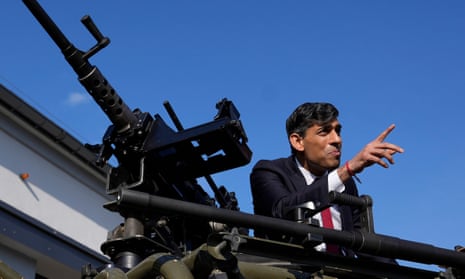
UK to boost defence spending to 2.5% of GDP, Sunak says
PM pledges to put arms industry on ‘war footing’ with plan to raise defence budget to £87bn a year by 2030
Britain will boost its defence spending to 2.5% of national output by the end of the decade as Rishi Sunak pledged to put the UK’s arms industry on a “war footing” in response to global threats.
The prime minister’s plan, which he said would help the UK deal with an “increasingly dangerous” world, would steadily increase defence spending to £87bn a year by 2030.
It comes after months of pressure from Tory MPs, including the defence secretary, Grant Shapps, to increase military spending to help counter increasing dangers.
Sunak also committed to giving at least £3bn a year to Ukraine “for as long as required”, a key request from President Volodymyr Zelenskiy to provide more certainty in the face of Russian aggression.
However, in a sign the Tories will try to hold Labour’s feet to the fire over defence in the run-up to the general election, Sunak told reporters after his speech in Poland there would be a “choice on this topic” for voters.
Labour has not said it would match Sunak’s commitment, although the shadow cabinet minister Steve Reed told Sky News that Labour “would want to match that”.
Keir Starmer has previously said that Labour would raise defence spending to 2.5% of gross domestic product “as soon as resources allow” and has pledged to conduct a strategic defence and security review within 12 months of taking power.
Sunak may also be hoping his defence announcement will ease the pressure on his leadership from within the Tory party, with many MPs feeling despondent about their chances of retaining power and the local elections likely to be a moment of high peril for the prime minister.
His plans could also mollify his Tory rivals for the leadership after Penny Mordaunt, the Commons leader, said the government’s “first duty is to protect our nation” and Shapps pushed for more cash for the Ministry of Defence amid growing concerns over military spending.
The military commitment, described by Sunak as the “biggest strengthening of our national defence in a generation”, means the UK would spend a cumulative £75bn extra on core defence funding over the next six years.
In a speech in Warsaw alongside the Nato secretary general, Jens Stoltenberg, Sunak said Europe was at a turning point as he urged allies to step up to match the commitment of the UK, which will become the second largest contributor to Nato after the United States.
“In a world that is the most dangerous it has been since the end of the cold war, we cannot be complacent. As our adversaries align, we must do more to defend our country, our interests, and our values,” he said.
“Today is a turning point for European security and a landmark moment in the defence of the United Kingdom. It is a generational investment in British security and British prosperity, which makes us safer at home and stronger abroad.”
The prime minister said he would put the UK defence industry on a “war footing”, with £10bn invested in munitions production, as Ukraine showed that countries needed “deeper stockpiles” of weapons.
However, he added: “We must not overstate the danger. We’re not on the brink of war. And nor do we seek it.”
Sunak said the plan was fully funded, moving from an aspiration to spend 2.5% by an unspecified date, when the economic circumstances allowed, to a costed commitment to do so in 2030. The UK currently spends 2.32% of GDP on defence.
However, the spending would not involve any increase in borrowing or debt, Sunak said, implying that it could be partly funded from deeper spending cuts elsewhere.
Documents showed the policy would cost £4.5bn a year by 2027-28, paid for by returns on an increased investment in research and development, and £2.9bn by cutting 70,000 civil service jobs.
after newsletter promotion
Boris Johnson pledged at a Nato summit in June 2022 to increase UK military spending to 2.5% of GDP by 2030 as part of a strengthening of Nato defences in response to the threat from Russia. But Sunak subsequently did not restate this commitment, instead only committing to the 2% Nato minimum.
Last month, Sunak faced calls from three former defence secretaries – Michael Fallon, Gavin Williamson and Ben Wallace – to pledge an increase to 3% of GDP on the armed forces in the Tory election manifesto.
The funding would also help equip the west to stand up to autocratic states such as Russia, Iran and China, which Sunak said were working together to undermine democracies.
It also includes further pledges to reform defence procurement and the creation of a new defence innovation agency with at least 5% of the defence budget to be committed to research and development.
It covers an additional £500m in military funding for Ukraine from Treasury reserves, which was announced by Sunak before the trip, and takes the total to £3bn this financial year.
Earlier, the prime minister appointed Gen Gwyn Jenkins, a former special forces commander who is the vice-chief of the defence staff, as his new national security adviser.
He will be the first armed forces veteran to serve in the role and replaces Tim Barrow, who is expected to become the next UK ambassador to Washington at the end of this year.
Labour has warned it could reverse Barrow’s appointment if it wins the election, arguing that the next UK government should decide who takes on Britain’s most senior diplomatic posting.
The prime minister welcomed the decision by the US Congress, after months of stalling, to approve a $61bn package of new military aid for Ukraine.
But he added: “That doesn’t take away from the need for Europeans to invest in their security. I am very proud that the UK has always led in that regard.”
Sunak will fly on to Germany, his first visit as prime minister, where he will meet the German chancellor, Olaf Scholz, who has just announced his country will finally meet the Nato target for members to spend 2% of GDP on defence. Germany’s weapons commitments to help Ukraine defend itself against Russia are now almost twice the size of Britain’s.
The UK and Germany will announce plans to jointly develop remote-controlled howitzer artillery systems, a programme which they say will create hundreds of jobs across the two countries.
- Defence policy
- Rishi Sunak
- Foreign policy
Most viewed
- Travel recommendations The world is a big place – not sure where to go? Get recommendations on destinations, the best times to go there, and what to do.
- Travel in the UK How much have you really travelled within the UK? There are so many local hidden gems waiting to be discovered – be inspired here.
- The taste of travel For some, the best way to experience a place is through its food. See the best places to go for dining and local dishes around the world.
- Tips & tricks Hack your way to the most amazing trips ever with tips on everything from how to pack your carry-on to how to eat dumplings.
- Travel experiences What’s your favourite thing to do when you’re travelling? Find the best things to see and do based on your interests or type of travel.
- News Read the latest news about the travel industry, our products and services, and what’s happening at KAYAK.
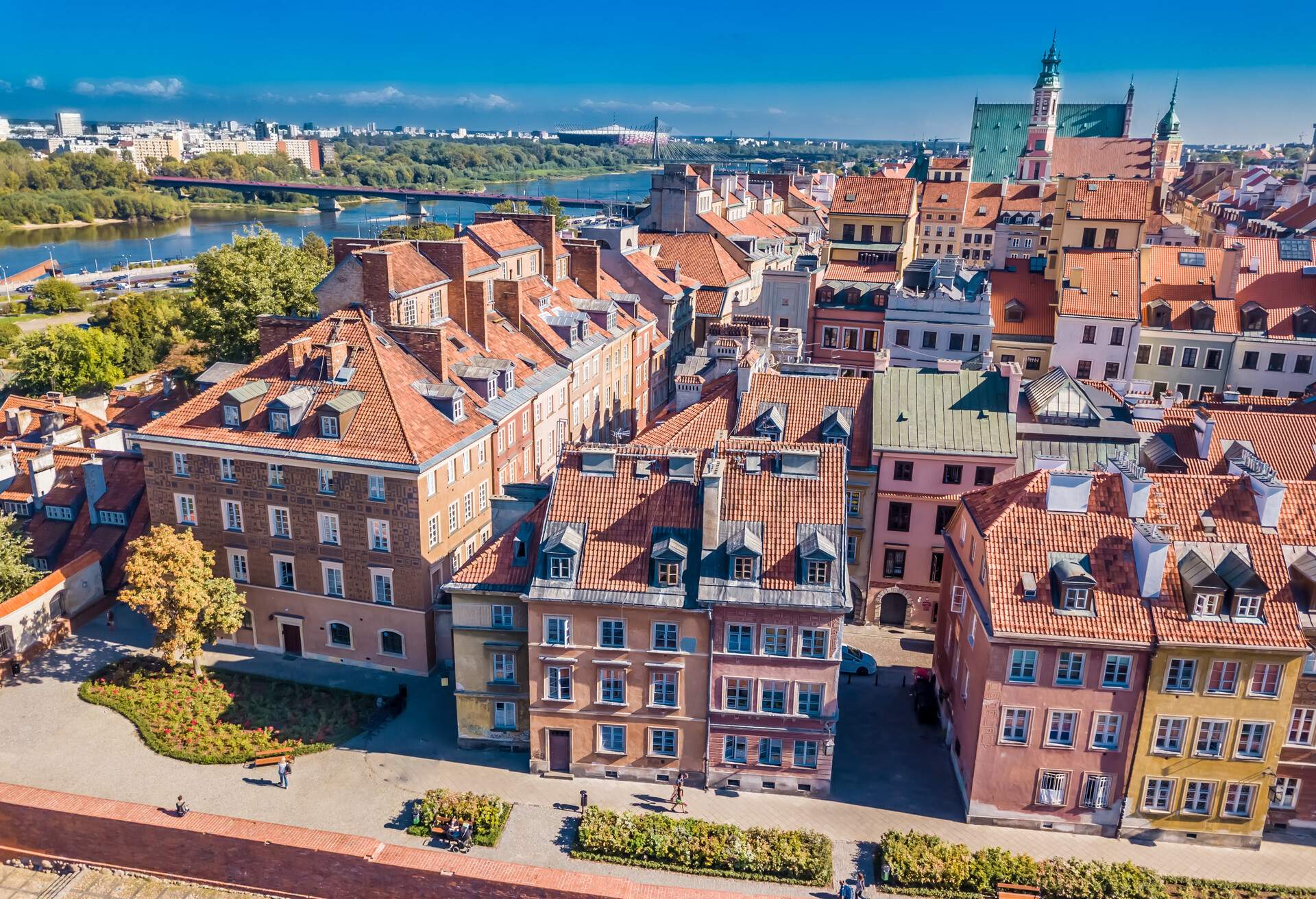
The 10 best places to visit in Poland

Since the late 20th century, after the break-up of the Eastern Bloc, Poland has been one of Europe’s most popular tourist destinations. It’s no surprise either. The country isn’t only naturally beautiful, it’s also steeped in the modern-day history of the continent, going back many centuries. As a result, it boasts an enviable array of tourist attractions and important historical landmarks, which are top of the list of the best places to visit in Poland.
Best places to visit in Poland: Top 10
Holidays in Poland offer something for everyone, even during its chilly winter. Depending on what time of the year you arrive, you can experience two completely different facets of the country. This makes it a great place to visit year-round, especially given that it’s a short, affordable flight from the UK. Read on to discover some of the most rewarding Poland holiday destinations.
To help you plan your sightseeing itinerary in more detail, you can also read our Poland travel guide.
Find flights to Poland
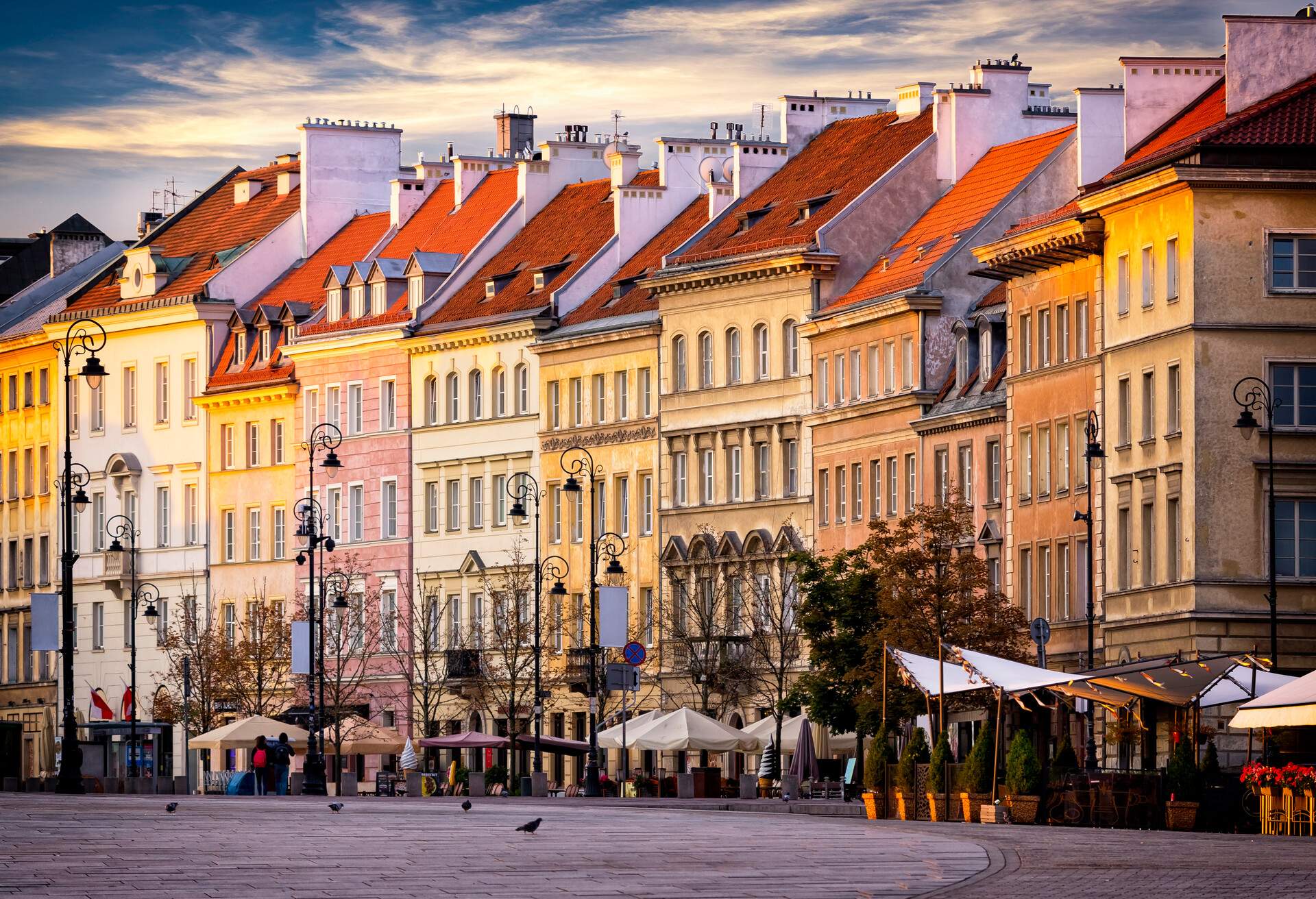
The capital of Poland is one of Europe’s most historic cities and the centre of Polish art. After its virtual destruction during WWII, the city quickly rebuilt its historic centre, using the original planning papers. You can still see authentic Renaissance and Baroque period houses that have been perfectly recreated.
Treasured art museums
The famous art museums in Warsaw were also given a new lease on life. Today you can see the largest painting collection in Poland at the National Museum. Here you can see many works with historical connections. There’s a selection of paintings that were stolen and then reclaimed from Adolf Hitler, for instance.
Quirky museums to visit
You’ll find some quaintly fascinating niche museums in Warsaw too. It has the only Museum of Posters in the world and a Museum of Caricature. Or visit the more modern Neon Museum. There’s also a moving and inspirational museum that covers the gallant Warsaw Uprising of 1944.
Inspiring architecture
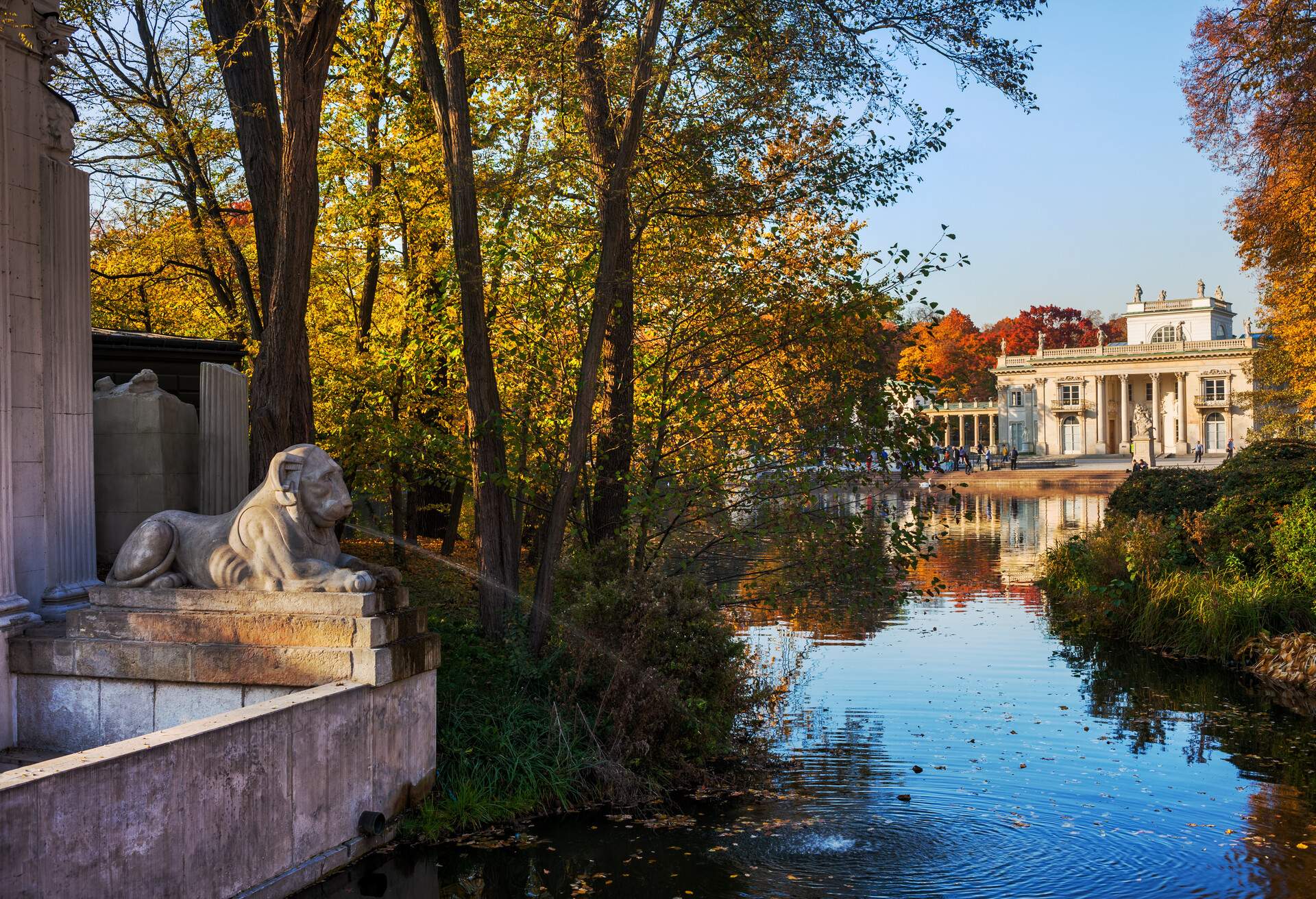
Visit the 18th-century Lazienki Palace, not least for its splendid formal gardens and more than 75 hectares of urban forest. The palace complex houses an outdoor theatre, a planetarium and historical pavilions. Krakowskie Przedmiescie is the main architectural street in Warsaw. Here you can see the more traditional Polish architecture, including genuine old homes.
Royal splendour and celebrating science
Two other Warsaw attractions also deserve mentioning. One, the lavish Presidential Palace, is a sight to behold, dating back to 1643. The other is the Polish Academy of Sciences. This has produced some of Poland’s more eminent scientists, as well as many international experts.
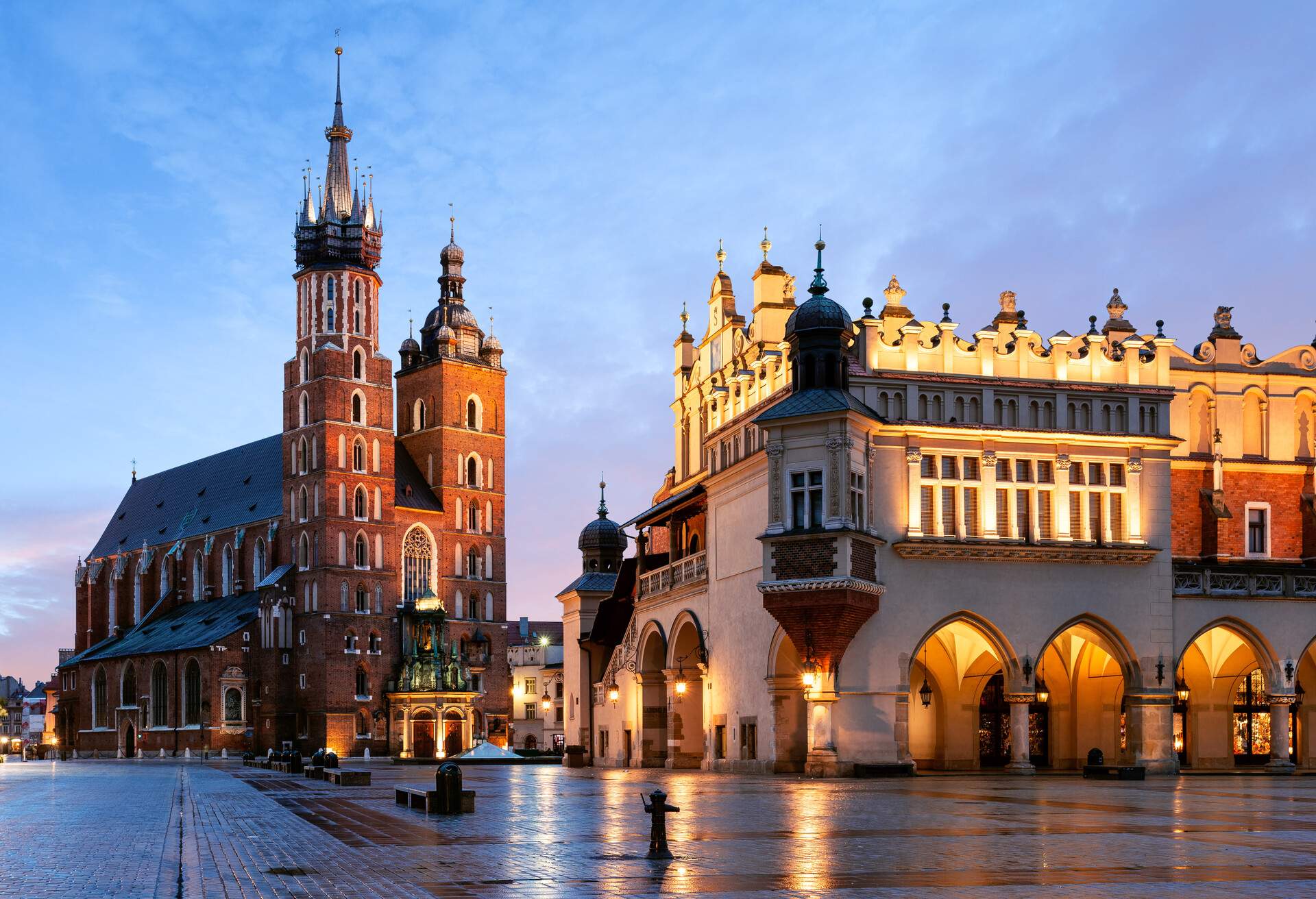
Krakow is another hugely significant historic Polish city and one of the oldest in the country. It offers a pretty diverse set of tourist landmarks. It’s also particularly known for its many parks and woodlands. From here, you can also reach some of Poland’s most important historical sites, including one of history’s most notorious.
Go hiking in urban nature
Krakow is one of the best places in Poland to go for urban outdoor activities in a variety of natural settings. The city has about 40 urban parks, some modern, some dating back a century or more. Planty Park, established in the 19th century, creates a ring of green around the central area of the city, covering some 21 hectares. It’s a great place for solitary or family walks.
There’s also Lasek Wolski Forest, not far from the city centre. It has dozens of biking and hiking trails and offers another excellent way to escape into nature without leaving Krakow itself. It’s all free, to boot. Take a picnic hamper with you.
The royal jewels and classical tapestries
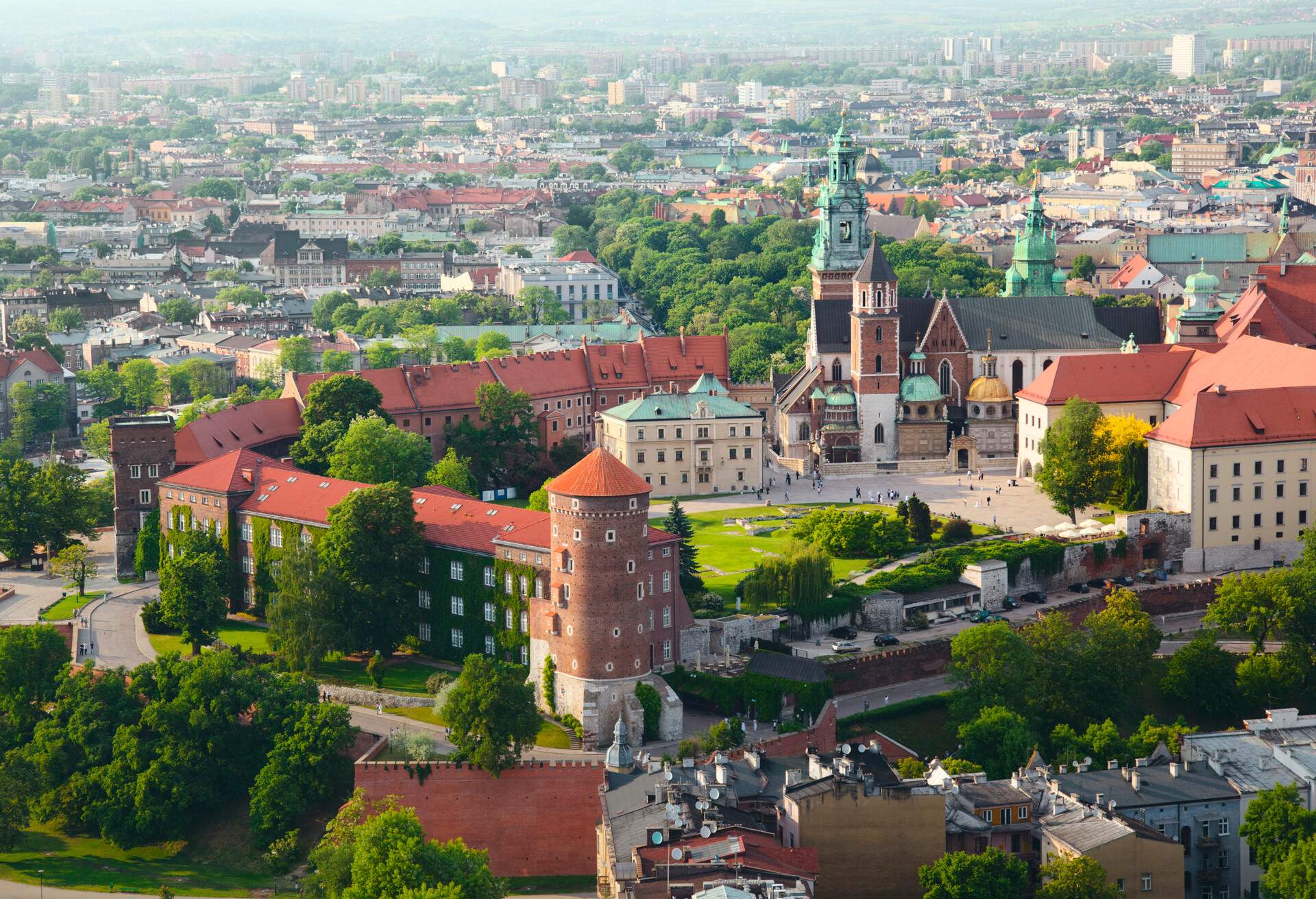
There are almost 30 museums spread across Krakow, so you can spend a good few days visiting them all. The National Art Collection at Wawel Castle is one of the most impressive. It houses the Polish royal jewels and a huge collection of Flemish tapestries. You can also view period furniture and 15th-century weapons and armour.
Road trips outside Krakow
There are two very notable road trips you can take from Krakow. The first is to visit the oldest salt mine in the world, which is still functioning. The other is to pay your respects at the Auschwitz-Birkenau concentration camp complex. It will give you a stronger resolve to work for good in the world.
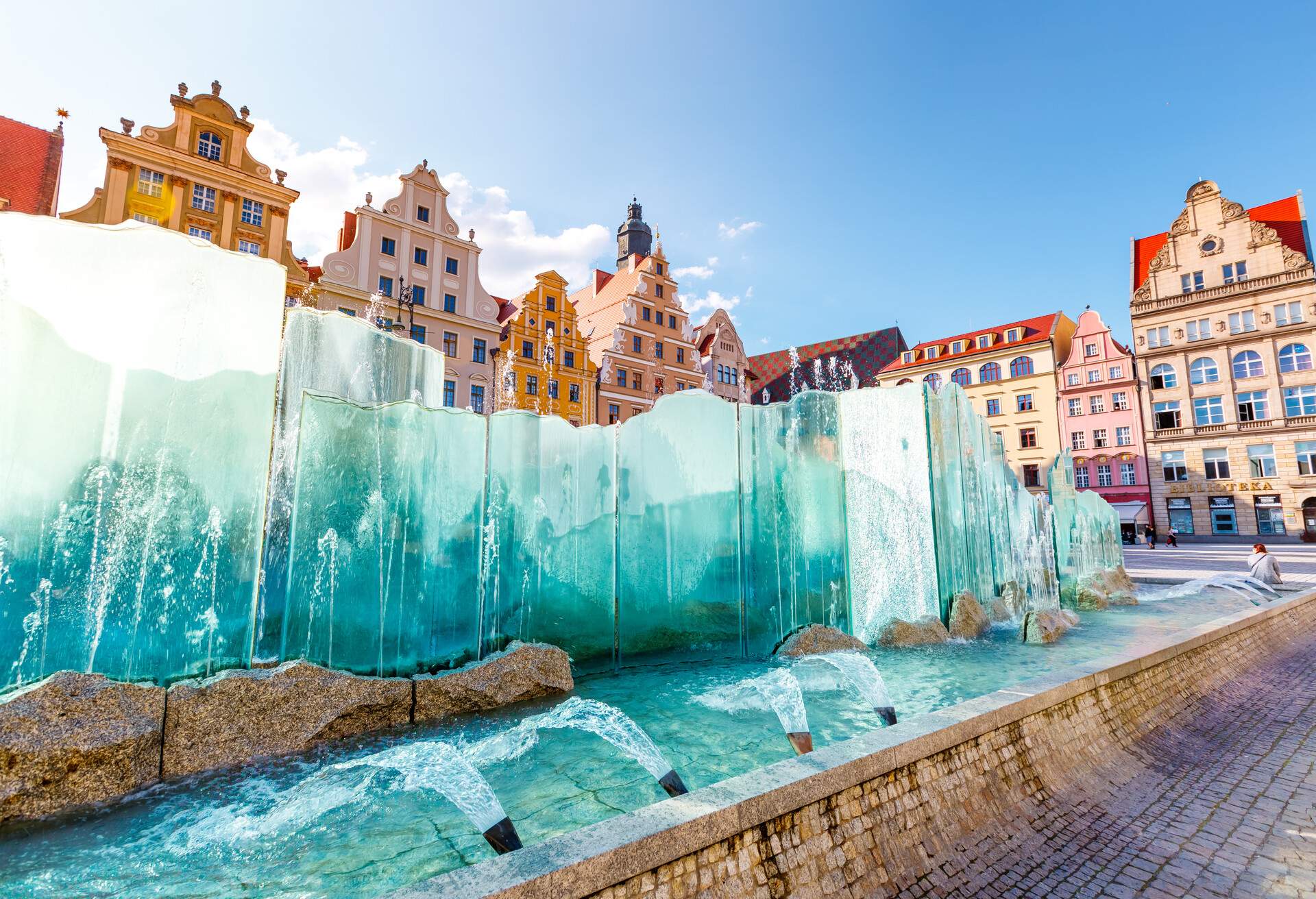
This is one of the more fascinating cities to put on your list of where to go in Poland. It has a unique mixed culture compared to other Polish cities, thanks to having belonged variously to Germany, Prussia and the Kingdom of Bohemia through the centuries.
A millennium of museums
You can learn about its colourful modern history at the Lubomirski Museum, which covers events beginning in 1945 and continuing into the Iron Curtain years. For the city’s more ancient history, visit the Wroclaw City Museum, with its artefacts that go back over a thousand years. Perhaps the most intriguing is the Pan Tadeusz Museum. This contains multimedia exhibitions of Polish customs.
Open-bus tours and gnome hunting
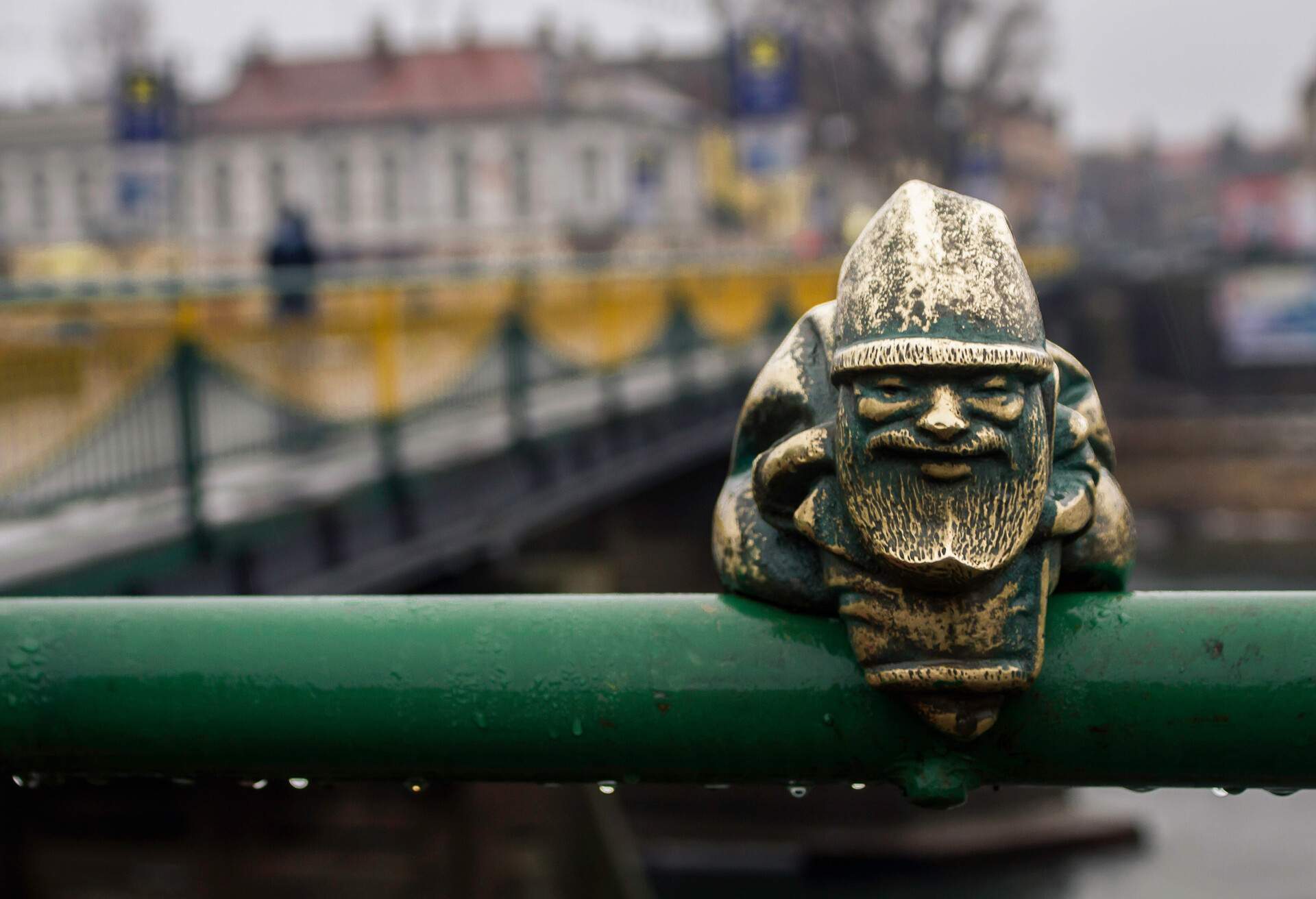
When the city is nice and warm in summer, it’s a great idea to take an open-top bus tour. These will take you through all of the city’s most historic districts, like the area around the 13th-century Main Market Square. Or explore the city more playfully by searching for the bronze figurines of Wroclaw’s famous gnomes (there are more than 350). They’re hidden everywhere among the city’s everyday features.
We’ve also created a dedicated Wroclaw travel guide , so you can read more extensively about what to see and do there.
4. Tatra Mountains
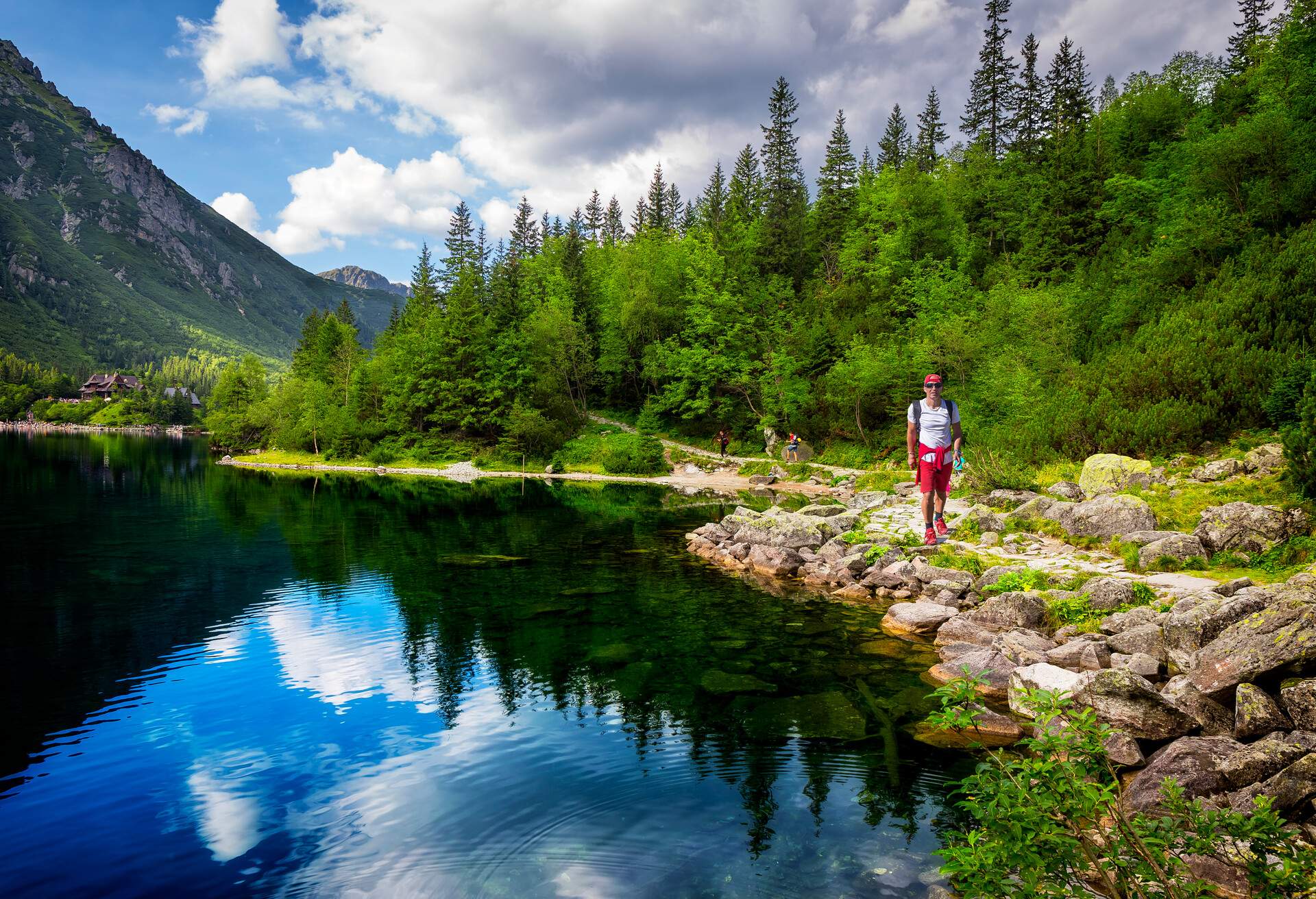
We leave the cities for a moment to explore arguably the most celebrated natural feature in Poland, the Tatra Mountains. It’s part of a national park and the range creates a natural border between Poland and Slovakia.
Hiking trails through immersive scenery
The Tatra Mountains and Tatra National Park offer over 270 km (roughly 170 miles) of hiking trails. As you hike, you’ll pass many enticing streams, waterfalls and mountain lakes, where you can rest or take a refreshing swim in summer. Morskie Oko is the largest lake here. It’s about a 2-hour hike through the forest from the trail starting point.
Majestic Mount Rysy
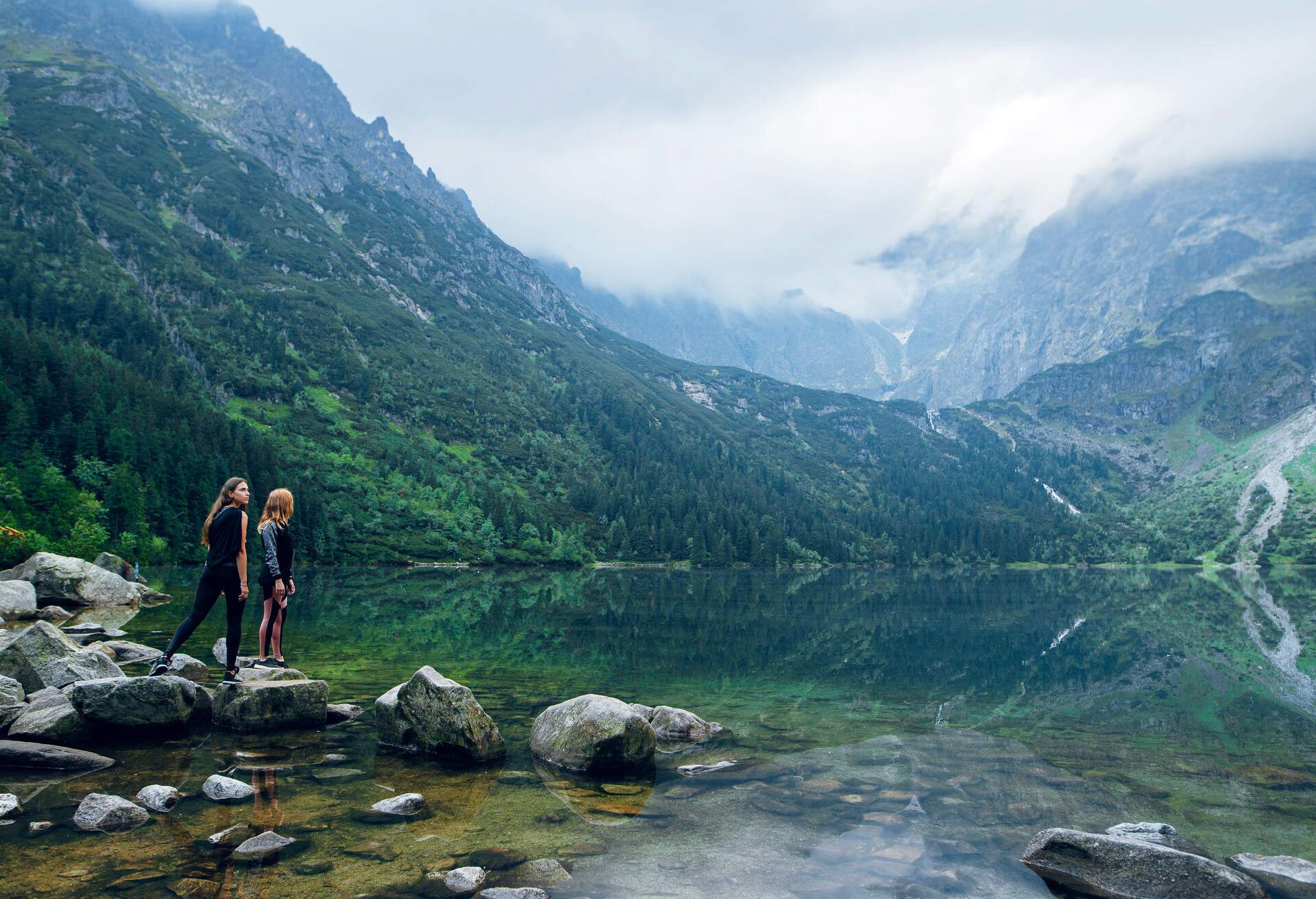
Mount Rysy, the tallest mountain peak in Poland, is also to be found in the Tatra Mountain range. It’s gauged to be about 2,500 metres tall (over 8,200 feet). You won’t need a guide to climb it, as the trail gradient is relatively mild. Just make sure you have a good pair of hiking boots to maintain a good grip underfoot.
The Jaskinia Wielka Sniezna limestone caves
The Tatra Mountain range is also known for its vast labyrinth of limestone caves, which purportedly contains over 600 caves. Jaskinia Wielka Sniezna is the deepest and longest of these cave systems. It’s about 825 metres (2,700 feet) deep and has a staggering length of roughly 23 km (14 miles).
5. Bialowieza Forest Reserve
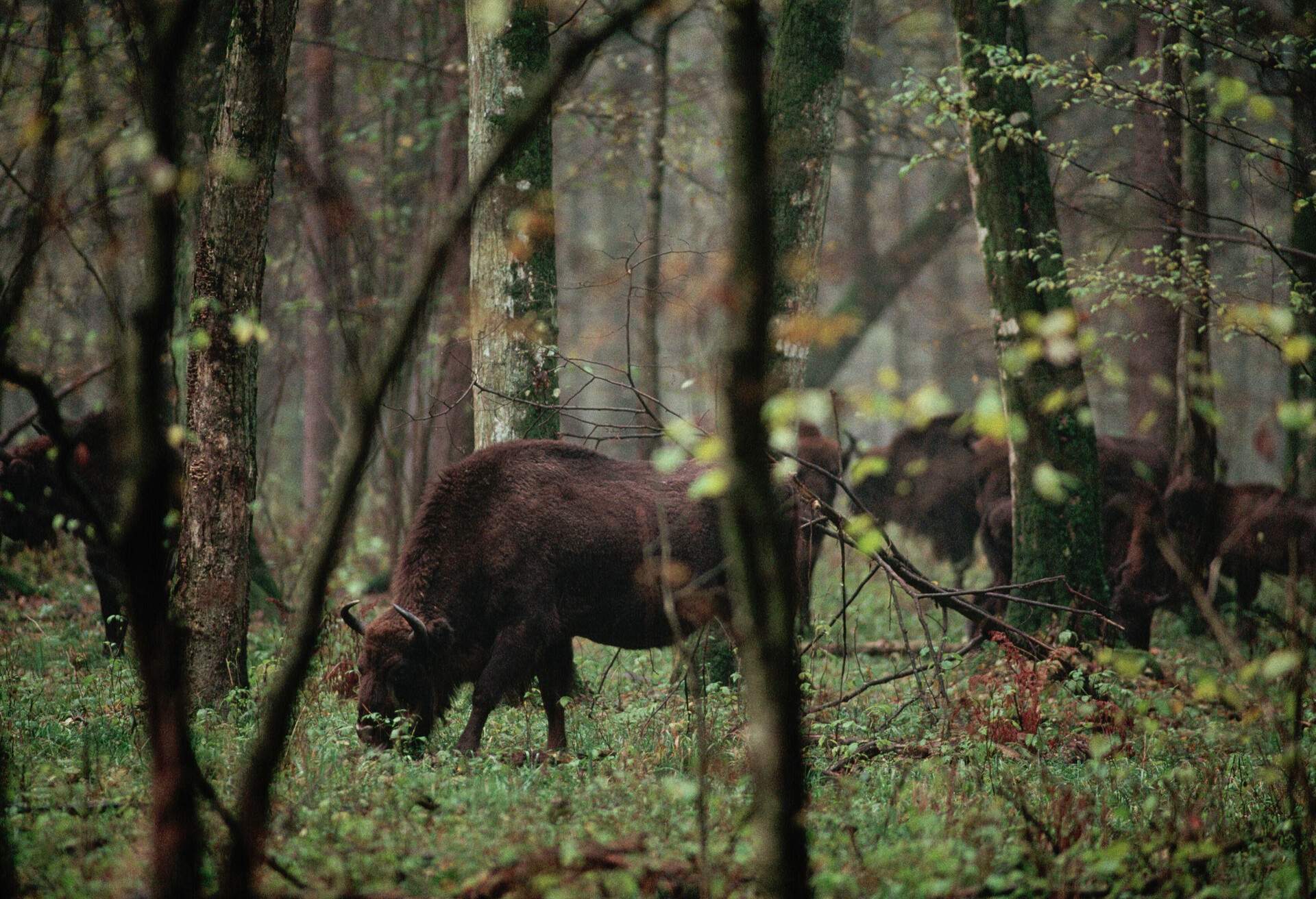
What makes Bialowieza Forest Reserve special is that it’s the largest remaining primaeval forest in Europe, and as such is a UNESCO World Heritage Site. The forest covers over 1,400 square km (540 square miles) on the Polish-Belarus border.
Ornithology among herds of indigenous European bison
Bialowieza Forest Reserve is also special for being the home of large original European species of animals, like bison. It’s a haven for bird watchers too, and you can take tours guided by local ornithologists. Inside the forest, you’ll find the open-air Museum of Wooden Architecture, showcasing all kinds of traditional Polish wooden structures.
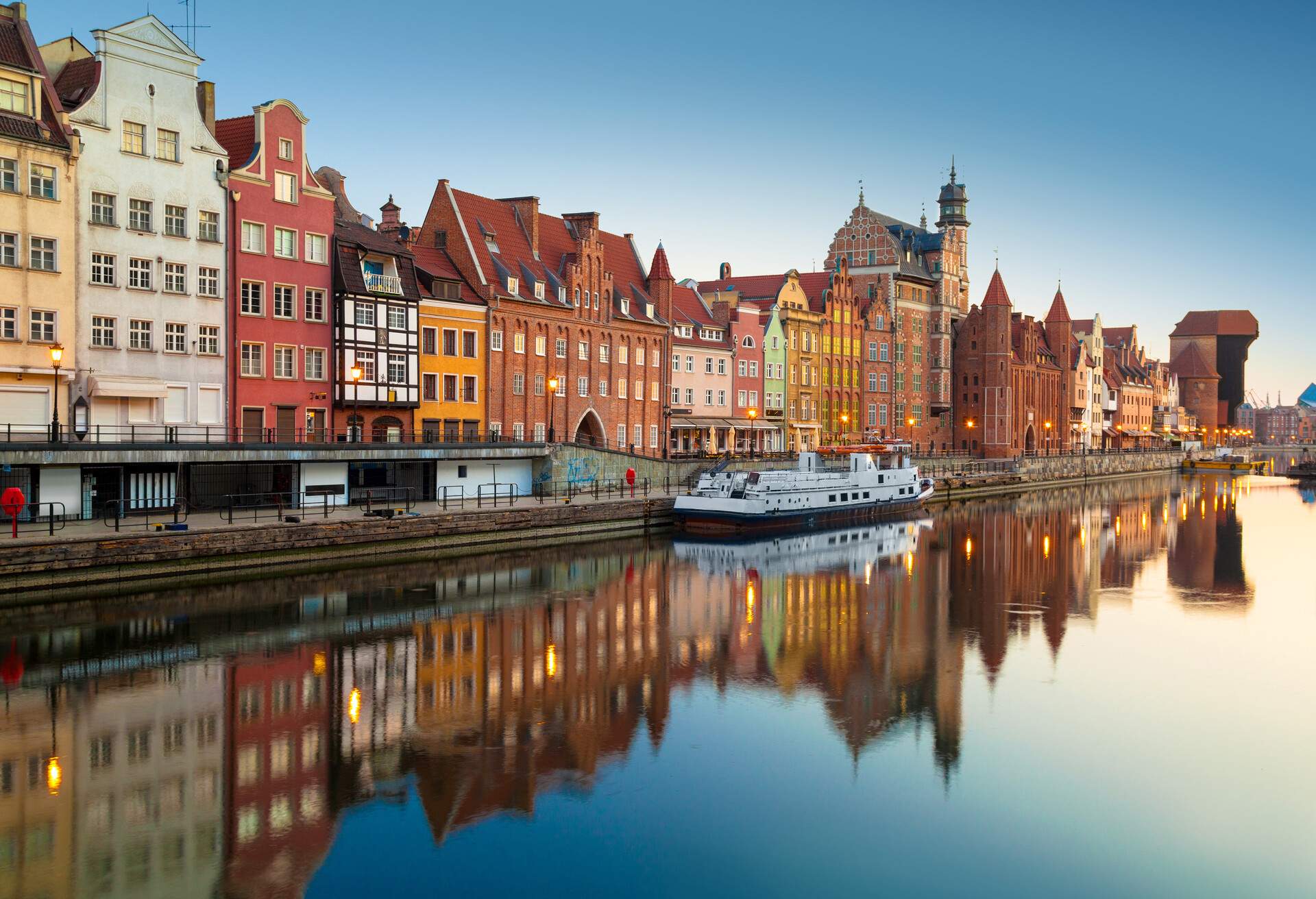
If you’re wondering where to visit in Poland for the country’s most beautiful city, Gdansk is a top contender. It had the good fortune to remain virtually untouched by WWII, so most of this 17th-century Polish city is excellently preserved.
Poland’s ancient seaport
Gdansk’s prime location in a bay on the Baltic Sea made it Poland’s main seaport over the centuries. This part of the city has been painstakingly preserved, so you can walk through it and see some of its most ancient structures; the Prison Tower and the City Gates are two of these. You’ll also be able to stroll along avenues lined with original merchant houses.
WWII museum and record-holding church
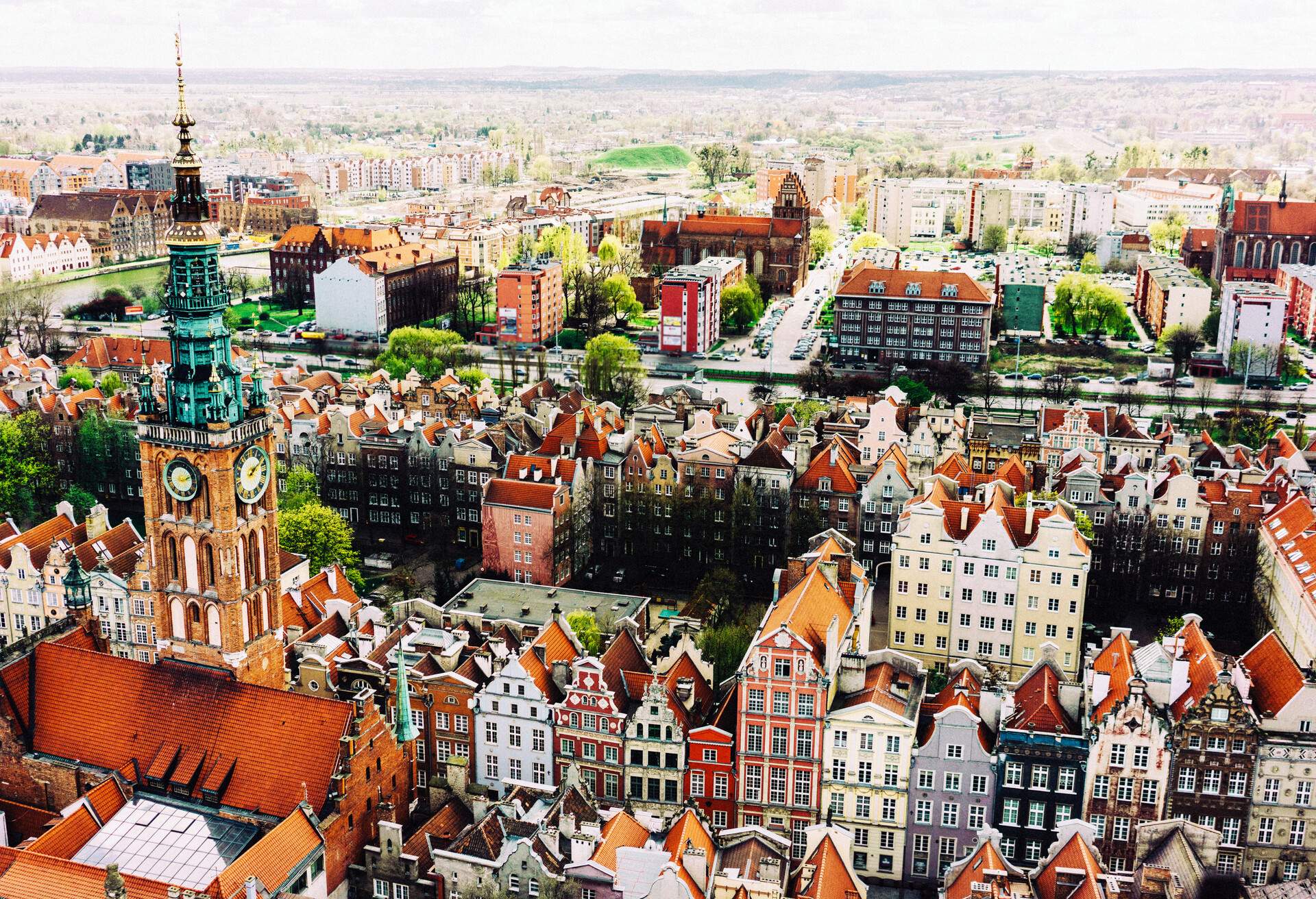
In Gdansk, you’ll find a very comprehensive Museum of the Second World War, with unusual exhibits like a German DKW motorbike and a Polish Sherman tank. There are many other authentic photos and genuine artefacts. You can also pay a visit to St. Mary’s Church, which is the largest all-brick church in the world. The Gdansk Nowy Port Lighthouse is another noteworthy tourist attraction in the city.
While that only scratches the surface of the wonderful Polish city, you can find out more by reading our Gdansk travel guide .
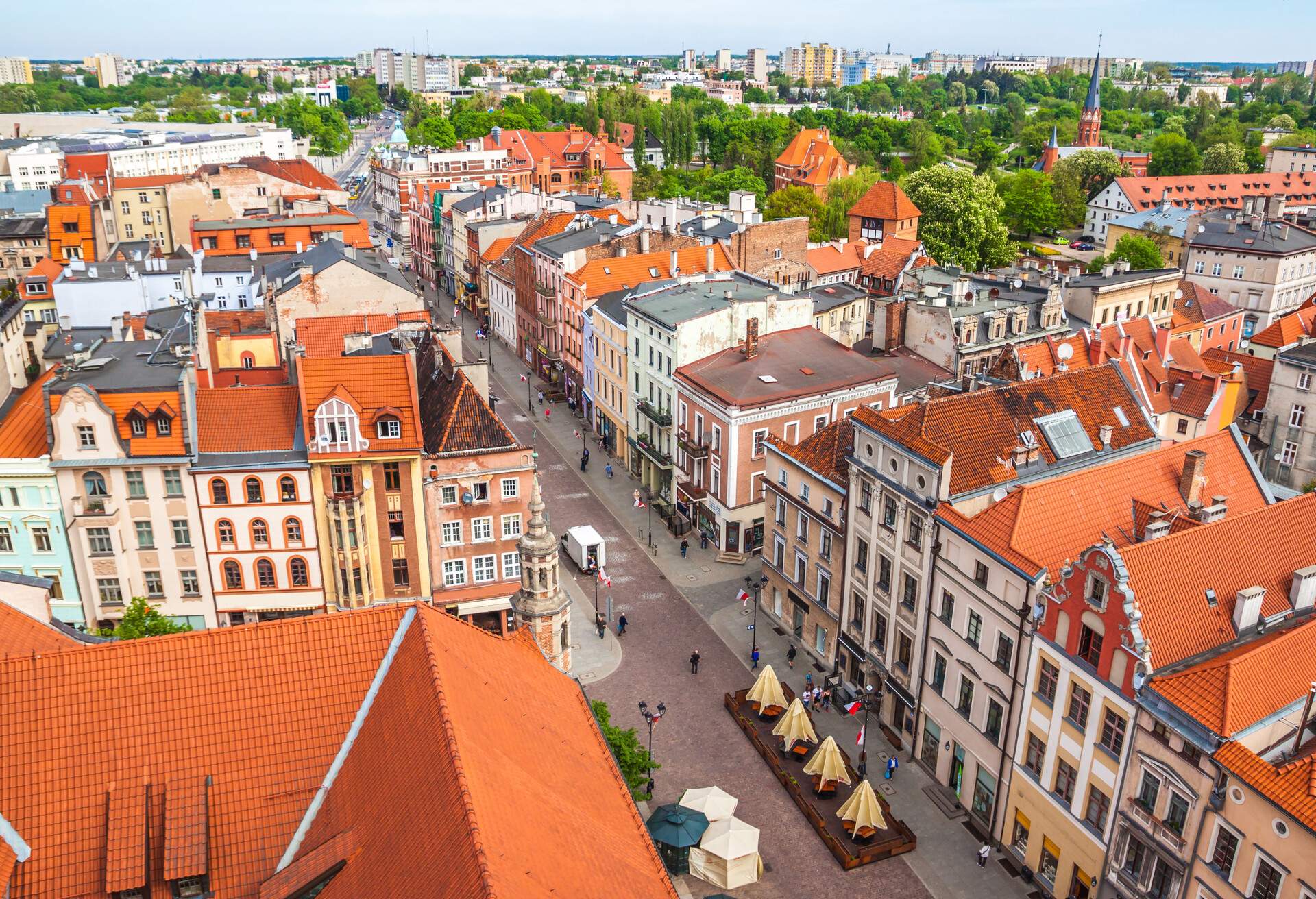
Torun makes it onto the list of the best places to visit in Poland due to its remarkable age and its connection with one of history’s most important scientific figures. It’s also the home of gingerbread in Poland.
The birthplace of Nicolaus Copernicus
Few would dispute the immense contribution that Copernicus made to our understanding of our solar system. You’ll find the house where he was born in Torun. It’s now a museum showcasing the life and work of this illustrious astronomer. It’s an absorbing trip into the very origins of astronomy.
Step back into mediaeval times
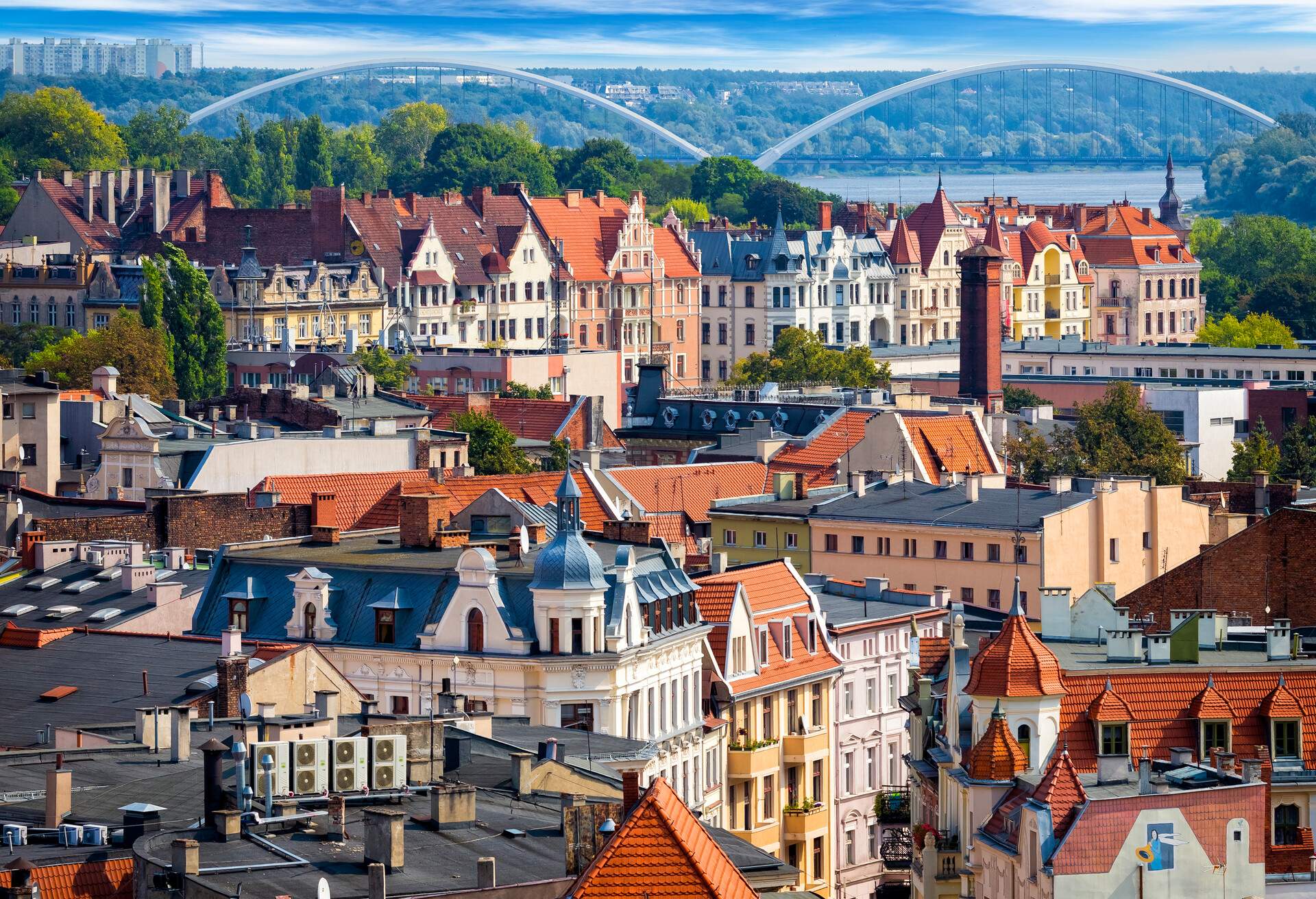
Torun was founded around the 8th century, which easily makes it one of the most ancient cities in Poland. It’s well worth getting a sense of this history by visiting the Central Marketplace district and the Old Quarter, a UNESCO World Heritage Site. Here you’ll find original 16th-century buildings with wooden beams and many Gothic houses too. The square also remained intact during WWII, leaving its original structures as they always were.
Bake some classic Polish gingerbread
Poland has its own unique version of gingerbread that you must taste. To find out more about it and do some sampling, visit the Muzeum Piernika. This is a museum that’s entirely dedicated to the art and history of Polish gingerbread. You can even try your hand at baking some yourself and see how you stack up against the lifelong local experts.
8. Bieszczady Mountains
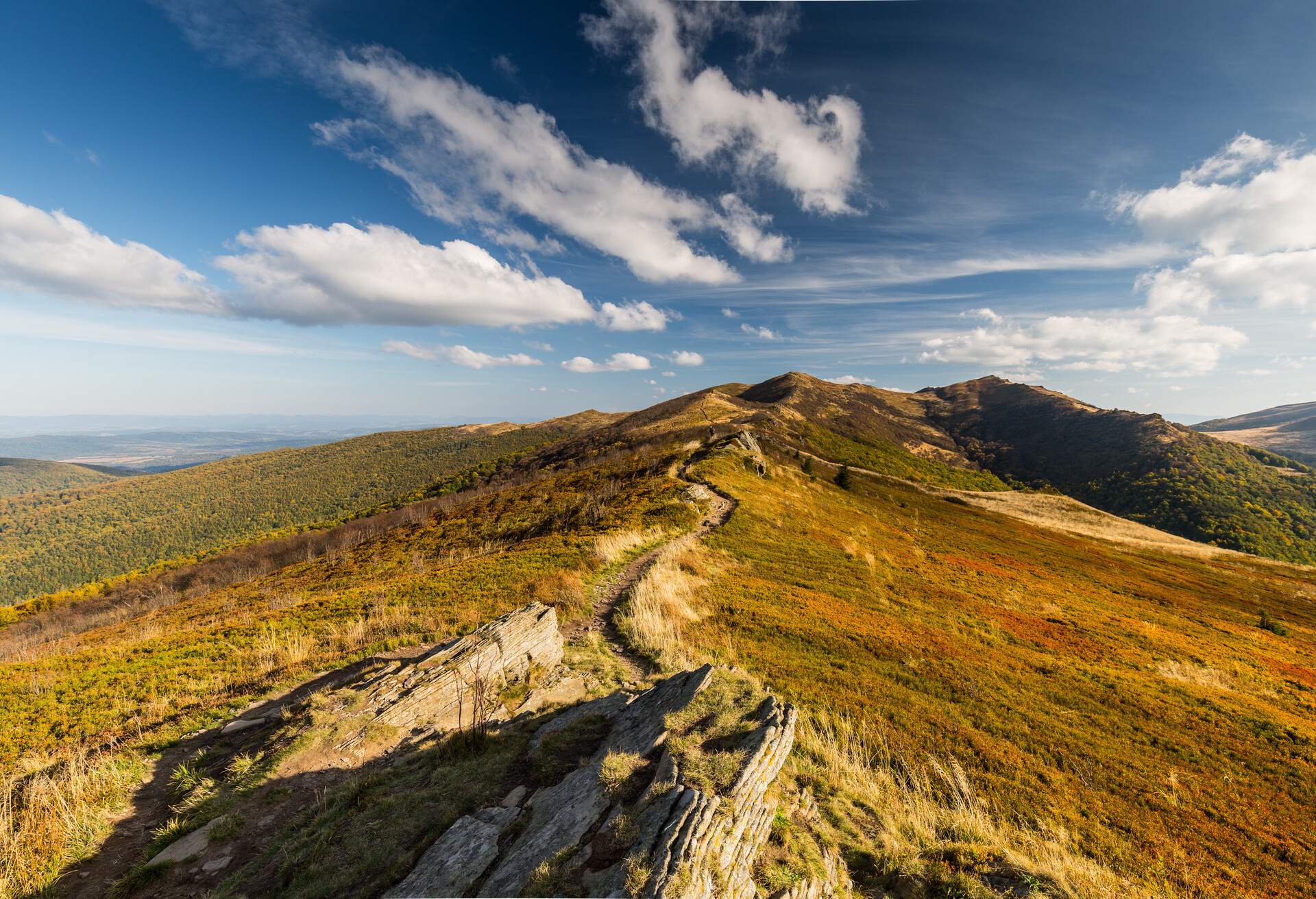
This is a very long Polish mountain range that stretches all the way to Slovakia and Ukraine. It has a unique ecosystem only found in this Carpathia region: the mountains are covered by a type of meadow that only occurs here, known as polonyna.
The ideal Polish destination for hiking
The highest points of the Bieszczady Mountains are lofty, but their slopes and valleys offer easy hiking for all ages. You can easily hike to the top of the tallest peak in the range, Polonyna Wetlinska. It’s roughly 2,255 metres high (about 7,400 feet) in height, and getting up there is a gentle climb along the most popular meadow trail. This will only take you about 2 hours.
A protected biosphere
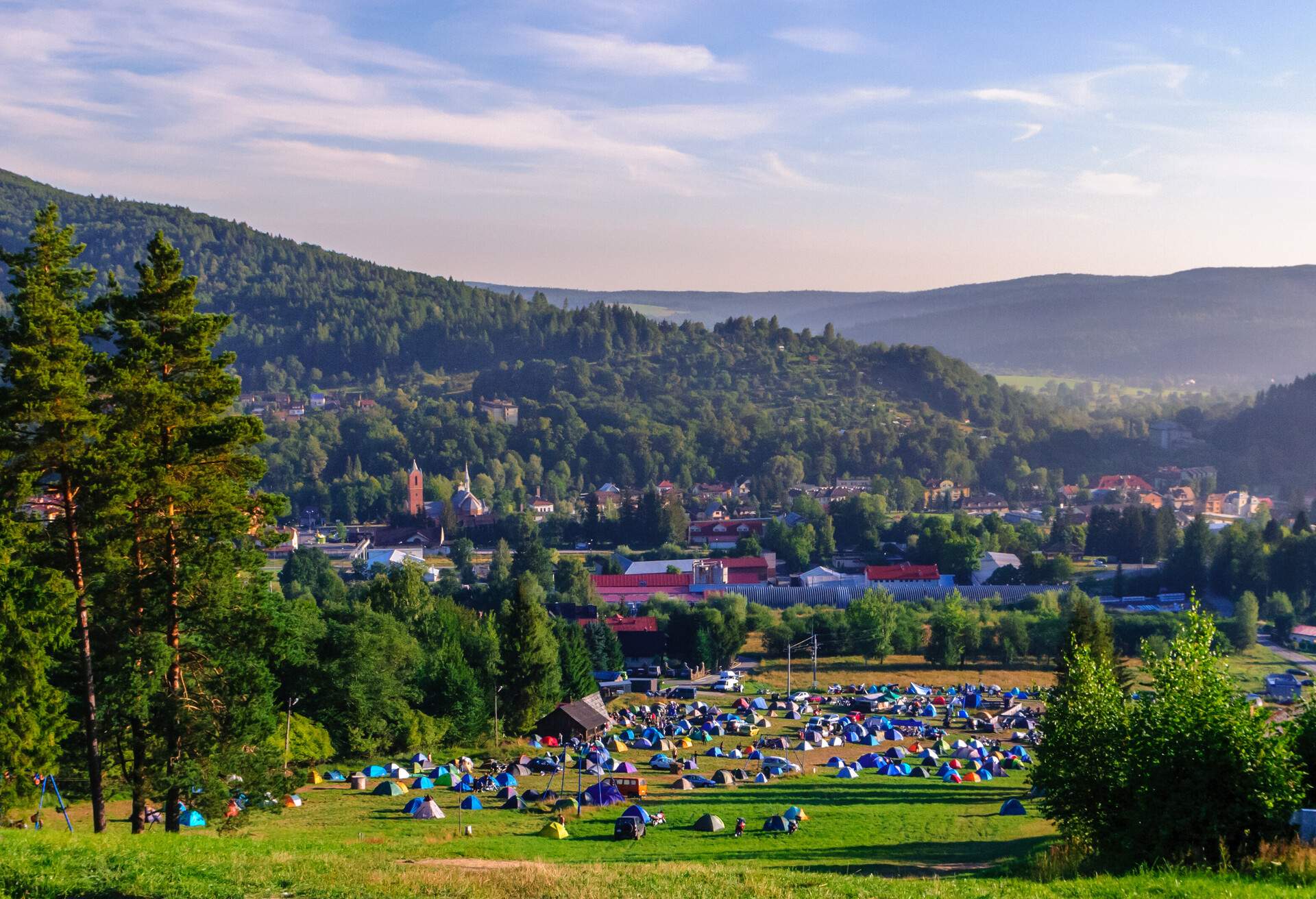
Because of its unique ecosystem, a large part of the Bieszczady Mountains belongs to the UNESCO East Carpathian Biosphere Reserve. This is where wolves, bison and brown bears roam freely in their untouched natural habitat. It also has a huge indigenous beech forest. Visiting the mountains is a good way to get in touch with the wilder natural side of Poland.
9. The Isle of Usedom
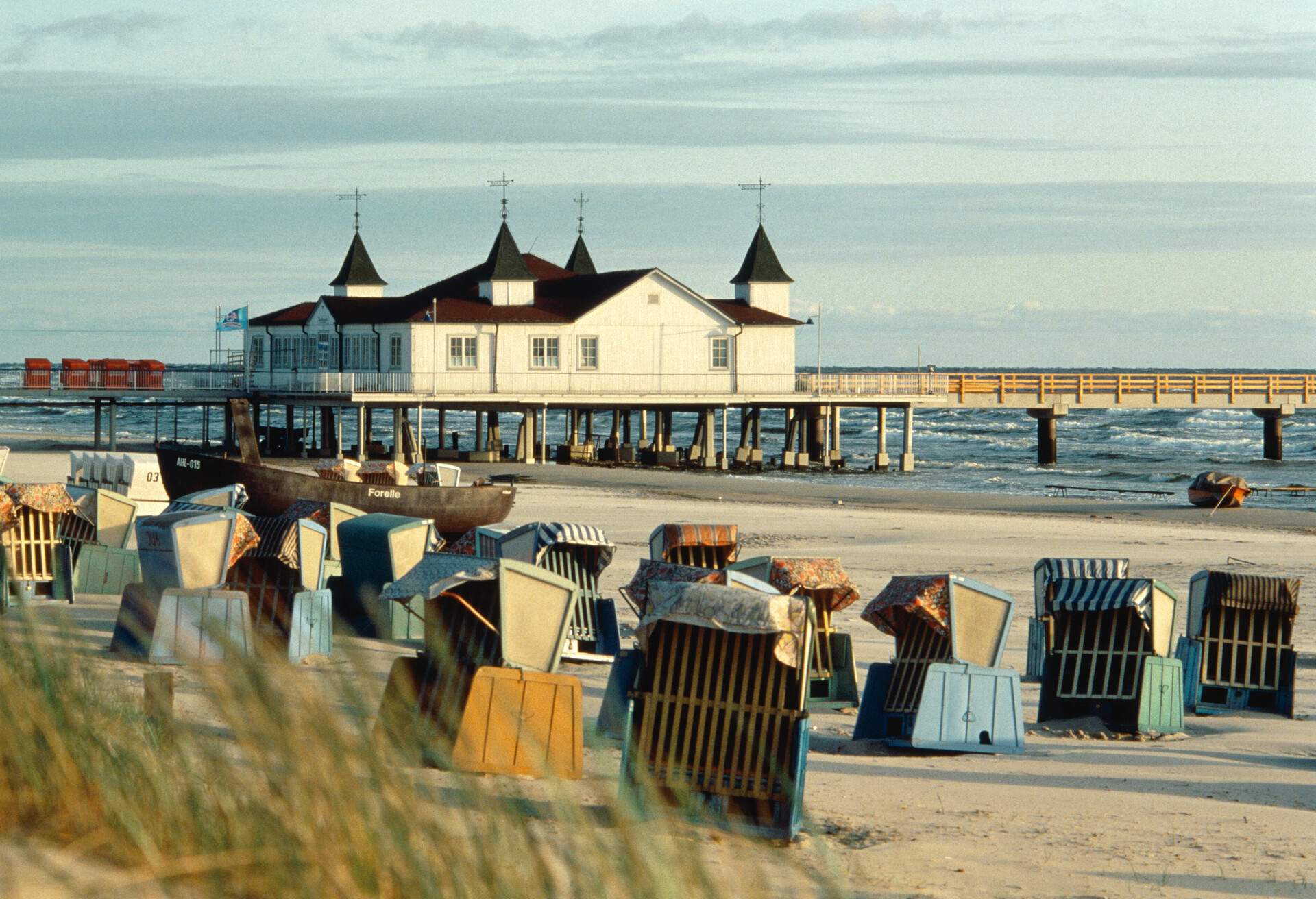
This is a picturesque island in the Baltic Sea that’s jointly owned by Poland and Germany. It’s known as the “sun island”, as it receives so many hours of sunlight during the year. This makes it a sought-after tourist destination in northern Poland.
Beaches, resorts and summer sports
The Isle of Usedom is a summer playground for local Poles, Germans and other European visitors alike. Far less well known than most other European resort areas, like those in the south of France or on the Aegean, it’s a real hidden gem. Its soft white beaches and relatively warm water attract many thousands of tourists each year. The region is also a centre for water sports and other aquatic activities.
Gardens and local landmarks
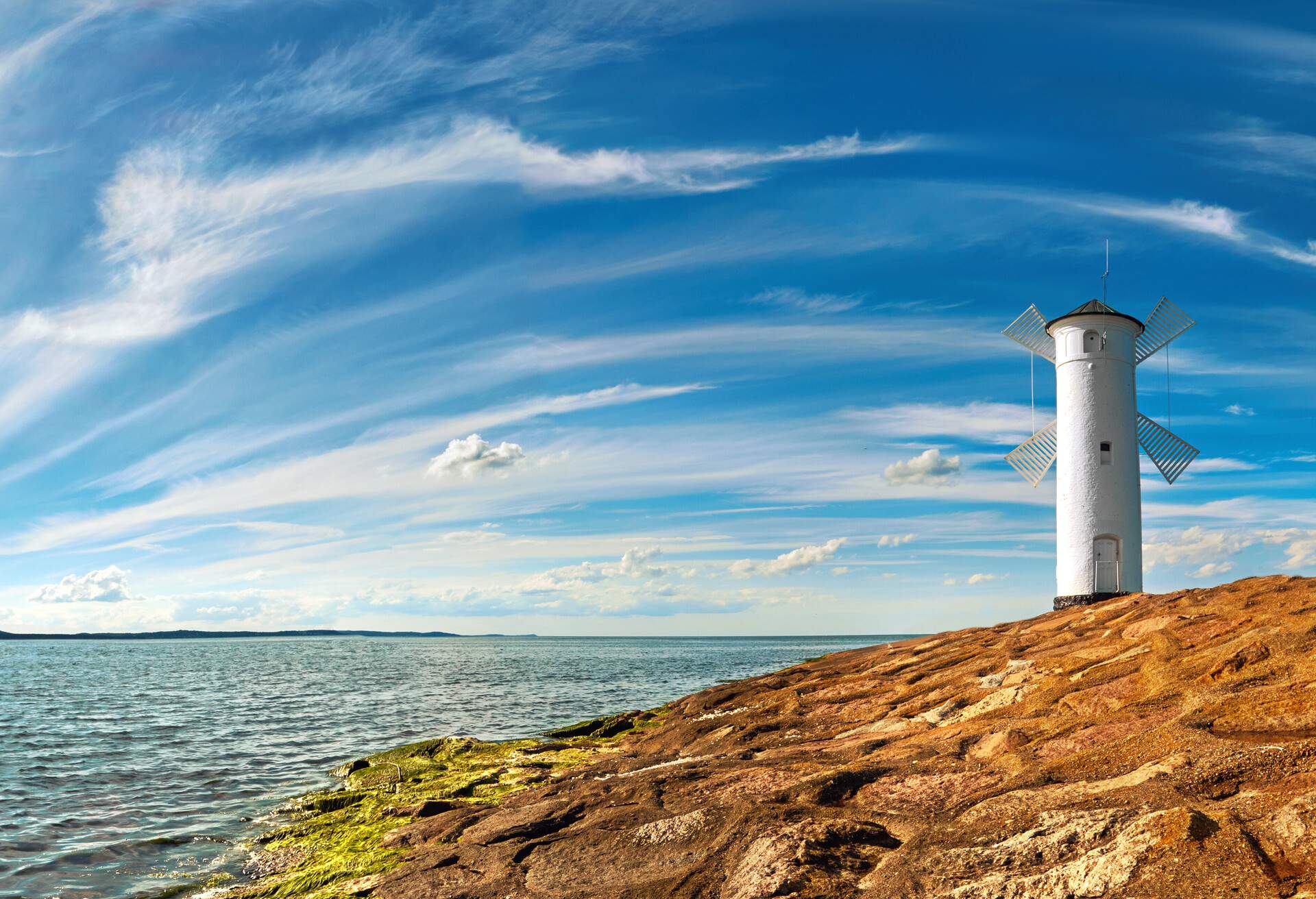
You’ll also find a wonderful private botanical garden on the Isle of Usedom. There are many other landscaped gardens on the island too, and remember to visit some of the many small nature reserves and lakes. These can be found spread out across the entire island.
The remains of the Karnin Lift railway bridge provide a tourist attraction for those who are that way inclined. It’s on the German side of the island. The bridge has now become a historic symbol of engineering in Germany. You can also visit the old Dannenfeldt Mausoleum.
10. Bialystok
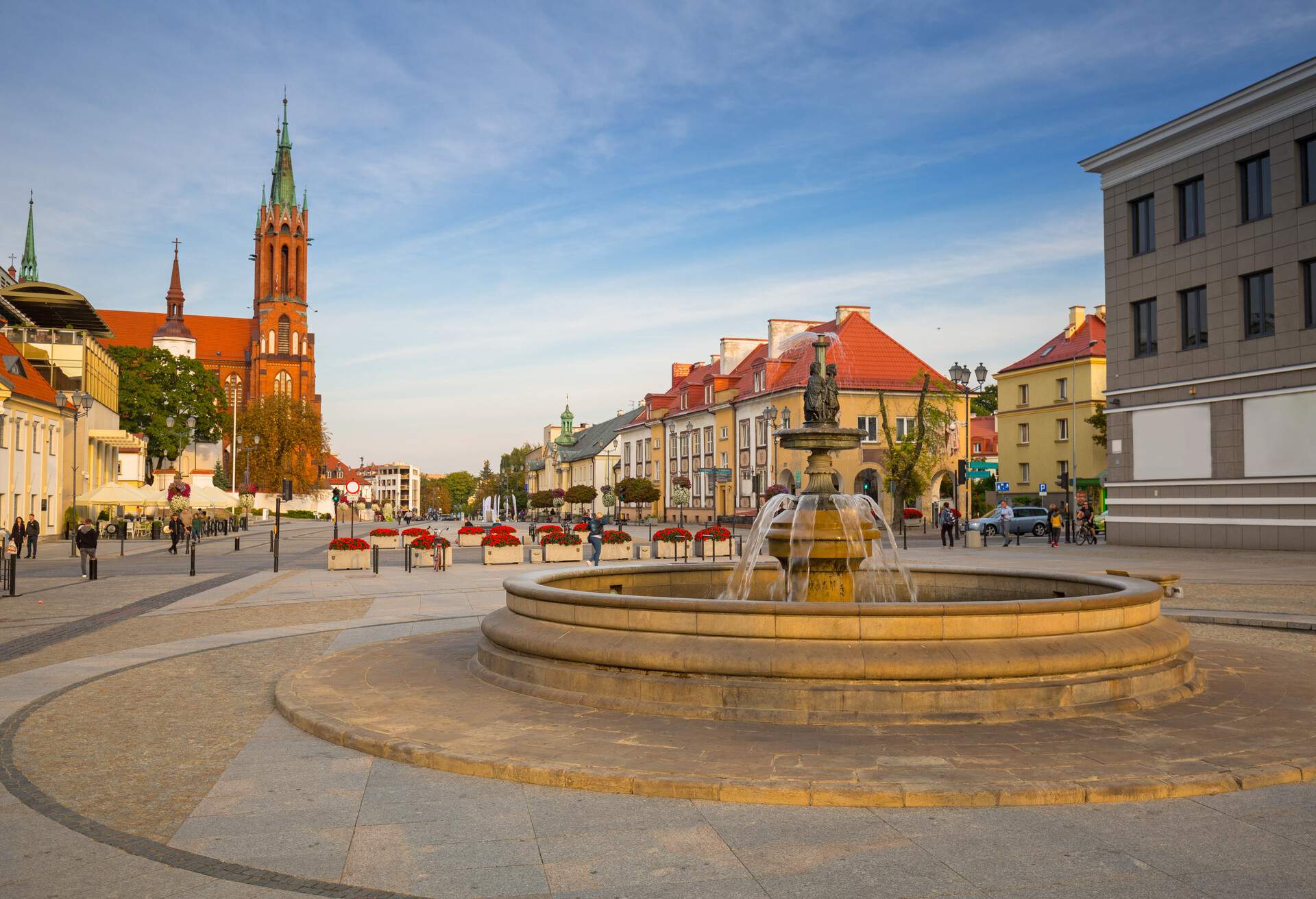
Bialystok is a Polish city to visit if you’re into architecture. It has hundreds of historical buildings, some of them elaborately ornate.
Branicki Palace and Kosciuszko Market Square
Branicki Palace is arguably the most eminent piece of architecture in Bialystok. It’s a huge country estate, originally built by a businessman who fancied becoming the king of Poland. Kosciuszko Market Square offers a delightful experience sitting in a cosy coffee shop in the midst of ornate period townhouses. You can also visit the smaller Hasbach Palace.
Explore more with KAYAK

Once you’ve visited Poland, you can start planning your next holiday with KAYAK. We can guide you to the best places to visit in Switzerland , for instance. Or travel closer to home and explore the best places to visit in Ireland . For a Mediterranean island holiday, read about the best places to visit in Crete . If you want a more exotic holiday, check out the best places to visit in Japan .
About the author

Explore more articles
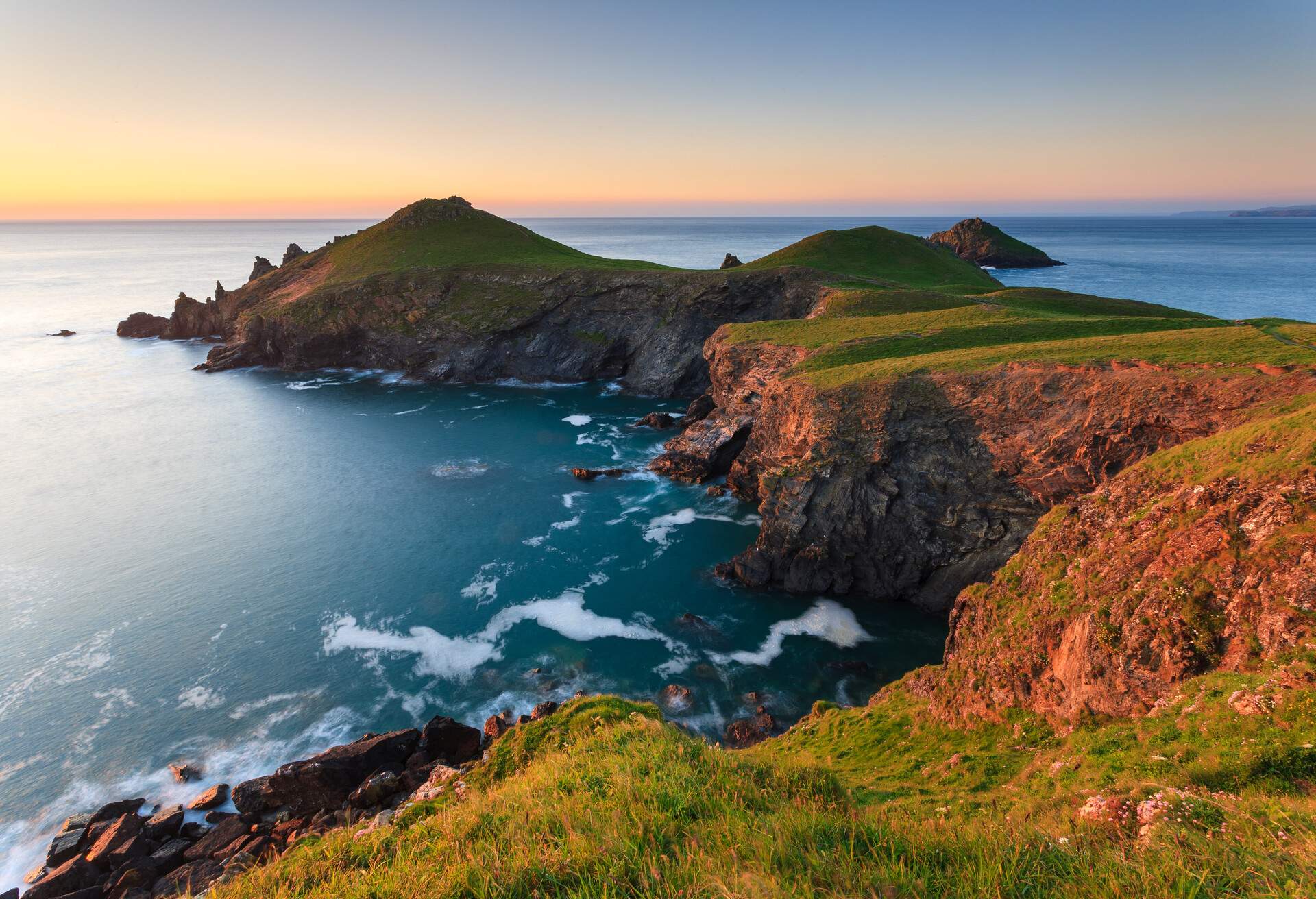

14 Best Places to Visit in Poland
Written by Diana Bocco Updated Oct 14, 2022
Poland has a history that dates back almost a thousand years, with stunning medieval architecture, remnants of WWII and its devastation, and castles and palaces in every corner of the country.
But this ancient country is also home to expansive national parks, mountains, and lakes, with seemingly endless trails cutting through virgin nature waiting to be explored.
No matter why you're heading to Poland, discover the most stunning destinations with our list of the best places to visit in Poland.
3. Tatra Mountains
5. bialowieza forest reserve, 6. bieszczady mountains, 9. zalipie village, 11. isle of usedom, 12. bialystok, 13. karpacz, map of places to visit in poland.
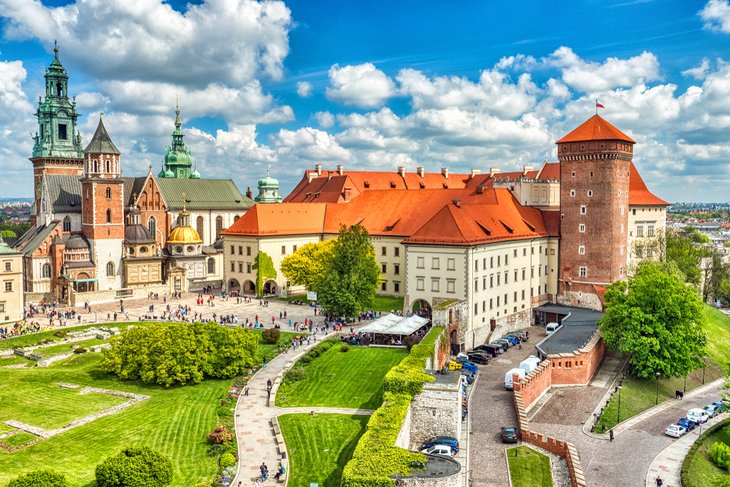
One of the oldest cities in Poland, Krakow was already inhabited back in the 7 th century. Because the city escaped most of the WWII destruction that fell on other Polish cities, Krakow's Old Town center still retains its stunning medieval architecture. The Wavel Castle and the historic district of Kazimierz – also known as the Old Jewish Quarter – in the area are both designated as UNESCO World Heritage Sites.
Krakow is home to around 40 urban parks, including 19 th -century Planty Park , which covers an area of 21 hectares and forms a green ring around the city center, and the Lasek Wolski forest , which offers hiking and biking trails in a large woodland area just minutes from the city center.
On rainy days, Krakow's 28 museums are a must-see , especially the National Art Collection at the Wawel , where visitors can also see period furniture, a massive collection of Flemish tapestries, the royal jewels, and a collection of weapons and armor dating back to the 15 th century.
For an unusual, in-depth look into ancient Krakow and its streets, there's the Rynek Underground Museum .
A number of major attractions and things to do are located outside the city and are popular as day trips. Notable points of interest include the world's oldest functioning salt mine Wieliczka , the Auschwitz-Birkenau concentration camps , and the Tatra Mountains and national park.
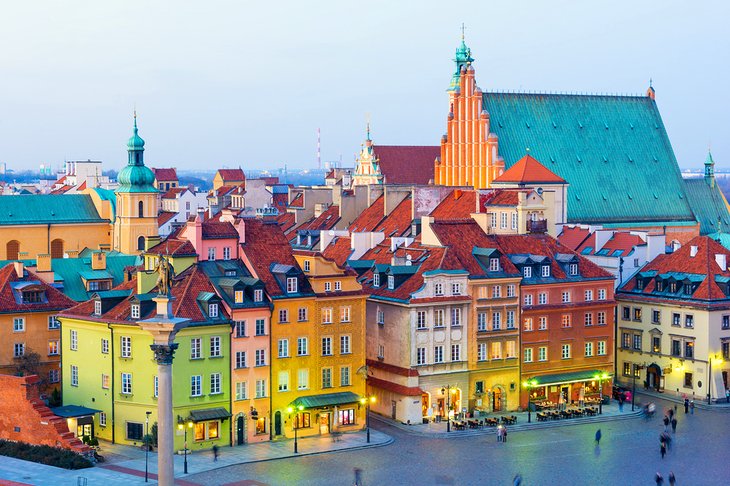
Poland's capital was left in ruins after WWII – almost 85 percent of its buildings had been turned to ash or systematically razed by Nazi forces. As soon as the war ended, the city embarked on a massive effort to reconstruct its historic center using original plans. As a result, the Baroque and Renaissance merchant houses you see today are perfect replicas of the originals.
Although WWII also caused the loss of collections held by museums and palaces, the city is still home to over 60 museums today. In addition to art and history museums, Warsaw also offers some unusual choices, including the world's only Museum of Posters , a museum dedicated to the WWII Warsaw Uprising, a Neon Museum, and a Museum of Caricature.
The National Museum , which chronicles the history of the city, also houses the largest collection of paintings in Poland – including a number of works of art that came from Adolf Hitler's private collection.
Warsaw might not have as many parks as Krakow, but Lazienki Palace and its formal gardens more than make up for it. This 18th-century palace is surrounded by 76 hectares of urban forest and is home to a planetarium, an outdoor theater, pavilions, and much more.
For a very different outdoor adventure, walk down Krakowskie Przedmiescie, Warsaw's best architectural street . Old homes, monuments, the Presidential Palace, and the Polish Academy of Sciences are all steps from each other here.
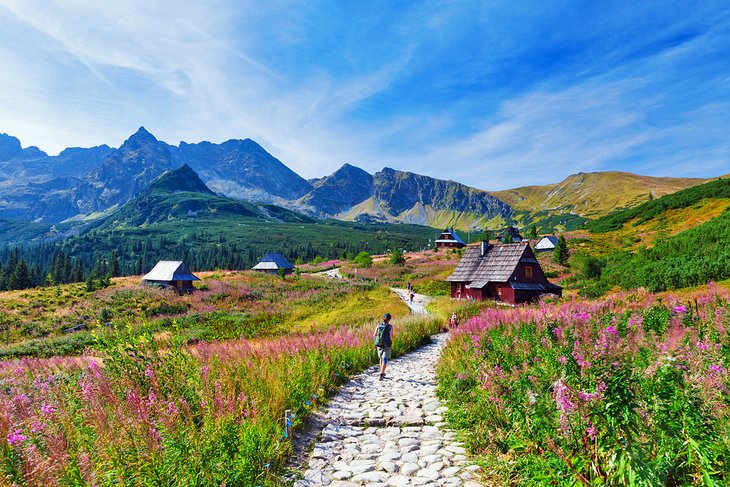
The Tatra Mountains and National Park form a natural border between Slovakia and Poland, though most of the mountain range falls into Slovakia. Because there are no borders between EU countries anymore, it's now possible to hike between countries easily. The Polish side of the park has over 270 kilometers of hiking trails.
Poland's highest mountain, Rysy, is located in the Polish Tatras . At 2,500 meters, it's the highest Tatras peak in either country that can be climbed without a park guide. In addition, the park is home to over 600 caves, with the limestone cave system, Wielka Sniezna, being the longest (23 kilometers) and deepest (824 meters).
The Tatras have waterfalls, streams, and mountain lakes. Morskie Oko lake is the largest lake in the park. Located deep within the park, it can only be reached after a two-hour hike through hills and a thick forest of Swiss pines.
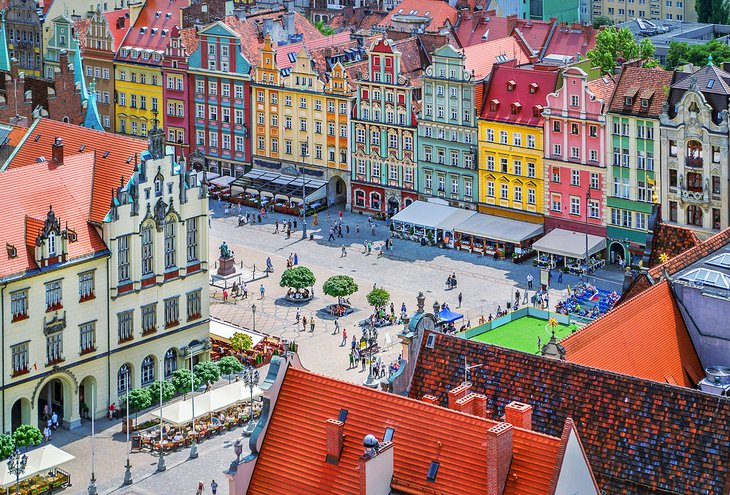
The city of Wroclaw hasn't always been Polish – over the centuries, it has belonged to everything from the Kingdom of Bohemia to Prussia to Germany. Wroclaw has only officially been part of Poland since 1945, after the end of WWII changed some of the border lines in Europe.
The Lubomirski Museum is a good place to visit to learn more about the history of the city – the museum covers the invasion of the city by Nazi forces and later the Soviet Union, as well as a number of WWII events. The Wroclaw City Museum completes that history with an overview of Wroclaw over the past 1.000 years.
Wroclaw's oldest area is the 13 th -century Main Market Square , which includes St. Elizabeth's Church and the Old Town Hall. Just a few steps away is the Pan Tadeusz Museum , with multimedia exhibits dedicated to Polish customs.
In summer, visitors can hop on open-top historic buses to travel around the city. Those exploring on foot can search for Wroclaw's dwarfs – over 350 tiny bronze figurines of elves can be found throughout the city, hiding around corners, on sidewalks, and on lampposts.
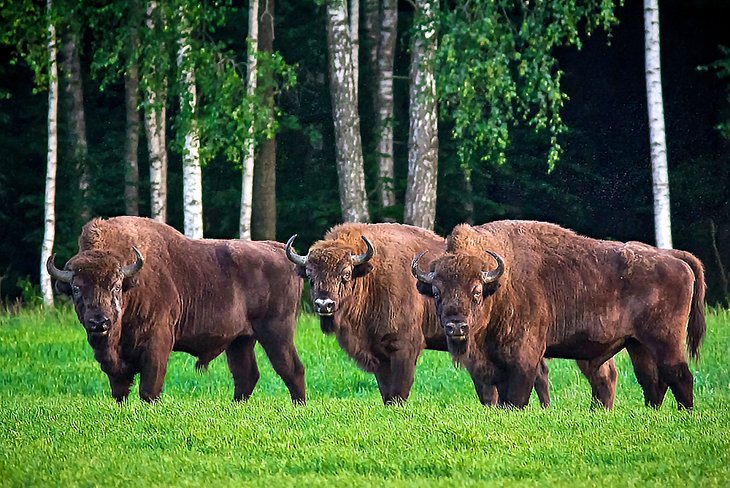
Europe's largest remaining section of the primeval forest that once covered much of the continent, the Bialowieza Forest Reserve has definitely earned its designation as a UNESCO World Heritage Site . The forest sits on the border between Poland and Belarus – a border crossing for hikers is actually located within the forest itself – and covers an area of over 1,400 square kilometers.
Bialowieza is a bird-watcher's paradise , and aficionados can join bird-watching tours headed by local ornithologists, but the forest is also home to bison and other large species.
The small village of Bialowieza is within the forest, and so is the open-air Museum of Wooden Architecture – windmills, wooden huts, a tiny wood chapel, a barn, and even a banya (sauna).
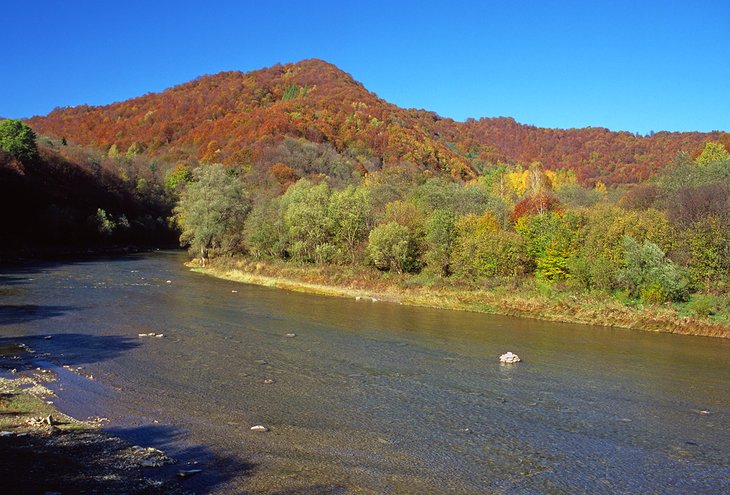
The Bieszczady Mountains are a massive range that extends all the way to Ukraine and Slovakia. They are unique because of their polonyna (a type of mountain meadow) that only occurs in the Carpathian region. Because the valleys and meadows softly slope up and down – rather than being too steep – they are a perfect destination for hiking .
Polonyna Wetlinska, topping at 1,255 meters, is one of the most famous meadow trails – a picturesque, soft climb that shouldn't take more than two hours. At the top, a small guest house – the only one in the entire mountain range – offers snacks and drinks plus a warm bed for those who want to extend their adventure.
A large section of the Bieszczady Mountains is part of the UNESCO East Carpathian Biosphere Reserve , home to brown bears, wolves, and bison and mostly covered by beech forest.
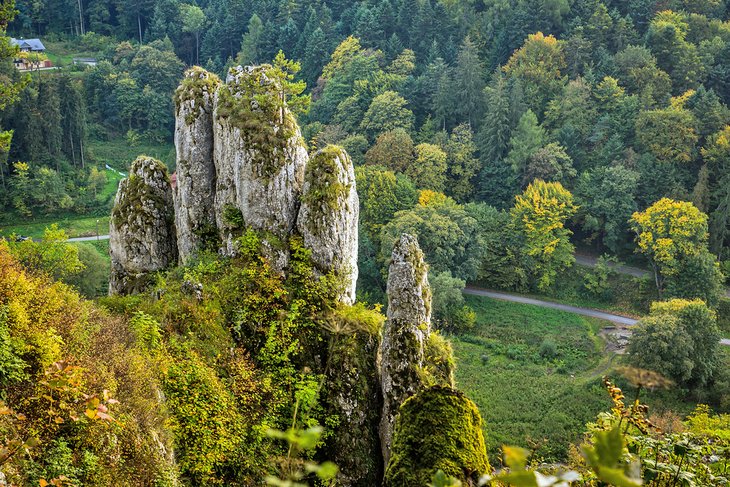
The tiny village of Ojcow, just 16 kilometers outside Krakow, is the gateway to Ojcow National Park . Poland's smallest national park at just 21.46 square kilometers, Ojcow is heavily forested and home to towering limestone cliffs, over 400 caves, and two river valleys. More than 500 species of butterflies inhabit the park – in spring and summer, they take over the trails and the flowering valleys and are a sight to behold.
The Trail of the Eagles' Nests , Poland's most famous tourist and hiking trail, connects 25 castles and watchtowers, including the Renaissance castle at Pieskowa Skala and the ruins of a Gothic castle, both of which fall within the park boundaries. There are also two museums in the park, including a branch of the National Art Collection .
Official site: https://www.ojcow.pl/en/
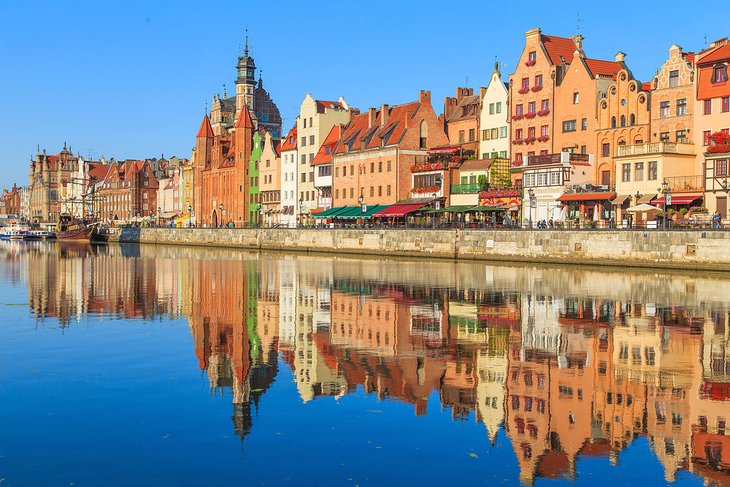
Sitting right on a bay on the Baltic Sea, the ancient city of Gdansk is home to Poland's main seaport. Most of the old part of the city – known as the Royal Route – dates back to the 17 th century and is beautifully preserved. Some of the main structures here include the City Gates, the Prison Tower, and a number of merchant houses.
Gdansk is also home to the world's largest brick church , St. Mary's , as well as the star-shaped Wisloujscie Fortress and the Gdansk Nowy Port Lighthouse.
Although Gdansk wasn't directly affected by the war, its Museum of the Second World War is one of the best historical museums in the country. It features a number of vehicles – including a Polish Sherman tank and a German DKW motorcycle – as well as artifacts, documents, and photos connected to the war and the Holocaust.
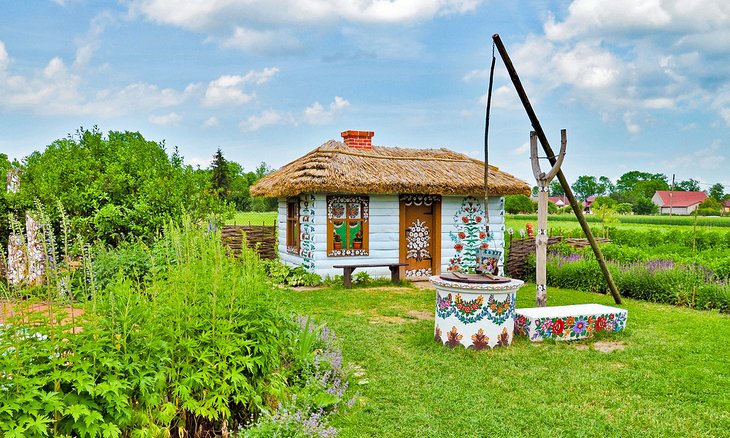
The tiny village of Zalipie is best known for the folksy flower paintings that adorn almost every building in the area. This tradition started over one hundred years ago, when local women used a mix of powdered dye and milk to cover dirty surfaces with colorful designs.
Today, almost every cottage, barn, fence, and even Saint Joseph's church is painted this way – and so are many indoor spaces, including walls and furniture.
Of the many decorated buildings, The House of the Women Painters is perhaps the most stunning. The building is the former home of Felicja Curylowa, an early 20 th -century painter born in Zalipie – her entire home, inside and out, is covered with flower paintings and has been converted into a folk museum. The museum showcases the history of the tradition and how the flowers are painted – and visitors even have a chance to try their hand at it.
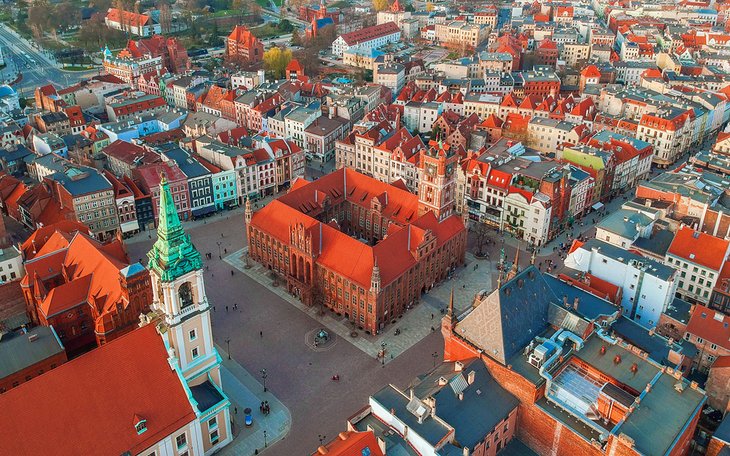
One of the oldest cities in Poland, Torun's history dates back to the 8 th century. Because Torun wasn't bombed or destroyed during WWII, the city's medieval Central Marketplace and its many Gothic houses and wood-beam 16 th -century buildings are still standing.
One of these houses is the birthplace of astronomer Nicolaus Copernicus , which has been converted into a museum about the scientist's life and work. The other must-see museum in town is Muzeum Piernika , dedicated to a type of gingerbread unique to Poland, where visitors can try hands-on baking.
The entire Old Quarter area has been designated a UNESCO World Heritage Site – it's a great area to explore on foot, getting lost in little streets to discover the architecture and soul of the area.
Torun's 13 th -century Teutonic castle is located here – it is partly in ruins, except for the sewage tower and cellars, as well as a nearby watermill.
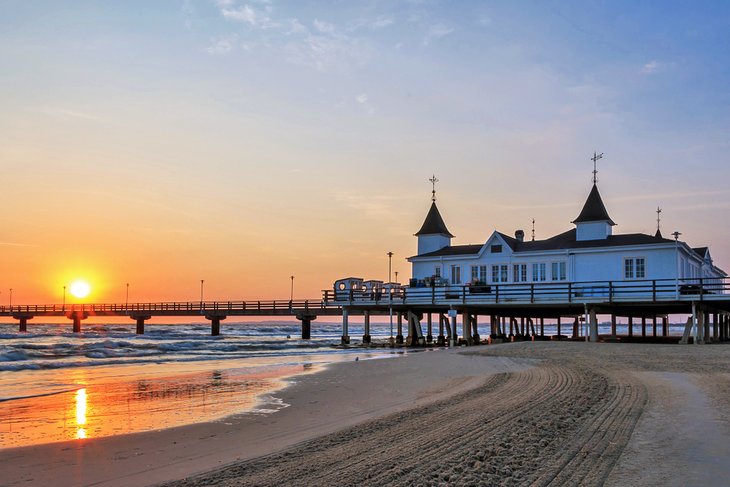
Since 1945, this island on the Baltic Sea has been legally divided between Poland and Germany. Nicknamed "the sun island" because of how many hours of sunshine it receives every year, Usedom is a popular holiday destination for both countries.
Soft white beaches, seaside resorts, and plenty of summer sports and activities are the main attractions, but the island is also home to a private botanical garden (open only during the warm months), the remnants of the Karnin Lift railway bridge (now designated as a Historic Symbol of Engineering in Germany), and the Dannenfeldt Mausoleum and cemetery.
Lakes, nature reserves, and manicured gardens are also dotted around the island.
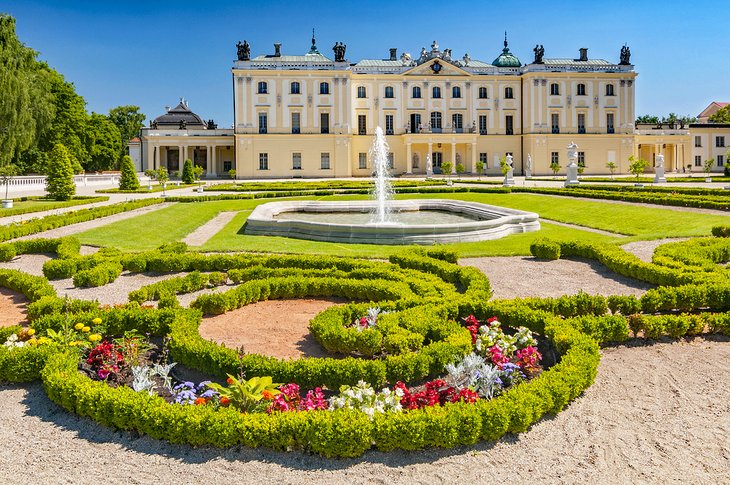
With hundreds of stunning old buildings, Białystok will please lovers of both history and architecture. Branicki Palace , built by a wealthy Polish—Lithuanian politician who once dreamed of becoming the king of Poland, is one of the most stunning sights in town – but smaller Hasbach's Palace is also worth a visit.
Make sure to walk around Kościuszko Market Square , surrounded by beautifully ornate townhouses, plenty of cozy cafés, and the Podlachian Museum, mostly dedicated to Polish paintings and art.
On a sunny day, take a walk down Lipowa street , too, which was almost completely destroyed during WWII and has been restored to become a great place to spot boutique shops and restored historical buildings.
A branch of the Podlachian Museum, the Historical Museum is an interesting stop to see what a wealthy 19th-century bourgeois home would've looked like — complete with original furniture and objects of the time.
The outdoor Podlachian Museum of Folk Culture offers over 40 traditional wooden buildings to explore (including windmills and a lumberjack's hut) and artifacts like rural transport carriages, forestry tools, and children's toys.
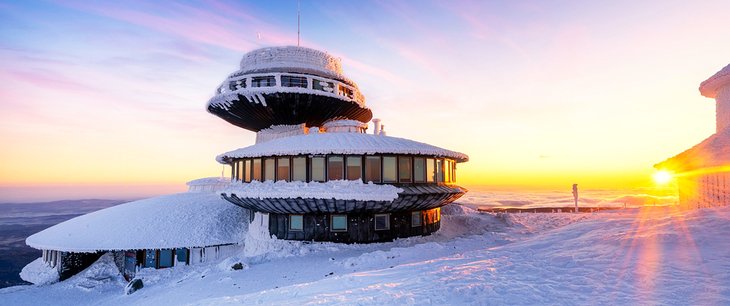
This mountain spa town gets its share of visitors in winter, who come here to enjoy skiing on popular Mount Śnieżka. Often referred to as the "winter capital of Poland," Karpacz also offers great ski jumping, snowboarding, and winter hiking.
In warmer months, nearby Karkonosze National Park offers lots of trails.
The main building in town is the 13th-century Lutheran Wang Chapel , made entirely of wood without using any nails. There are also a number of museums, including the Museum of Sports and Tourism about the area's history, a Museum of Toys , and the unique World of Trains, featuring a large collection of railway models.
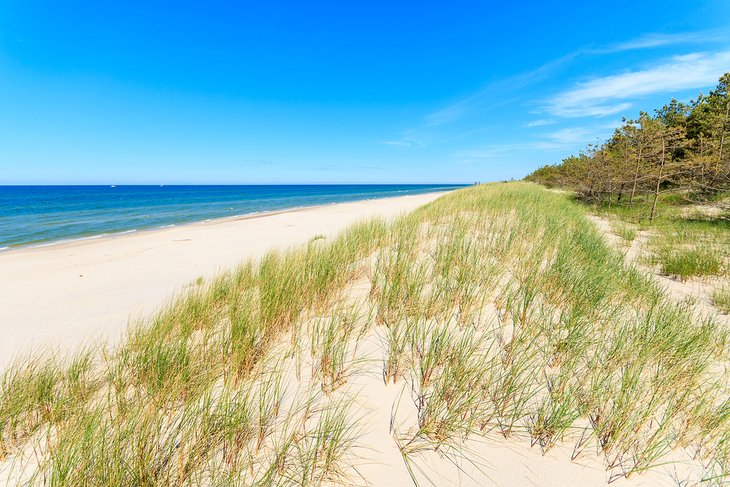
The tiny village of Leba is one of Poland's best destinations for beach life. Though busy and filled with visitors in summer, Leba retains its lazy vibe, with the rolling sand dunes and the soft waves at the center of the attractions here.
For those wanting more things to do than just sit back and enjoy the sun, there's horseback riding and over 140 kilometers of hiking trails in the area.
With 32 kilometers of coastline, Slowinski National Park is home to "moving dunes," which are carried by the winds and move up to 10 meters a year. It's a stunning vision and a favorite stop for visitors. There's also pine forests and peat bogs to explore here, plus great opportunities for bird-watching.
More Related Articles on PlanetWare.com
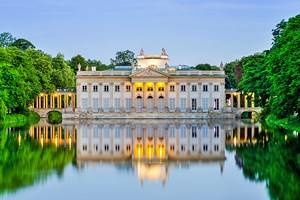
Discovering Poland: This Eastern European country often makes it into the lists of top-rated cheap places to visit in Europe – it offers all the history, culture, and natural beauty you might want without breaking the bank.
For an introduction to some of the most stunning destinations in the country, take a look at our list of the Top-Rated Tourist Attractions in Poland .
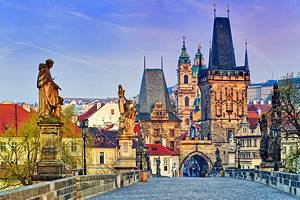
Exploring Around: Poland shares its Western borders with Germany and the Czech Republic – both of which are close enough for a great weekend trip (or sometimes even a long day trip).
For a stunning mix of natural beauty, history, and culture, take a look at our list of the Top-Rated Tourist Attractions in Germany . For castles and more hiking than you could ever want, hop over to our article on the Top-Rated Tourist Attractions in the Czech Republic .

- PL - polski
Poland in the UK
D-type national visa.
- Information about refunding student fees in case of receiving a visa refusal in order to start or continue studies
According to the Decision no 99 of the Polish Ministry of Foreign Affairs dated 27th August 2012 on establishing in certain countries consular offices issuing visas, the only consular office issuing visas in the United Kingdom is the Consular and Polish Diaspora Section of the Embassy of the Republic of Poland in London. In order to submit a visa application it is necessary to make an appointment at the Consular and Polish Diaspora Section in London by registering the application via the e-Consulate system.
If you need more information, please contact us at: [email protected] .
The visa application form must be submitted in person . We do not accept application forms sent via fax or e-mail.
To submit your visa application you are required to register your visa visit through the e-Consulate system and complete the relevant visa form. New visa appointment slots are released every working day around 8:00 pm . There are different types of visa as mentioned below:
- National Visa – UK nationals – study,
- National Visa – UK nationals – work,
- National Visa – others.
ATTENTION! Please ensure that the type of visa you are going to apply for corresponds with the purpose of your trip to Poland and all reservations are made accordingly. Visa applications registered incongruently with the visa type and purpose of travel to Poland will be automatically removed from the system.
- A visa application form filled via the e-Consulate system, printed and signed;
- sharp, taken against white background and printed on a quality paper,
- newer than 6 months,
- taken en face, clearly showing the eyes and face on both sides from the top of the head to the top of the shoulders with the face covering 70-80% of the photo. The photo must be taken without any headwear.
- Passport issued within last ten years, valid for at least three months from the expected return date, with at least two blank pages for visas.
- UK residence permit. If your residence permit is in your expired passport, please bring your old passport together with the current one.
- Healthcare insurance valid across the European Union for the amount not lower than EUR 30,000. Information of the Minister of Foreign Affairs about the insurers and the insurances that they offer, which meet the necessary conditions referred to in Article 25 (1) (2) (a) and Article 25 (1b) of the Act of 12 December 2013 on Foreigners is available on the website of the Ministry of Foreign Affairs .
- Proof that you have enough means of subsistence in the form decided by the mission – banks statement (last month), pre-paid travel card.
- A proof of accommodation (for example, an official invitation or a hotel booking or reservation).
- Documents confirming the purpose of your stay Poland .
National visa to work in Poland:
- The original form of the work permit issued by the local Municipal Office in Poland;
- Proof of accommodation during stay in Poland.
National visa to study in Poland:
- Recent letter from your school or university ; the letter should be addressed to the Visa Section of the Embassy of the Republic of Poland in London;
- Students should ensure that their letter includes information about the type of the course, school attendance and intended period of leave/holidays taken from school for the journey;
- Confirmation letter from a school in Poland; this letter should include information about the type of study, duration etc., with the confirmation of the fee payment;
- Proof of accommodation (for your intended stay in Poland).
Additionally, when applying for a visa for a minor you should present:
- Minors shall submit an application form signed by a person exercising permanent or temporary parental authority or legal guardianship;
- Originals and copies of parents' passports;
- An original and a copy of a birth certificate.
If the child is entered in the parent's or legal guardian’s passport, please submit a separate visa application. The child's visa will be pasted into the parent's or the legal guardian's passport.
Please note:
- Usually, the above documents are enough to receive a visa, however, the consul may require additional documents.
- The consul may, but does not have to, invite the applicant for an interview.
- The D-type visas allow you to stay in other Schengen states for 90 days of any 180-day period. It means that you can legally stay in the Schengen Area only if your stay was shorter than 90 days over the past 180 days.
- The D-type visa is valid for a maximum of one year.
- Please note, that receiving your visa does not guarantee that you will enter Poland - the final decision is always made by the Border Guard.
Visa fees for the nationals of Ukraine:
- National visa (D) for Poland: 0 GBP
The visa application fee is non-returnable, whatever the consul's decision.
The decision on the issue of a visa is made within 15 working days from the payment date of application fee. If the documents need to be examined in more detail, the consideration period may be extended to 30 days.
You should collect document in person . The documents may be returned to you by post, but you are requested to submit a prepaid, correctly addressed Special Delivery envelope in this case.
Visa decisions collection in person:
If you do not agree with the consul's decision, you may ask to have your visa application re-considered. You must apply for the reconsideration in the office that issued the decision within 14 days of its delivery.
The application fee in this case is 70 GBP .
You have to book your appointment to apply for a visa via the e-Consulate system.
Legal basis
Regulation (EC) No 810/2009 of the European Parliament and of the Council of 13 July 2009 establishing a Community Code on Visas (Visa Code)
The Act on Foreigners of 12 December 2013
The Consular Law Act of 25 June 2015
Regulation of the Minister of Foreign Affairs on consular fees of 5 May 2022
- Skip to main content
- Skip to "About this site"
Language selection
Search travel.gc.ca.
Help us to improve our website. Take our survey !
COVID-19: travel health notice for all travellers
Poland travel advice
Latest updates: The Need help? section was updated.
Last updated: April 3, 2024 08:49 ET
On this page
Safety and security, entry and exit requirements, laws and culture, natural disasters and climate, poland - take normal security precautions.
Take normal security precautions in Poland
Back to top
Impacts of the armed conflict in Ukraine
In February 2022, Russia began a military invasion of Ukraine.
There has been a significant increase in the number of displaced persons entering Poland from Ukraine. There are important delays at border crossings. Transportation and other essential services may be strained due to the high demand.
Projectiles from the armed conflict in Ukraine have landed in areas near the Ukrainian border, causing casualties. Be aware of your surroundings.
If you are near the border with Ukraine or are transiting through border areas:
- expect highly congested routes, checkpoints and transportation delays
- expect limited accommodations options
- contact your transport carrier to determine whether the situation could disrupt your onward travel
Petty crime
Petty crime, such as pickpocketing and purse snatching, occurs, mostly in larger cities.
Theft is frequent in:
- buses, trains, bus and train stations and airports
- major tourist destinations, including busy markets
- areas near hotels
On the train:
- exercise caution, particularly at night
- be extra cautious while you board and disembark
- store personal belongings in a safe place
- ensure the door to your compartment is locked from the inside
On the road:
- be especially vigilant when stopped at traffic lights, as thieves travelling on scooters or on foot can snatch bags from passenger seats
- keep your windows closed and car doors locked at all times
- keep your bags out of the reach of pedestrians
Passport theft
Ensure that your personal belongings, including your passport and other travel documents, are secure at all times.
You must report the loss or theft of your passport to the local police. A police report is required to issue a new passport or to replace a Polish visa.
There are reports of individuals being harassed for the following reasons:
- physical appearance
- sexual orientation
- acting or appearing as foreigners
Women's safety
Women travelling alone in some rural areas may be subject to some forms of harassment and verbal abuse.
Advice for women travellers
Credit card and ATM fraud occurs, particularly at bars and nightclubs.
When using debit or credit cards:
- pay careful attention when your cards are being handled by others
- use ATMs located in well-lit public areas or inside a bank or business
- avoid using card readers with an irregular or unusual feature
- cover the keypad with one hand when entering your PIN
- check for any unauthorized transactions on your account statements
Cybercrime
Cybercrime occurs in Poland. Perpetrators may compromise public Wi-Fi networks to steal credit card or personal information.
- Avoid using unsecured public Wi-Fi networks
- Avoid making purchases on unencrypted websites
- Be cautious when posting information on social media
- Be particularly vigilant if you decide to meet someone you met online
- Never click a suspicious link in an email or text message asking for your credit card detail
Overseas fraud
Spiked food and drinks
Snacks, beverages, gum and cigarettes may contain drugs that could put you at risk of sexual assault and robbery.
- Be wary of accepting these items from new acquaintances
- Never leave food or drinks unattended or in the care of strangers
Exercise caution at bars, nightclubs and adult entertainment venues that lure clients with promises of discounts. Customers have been served spiked drinks and then overcharged on their credit cards while under the influence of intoxicants at such establishments.
- Carry a limited amount of cash
- Verify the price list before ordering and the bill before paying
- Report all crimes to the local police before leaving the country because you cannot complete a police report after leaving Poland
Demonstrations
Demonstrations and marches occur frequently. They are usually held on days of social or historical significance, such as:
- National Independence Day on November 11
- International Worker’s Day on May 1
- the anniversary of the Smolensk air disaster on April 10
In Warsaw, protests often occur in front of Polish government buildings and foreign diplomatic missions.
Even peaceful demonstrations can turn violent at any time. They can also lead to disruptions to traffic and public transportation.
- Avoid areas where demonstrations, marches, and large gatherings are taking place
- Expect a heightened security presence
- Follow the instructions of local authorities
- Monitor local media for information on ongoing demonstrations
Mass gatherings (large-scale events)
There is a threat of terrorism in Europe. Terrorist attacks have occurred in a number of European cities. There is a potential for other violent incidents.
Targets could include:
- government buildings, including schools
- places of worship
- airports and other transportation hubs and networks
- public areas such as tourist attractions, restaurants, bars, coffee shops, shopping centres, markets, hotels and other sites frequented by foreigners
Always be aware of your surroundings when in public places.
Soccer matches
Confrontations, which at times become violent, may occur between opposing fans at soccer matches. Traffic and public transportation may also be affected. Fan clubs operate similarly to gangs and certain clubs have links to organized crime.
- Exercise caution if you attend a soccer match or if you stay near sporting venues
- Be aware of large groups of supporters during soccer matches
Adventure tourism
The South of Poland contains two high mountain ranges, the Carpathians and Sudetes. Mountain activities, such as hiking, climbing, and skiing, can be dangerous if unprepared. Weather conditions can change rapidly and can be severe, even in the summer. Lightning strikes are particularly common in the Tatra region of the Carpathians, as well as a risk of sudden storms and avalanches.
If you intend to go hiking, mountaineering, or skiing:
- never do so alone and don’t part with your tour companions
- buy travel insurance that includes helicopter rescue and medical evacuation
- ensure that your physical condition is good enough to meet the challenges of your activity
- ensure that you are properly equipped and well informed about weather and other conditions that may pose a hazard
- inform a family member or friend of your itinerary, including when you expect to be back to camp
- know the symptoms of acute altitude sickness, which can be fatal
- obtain detailed information on trekking routes or ski slopes before setting out and do not venture off marked trails or slopes, particularly in early or late winter
Useful Links
- Conditions, avalanche alerts and warning – Mountain Volunteer Rescue Service (in Polish only)
- Alerts and information specific to Tatra region – Tatra Rescue Foundation
Road safety
Poland continues to improve its highway system, but travel by road can be hazardous outside of major centres. Slow-moving agricultural vehicles are common in rural areas. Drivers often pass slow-moving vehicles by crossing into oncoming traffic.
Road conditions
Rural roads are often narrow with no shoulders for pedestrians or cyclists.
Driving can also be dangerous due to:
- the lack of speed limit signs
- poorly maintained secondary roads
- traffic congestion
Avoid travelling after dark in remote areas.
Driving habits
Drivers may be aggressive and do not respect traffic laws, especially at pedestrian crossings. Road rage is common.
The country’s role as a major east-west route for transport trucks also poses risks. Vehicles entering Poland from outside the EU may have lower safety or emissions standards and drivers may not respect all traffic laws.
In Warsaw, authorities routinely block major roads for ceremonies, state visits, or national holidays.
Public transportation
There have been reports of sexual assault and harassment in unofficial taxis. Officially marked taxis will display the rate per kilometre on the back passenger window, visible from the outside. They are also required to have an operating meter.
- Only use officially marked taxis
- Make sure that the taxi has an operating meter or pre-arrange your fare
- Be wary of taxi drivers who approach you at the airport or whose vehicles do not display telephone numbers or a company name, these drivers usually charge exorbitant rates.
We do not make assessments on the compliance of foreign domestic airlines with international safety standards.
Information about foreign domestic airlines
Every country or territory decides who can enter or exit through its borders. The Government of Canada cannot intervene on your behalf if you do not meet your destination’s entry or exit requirements.
We have obtained the information on this page from the Polish authorities. It can, however, change at any time.
Verify this information with the Foreign Representatives in Canada .
- Schengen area
Poland is a Schengen area country. Canadian citizens do not need a visa for travel to countries within the Schengen area. However, visa-free travel only applies to stays of up to 90 days in any 180-day period. Stays are cumulative and include visits to any Schengen area country.
If you plan to stay in the Schengen area for a longer period of time, you will need a visa. You must contact the high commission or embassy of the country or countries you are travelling to and obtain the appropriate visa(s) prior to travel.
Useful links
- Foreign Representatives in Canada
Entry requirements vary depending on the type of passport you use for travel.
Before you travel, check with your transportation company about passport requirements. Its rules on passport validity may be more stringent than the country’s entry rules.
Regular Canadian passport
Your passport must be valid for at least 3 months beyond the date you expect to leave the Schengen area.
Passport for official travel
Different entry rules may apply.
Official travel
Passport with “X” gender identifier
While the Government of Canada issues passports with an “X” gender identifier, it cannot guarantee your entry or transit through other countries. You might face entry restrictions in countries that do not recognize the “X” gender identifier. Before you leave, check with the closest foreign representative for your destination.
Other travel documents
Different entry rules may apply when travelling with a temporary passport or an emergency travel document. Before you leave, check with the closest foreign representative for your destination.
- Foreign Representatives in Canada
- Canadian passports
Tourist visa: not required for stays up to 90 days* Business visa: not required for stays up to 90 days* Work visa: required Student visa: required
* The 90-day period begins upon initial entry into any country of the Schengen area. Stays are cumulative and include visits to any Schengen area country within any 180-day period.
To stay longer than 90 days, Canadians must apply either for a Polish visa in Canada before arriving in Poland or for a temporary residence permit while in Poland and must have a valid reason for extending their stay, such as education or employment.
Extending your stay in Poland - Office for Foreigners
Entry from Belarus or Russia
On February 10 2023, Polish authorities closed the border crossing at Bobrowniki, near Berestovitsa, Belarus. The only border crossing open for cars and buses on the Polish-Belarus border is at Brest/Terespol.
If you intend to travel to Poland from Belarus or Russia, you must apply for a humanitarian reasons permit.
For more information, contact the Polish Border Guards:
- Phone: +48 22 500 4068, +48 22 500 4568, or + 48 22 500 43 76
- Email: [email protected]
Entry to Poland through external borders - Polish Border Guards
Vehicles with Russian license plates
Since September 2023, Poland has enforced an entry ban on vehicles registered in Russia with nine or fewer seats. This restriction is currently in place at the border and reflects existing European Union sanctions against the Russian Federation.
Vehicles registered in Russia carrying Russian license plates will be refused entry into Poland regardless of the driver’s nationality.
Ban on the import of passenger cars registered in Russia – Polish Border Guards (in Polish)
Dual citizenship
Canadians who also hold Polish citizenship must enter and exit Poland using their Polish passport.
Other entry requirements
Customs officials may ask you to show them a return ticket or onward ticket and proof of sufficient funds for your stay.
Mandatory registration
Foreigners must register their stay in Poland within 48 hours of arrival if the stay is to exceed 14 days. Registration will normally be arranged by your hotel. If you are not staying in a hotel, your host, landlord or holder of the property deed of the residence must register your stay. You should confirm with your host that they have registered you when you arrive at your accommodations.
Children and travel
Learn more about travelling with children .
Yellow fever
Learn about potential entry requirements related to yellow fever (vaccines section).
Relevant Travel Health Notices
- Global Measles Notice - 13 March, 2024
- COVID-19 and International Travel - 13 March, 2024
This section contains information on possible health risks and restrictions regularly found or ongoing in the destination. Follow this advice to lower your risk of becoming ill while travelling. Not all risks are listed below.
Consult a health care professional or visit a travel health clinic preferably 6 weeks before you travel to get personalized health advice and recommendations.
Routine vaccines
Be sure that your routine vaccinations , as per your province or territory , are up-to-date before travelling, regardless of your destination.
Some of these vaccinations include measles-mumps-rubella (MMR), diphtheria, tetanus, pertussis, polio, varicella (chickenpox), influenza and others.
Pre-travel vaccines and medications
You may be at risk for preventable diseases while travelling in this destination. Talk to a travel health professional about which medications or vaccines may be right for you, based on your destination and itinerary.
Yellow fever is a disease caused by a flavivirus from the bite of an infected mosquito.
Travellers get vaccinated either because it is required to enter a country or because it is recommended for their protection.
- There is no risk of yellow fever in this country.
Country Entry Requirement*
- Proof of vaccination is not required to enter this country.
Recommendation
- Vaccination is not recommended.
* It is important to note that country entry requirements may not reflect your risk of yellow fever at your destination. It is recommended that you contact the nearest diplomatic or consular office of the destination(s) you will be visiting to verify any additional entry requirements.
About Yellow Fever
Yellow Fever Vaccination Centres in Canada
There is a risk of hepatitis A in this destination. It is a disease of the liver. People can get hepatitis A if they ingest contaminated food or water, eat foods prepared by an infectious person, or if they have close physical contact (such as oral-anal sex) with an infectious person, although casual contact among people does not spread the virus.
Practise safe food and water precautions and wash your hands often. Vaccination is recommended for all travellers to areas where hepatitis A is present.
Tick-borne encephalitis (TBE) is a risk in some areas of this destination. It is a viral disease that affects the central nervous system (brain and spinal cord). It is spread to humans by the bite of infected ticks or occasionally when unpasteurized milk products are consumed.
Travellers to areas where TBE is found may be at higher risk during April to November, and the risk is highest for people who hike or camp in forested areas.
Protect yourself from tick bites . The vaccine is not available in Canada. It may be available in the destination you are travelling to.
Measles is a highly contagious viral disease. It can spread quickly from person to person by direct contact and through droplets in the air.
Anyone who is not protected against measles is at risk of being infected with it when travelling internationally.
Regardless of where you are going, talk to a health care professional before travelling to make sure you are fully protected against measles.
Hepatitis B is a risk in every destination. It is a viral liver disease that is easily transmitted from one person to another through exposure to blood and body fluids containing the hepatitis B virus. Travellers who may be exposed to blood or other bodily fluids (e.g., through sexual contact, medical treatment, sharing needles, tattooing, acupuncture or occupational exposure) are at higher risk of getting hepatitis B.
Hepatitis B vaccination is recommended for all travellers. Prevent hepatitis B infection by practicing safe sex, only using new and sterile drug equipment, and only getting tattoos and piercings in settings that follow public health regulations and standards.
Coronavirus disease (COVID-19) is an infectious viral disease. It can spread from person to person by direct contact and through droplets in the air.
It is recommended that all eligible travellers complete a COVID-19 vaccine series along with any additional recommended doses in Canada before travelling. Evidence shows that vaccines are very effective at preventing severe illness, hospitalization and death from COVID-19. While vaccination provides better protection against serious illness, you may still be at risk of infection from the virus that causes COVID-19. Anyone who has not completed a vaccine series is at increased risk of being infected with the virus that causes COVID-19 and is at greater risk for severe disease when travelling internationally.
Before travelling, verify your destination’s COVID-19 vaccination entry/exit requirements. Regardless of where you are going, talk to a health care professional before travelling to make sure you are adequately protected against COVID-19.
The best way to protect yourself from seasonal influenza (flu) is to get vaccinated every year. Get the flu shot at least 2 weeks before travelling.
The flu occurs worldwide.
- In the Northern Hemisphere, the flu season usually runs from November to April.
- In the Southern Hemisphere, the flu season usually runs between April and October.
- In the tropics, there is flu activity year round.
The flu vaccine available in one hemisphere may only offer partial protection against the flu in the other hemisphere.
The flu virus spreads from person to person when they cough or sneeze or by touching objects and surfaces that have been contaminated with the virus. Clean your hands often and wear a mask if you have a fever or respiratory symptoms.
In this destination, rabies may be present in some wildlife species, including bats. Rabies is a deadly disease that spreads to humans primarily through bites or scratches from an infected animal.
If you are bitten or scratched by an animal while travelling, immediately wash the wound with soap and clean water and see a health care professional.
Before travel, discuss rabies vaccination with a health care professional. It may be recommended for travellers who will be working directly with wildlife.
Safe food and water precautions
Many illnesses can be caused by eating food or drinking beverages contaminated by bacteria, parasites, toxins, or viruses, or by swimming or bathing in contaminated water.
- Learn more about food and water precautions to take to avoid getting sick by visiting our eat and drink safely abroad page. Remember: Boil it, cook it, peel it, or leave it!
- Avoid getting water into your eyes, mouth or nose when swimming or participating in activities in freshwater (streams, canals, lakes), particularly after flooding or heavy rain. Water may look clean but could still be polluted or contaminated.
- Avoid inhaling or swallowing water while bathing, showering, or swimming in pools or hot tubs.
Insect bite prevention
Many diseases are spread by the bites of infected insects such as mosquitoes, ticks, fleas or flies. When travelling to areas where infected insects may be present:
- Use insect repellent (bug spray) on exposed skin
- Cover up with light-coloured, loose clothes made of tightly woven materials such as nylon or polyester
- Minimize exposure to insects
- Use mosquito netting when sleeping outdoors or in buildings that are not fully enclosed
To learn more about how you can reduce your risk of infection and disease caused by bites, both at home and abroad, visit our insect bite prevention page.
Find out what types of insects are present where you’re travelling, when they’re most active, and the symptoms of the diseases they spread.
Animal precautions
Some infections, such as rabies and influenza, can be shared between humans and animals. Certain types of activities may increase your chance of contact with animals, such as travelling in rural or forested areas, camping, hiking, and visiting wet markets (places where live animals are slaughtered and sold) or caves.
Travellers are cautioned to avoid contact with animals, including dogs, livestock (pigs, cows), monkeys, snakes, rodents, birds, and bats, and to avoid eating undercooked wild game.
Closely supervise children, as they are more likely to come in contact with animals.
Person-to-person infections
Stay home if you’re sick and practise proper cough and sneeze etiquette , which includes coughing or sneezing into a tissue or the bend of your arm, not your hand. Reduce your risk of colds, the flu and other illnesses by:
- washing your hands often
- avoiding or limiting the amount of time spent in closed spaces, crowded places, or at large-scale events (concerts, sporting events, rallies)
- avoiding close physical contact with people who may be showing symptoms of illness
Sexually transmitted infections (STIs) , HIV , and mpox are spread through blood and bodily fluids; use condoms, practise safe sex, and limit your number of sexual partners. Check with your local public health authority pre-travel to determine your eligibility for mpox vaccine.
Medical services and facilities
Satisfactory medical care is available in Poland. However, emergency services may be deficient in small towns and rural areas. Some doctors will speak English, but most hospital staff only speak Polish. Medical services require payment up-front. Keep your receipt for reimbursement by your insurance provider.
Make sure you get travel insurance that includes coverage for medical evacuation and hospital stays.
For an ambulance call 112.
For information about medical services outside of business hours call the National Health Fund info line: +48 22 125-6600 or 800 190 590. Service is available in English.
Make sure you get travel insurance that includes coverage for medical evacuation and hospital stays.
Travel health and safety
Keep in Mind...
The decision to travel is the sole responsibility of the traveller. The traveller is also responsible for his or her own personal safety.
Be prepared. Do not expect medical services to be the same as in Canada. Pack a travel health kit , especially if you will be travelling away from major city centres.
You must abide by local laws.
Learn about what you should do and how we can help if you are arrested or detained abroad .
Transfer to a Canadian prison
Canada and Poland are signatories to the Convention on the Transfer of Sentenced Persons. This enables a Canadian imprisoned in Poland to request a transfer to a Canadian prison to complete a sentence. The transfer requires the agreement of both Canadian and Poland authorities.
This process can take a long time, and there is no guarantee that the transfer will be approved by either or both sides.
Poland does not recognize dual citizenship and does not allow its citizens to serve sentences abroad. Dual nationals may, therefore, not receive the agreement of the Polish authorities to be transferred to a prison in Canada.
Penalties for possession, use or trafficking of illegal drugs are severe. Convicted offenders can expect lengthy jail sentences.
It is illegal to consume alcohol in public places. If you are found intoxicated in a public area, you may be detained and could be taken to a sobering-up centre, where you may need to spend the night. You will be responsible for paying the cost of the stay.
Drugs, alcohol and travel
Photography
Photography of military installations and some public buildings and monuments may result in a penalty. These installations generally have adequate signage. If in doubt, you should seek permission from local authorities before taking photographs.
Dual citizenship is not legally recognized in Poland.
If local authorities consider you a citizen of Poland, they may refuse to grant you access to Canadian consular services. This will prevent us from providing you with those services.
Travellers with dual citizenship
International Child Abduction
The Hague Convention on the Civil Aspects of International Child Abduction is an international treaty. It can help parents with the return of children who have been removed to or retained in certain countries in violation of custody rights. The convention applies between Canada and Poland.
If your child was wrongfully taken to, or is being held in Poland, and if the applicable conditions are met, you may apply for the return of your child to the Polish court.
If you are in this situation:
- act as quickly as you can
- contact the Central Authority for your province or territory of residence for information on starting an application under The Hague Convention
- consult a lawyer in Canada and in Poland to explore all the legal options for the return of your child
- report the situation to the nearest Canadian government office abroad or to the Vulnerable Children’s Consular Unit at Global Affairs Canada by calling the Emergency Watch and Response Centre
If your child was removed from a country other than Canada, consult a lawyer to determine if The Hague Convention applies.
Be aware that Canadian consular officials cannot interfere in private legal matters or in another country’s judicial affairs.
- List of Canadian Central Authorities for the Hague Convention
- International Child Abduction: A Guidebook for Left-Behind Parents
- Travelling with children
- The Hague Convention - Hague Conference on Private International Law
- Canadian embassies and consulates by destination
- Emergency Watch and Response Centre
Identification
Local authorities may request to see your ID at any time.
- Carry valid identification or a photocopy of it at all times
- Keep a photocopy of your passport in a safe place in case it’s lost or seized
- Keep a digital copy of your ID and travel documents
You must carry an international driving permit. It must be obtained prior to arrival in Poland.
The use of cellular telephones while driving is prohibited, unless they are fitted with a hands-free device.
The use of seatbelts is mandatory for the driver and any passenger in the car. Children below 150 cm may not ride in the front seat without a child car seat. Infants in a rear-facing child car seat may only sit in the front seat of the car if the airbag is deactivated.
Headlights must be on at all times.
Penalties for drinking and driving are severe. The legal blood alcohol limit is 0.02 percent. Convicted offenders face heavy fines and jail sentences.
Foreigners may be required to pay traffic violation fines on the spot.
- More about the International Driving Permit
- Information on road safety and regulations - European Commission
Riding a bike under the influence of alcohol is illegal and subject to detention and fines.
In rural areas, cyclists and pedestrians must wear reflective clothing (or vest) when on the road between dusk and dawn or risk a fine. A cyclist or pedestrian involved in an accident and not wearing a reflective item could be held liable.
Transporation tickets must be validated at the start of any trip. You could be fined on the spot if you fail to show a validated ticket to an official upon request.
Always ensure that:
- you have purchased and validated your ticket
- the ticket matches the area and mode of transportation in which you are travelling
The currency of Poland is the zloty (PLN).
If you are carrying €10,000 or more, or the equivalent in other currencies, you must make a declaration to customs when you enter or leave the European Union. It includes sums in:
- banknotes and coins
- bearer negotiable instruments such as cheques, travellers’ cheques, promissory notes and money orders
- bonds, shares
- gold coins with a gold content of at least 90 %
- gold bars, nuggets or clumps with a gold content of at least 99.5 %
- any other convertible asset
This does not apply if you are travelling within the European Union or in transit to a non-EU country.
EU cash controls - European Commission
Climate change
Climate change is affecting Poland. Extreme and unusual weather events are becoming more frequent and may affect your travel plans. Monitor local news to stay informed on the current situation.
Flooding
Heavy rains and thunderstorms are frequent during the summer, sometimes resulting in flooding.
- Monitor regional weather forecasts
- Follow the instructions of local authorities.
Local services
Dial 112 for emergency assistance.
Consular assistance
For emergency consular assistance, call the embassy of Canada in Warsaw and follow the instructions. At any time, you may also contact the Emergency Watch and Response Centre in Ottawa.
The decision to travel is your choice and you are responsible for your personal safety abroad. We take the safety and security of Canadians abroad very seriously and provide credible and timely information in our Travel Advice to enable you to make well-informed decisions regarding your travel abroad.
The content on this page is provided for information only. While we make every effort to give you correct information, it is provided on an "as is" basis without warranty of any kind, expressed or implied. The Government of Canada does not assume responsibility and will not be liable for any damages in connection to the information provided.
If you need consular assistance while abroad, we will make every effort to help you. However, there may be constraints that will limit the ability of the Government of Canada to provide services.
Learn more about consular services .
Risk Levels
take normal security precautions.
Take similar precautions to those you would take in Canada.
Exercise a high degree of caution
There are certain safety and security concerns or the situation could change quickly. Be very cautious at all times, monitor local media and follow the instructions of local authorities.
IMPORTANT: The two levels below are official Government of Canada Travel Advisories and are issued when the safety and security of Canadians travelling or living in the country or region may be at risk.
Avoid non-essential travel
Your safety and security could be at risk. You should think about your need to travel to this country, territory or region based on family or business requirements, knowledge of or familiarity with the region, and other factors. If you are already there, think about whether you really need to be there. If you do not need to be there, you should think about leaving.
Avoid all travel
You should not travel to this country, territory or region. Your personal safety and security are at great risk. If you are already there, you should think about leaving if it is safe to do so.
Cookies on GOV.UK
We use some essential cookies to make this website work.
We’d like to set additional cookies to understand how you use GOV.UK, remember your settings and improve government services.
We also use cookies set by other sites to help us deliver content from their services.
You have accepted additional cookies. You can change your cookie settings at any time.
You have rejected additional cookies. You can change your cookie settings at any time.
- Defence and armed forces
PM to announce largest-ever military aid package to Ukraine on visit to Poland
Prime Minister Rishi Sunak will announce the largest-ever military aid package to Ukraine on his visit to Poland.
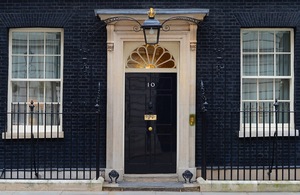
- PM to travel to Poland and Germany to cement security, trade and diplomatic ties with key European allies
- He is expected to announce a £500 million boost for Ukraine and largest-ever provision of vital munitions, including some 400 vehicles, 1,600 munitions and 4 million rounds of ammunition
- PM to discuss the threat from Russia and UK efforts to support European security with Prime Minister Tusk and the Nato Secretary-General in Warsaw
The Prime Minister will travel to Poland today [Tuesday 23 April] to announce a massive uplift in military support for Ukraine, including £500 million in additional military funding and our largest-ever delivery of vital equipment.
He will meet Polish Prime Minister Donald Tusk to discuss deepening UK-Poland relations, and the leaders will hold talks with NATO Secretary-General Jens Stoltenberg in Warsaw on European security and support to Ukraine. The Prime Minister will then travel on to Germany to meet Chancellor Olaf Scholz in Berlin.
Ukraine is facing an existential threat as Russia continues its barbaric invasion, risking the security and stability of all of Europe.
The £500 million additional funding announced today - which takes us to £3 billion in UK military aid for Ukraine this financial year - will be used to rapidly deliver urgently-needed ammunition, air defence, drones and engineering support. The drones will be procured in the UK and the funds will support a scale-up in domestic defence supply chains.
The Ministry of Defence will also send our largest-ever single package of equipment from the UK, designed to help push back the Russian invasion on land, sea and air. It includes:
- 60 boats including offshore raiding craft, rigid raiding craft and dive boats as well as maritime guns
- More than 1,600 strike and air defence missiles, as well as additional Storm Shadow long-range precision-guided missiles.
- More than 400 vehicles, including 160 protected mobility ‘Husky’ vehicles, 162 armoured vehicles and 78 all-terrain vehicles.
- Nearly 4 million rounds of small arms ammunition.
Prime Minister Rishi Sunak said:
“Defending Ukraine against Russia’s brutal ambitions is vital for our security and for all of Europe. If Putin is allowed to succeed in this war of aggression, he will not stop at the Polish border.
“I am in Warsaw today to deepen ties with our Polish partners and commit critical new military support for Ukraine’s defence. Ukraine’s armed forces continue to fight bravely, but they need our support – and they need it now. Today’s package will help ensure Ukraine has what they need to take the fight to Russia.
“The United Kingdom will always play its part at the forefront of European security, defending our national interest and standing by our Nato allies.”
Defence Secretary Grant Shapps said:
“This record package of military aid will give President Zelenskyy and his brave nation more of the kit they need to kick Putin out and restore peace and stability in Europe.
“The UK was the first to provide NLAW missiles, the first to give modern tanks and the first to send long-range missiles.
“Now, we are going even further. We will never let the world forget the existential battle Ukraine is fighting, and with our enduring support, they will win.”
In his first in-person meeting with new Polish Prime Minister Donald Tusk, the Prime Minister will also seek to deepen UK-Poland ties across a range of issues.
Building on existing strong defence and security cooperation, he will offer to deploy an RAF Typhoon Squadron to carry out Nato Air Policing over Poland next year.
To further boost trade and support UK companies looking to invest in Poland, the Prime Minister will also announce today an intention to triple UK Export Finance funding available for Poland from £5 billion to £15 billion – our most generous offer to a partner country to date.
Bilateral trade between the UK and Poland has doubled in the last decade to reach £30.6 billion, with 45 million bottles of Scotch whisky bought in Poland last year and UK firms bidding for £5 billion worth of Polish opportunities across energy, defence, healthcare, and infrastructure.
Share this page
The following links open in a new tab
- Share on Facebook (opens in new tab)
- Share on Twitter (opens in new tab)
Update to the UK Export Finance funding figures available for Poland.
First published.
Invasion of Ukraine
- UK visa support for Ukrainian nationals
- Move to the UK if you're coming from Ukraine
- Homes for Ukraine: record your interest
- Find out about the UK’s response
Is this page useful?
- Yes this page is useful
- No this page is not useful
Help us improve GOV.UK
Don’t include personal or financial information like your National Insurance number or credit card details.
To help us improve GOV.UK, we’d like to know more about your visit today. We’ll send you a link to a feedback form. It will take only 2 minutes to fill in. Don’t worry we won’t send you spam or share your email address with anyone.

IMAGES
VIDEO
COMMENTS
It should be valid for the whole of your stay. You may also need a visa to come into or travel through the UK, depending on your nationality. Check which documents you'll need to come to the UK ...
You can choose to apply for a long-term Standard Visitor visa if you visit the UK regularly. This visa lasts 2, 5 or 10 years. You can stay for a maximum of 6 months on each visit. If you're ...
- a Polish national is going to relocate to Poland and reside there permanently, - a Polish national before intended return/relocate to Poland possessed the residence permit for longer time than 3 months in one of the states mentioned in the above act of law, e.g. the United Kingdom, - the marriage took place before or during stay in the UK;
UK - українська; Close the menu; Coronavirus: information and recommendations; Travel Back. Travel. Before arriving in Poland. Passenger Locator Form EU digital COVID certificate Rules for travellers. EU Member States, Schengen Area, Turkey Outside the European Union, Schengen Area, Turkey
Information on the principles of applying for visas by foreigners intending to practice as a doctor, dentist, nurse, obstetrician or paramedic in the territory of the Republic of Poland Pages available in the www.gov.pl domain may contain e-mail addresses. By clicking an e-mail address provided as a ...
Find continuously updated travel restrictions for Poland such as border, vaccination, COVID-19 testing, and quarantine requirements.
Overview of UK Visas from Poland. Polish nationals form one of the biggest ethnic minorities in the UK today, with an estimated 691,000 Polish-born people or people of Polish descent in the UK as of 2020. Polish is also the second-most spoken language in England, and the third-most spoken language in the whole of the UK, after English and Welsh.
Supported by. Poland has a long, fascinating, sometimes tragic history, played out against a backdrop of royal castles and palaces, picturesque old towns and incredible landscapes. From the Carpathian Mountains in the south to the Great Masurian Lakes in the north, Poland is a dream destination if you're up for an activity-driven vacation ...
(L-R) British PM Rishi Sunak, Polish PM Donald Tusk and NATO Secretary General Jens Stoltenberg pose for a photograph during their visit to the 1st Warsaw Armoured Brigade in Warsaw, Poland, 23 ...
UK Prime Minister Rishi Sunak will visit Poland "soon" to discuss security topics, and may be joined by NATO boss Jens Stoltenberg, Premier Donald Tusk said on Thursday.. In the wake of Iran ...
Ukraine-Poland border. The FCDO advises against all but essential travel to the western regions (oblasts) of Zakarpattia, Ivano-Frankivsk, Ternopil and Chernivtsi, and continues to advise against ...
Pole to Pole: 10 brilliant things to do in Poland. Buzzy cities offer museums of croissants or codebreaking, plus there are mountains, lakes and beaches - and piles of glorious food. Ben Aitken ...
Rishi Sunak is to increase UK defence spending to 2.5% of GDP by 2030 as he warns European allies that the continent is at a "turning point" in the face of the growing threats from Russia, Iran ...
Poland Travel Guide. Last Updated: April 18, 2024. Poland is one of the most underrated destinations in Europe. With its incredible history and UNESCO World Heritage Sites, cheap food, world-class museums, wild nightlife, and plentiful nature, Poland is a budget-travel paradise. It has everything you'll find in Western Europe — but for half ...
UK citizens will be able to enter Poland immediately after the end of transition period for short-term stays or apply for a national D visa and enter Poland after the visa is issued. A temporary residence permit may be granted when the circumstances which constitute the basis for applying for this permit justify the foreigner's stay in the ...
WARSAW, Poland — The U.K. prime minister said Tuesday the country is putting its defense industry on a "war footing" by increasing defense spending to 2.5% of GDP by the end of the decade ...
From Calais, it takes around 10 hours to reach the Polish border by car, and you'll pass by a number of great places where you can stop and rest when needed. This journey will take you through Belgium, the Netherlands, and Germany, so it's important to check COVID-19 guidelines for each country before you travel to Poland from England by car.
To enter Poland (and all Schengen countries) your passport must: have a 'date of issue' less than 10 years before the date you arrive. Passports issued after 1 October 2018 are now valid for ...
Call us in Washington, D.C. at 1-888-407-4747 (toll-free in the United States and Canada) or 1-202-501-4444 (from all other countries) from 8:00 a.m. to 8:00 p.m., Eastern Standard Time, Monday through Friday (except U.S. federal holidays). See the State Department's travel website for the Worldwide Caution and Travel Advisories.
PM announces plan to increase spending to £87bn a year by 2030 on visit to Poland Britain will boost its defence spending to 2.5% of national output by the end of the decade, Rishi Sunak has ...
This makes it a great place to visit year-round, especially given that it's a short, affordable flight from the UK. Read on to discover some of the most rewarding Poland holiday destinations. To help you plan your sightseeing itinerary in more detail, you can also read our Poland travel guide. Find flights to Poland. 1. Warsaw. The capital of ...
7. Ojcow. Ojcow National Park. The tiny village of Ojcow, just 16 kilometers outside Krakow, is the gateway to Ojcow National Park. Poland's smallest national park at just 21.46 square kilometers, Ojcow is heavily forested and home to towering limestone cliffs, over 400 caves, and two river valleys.
To submit your visa application you are required to register your visa visit through thee-Consulate system and complete the relevant visa form. New visa appointment slots are released every working day around 8:00 pm. There are different types of visa as mentioned below: National Visa - UK nationals - study, National Visa - UK nationals ...
Foreign travel advice. Get advice about travelling abroad, including the latest information on coronavirus, safety and security, entry requirements and travel warnings. Search for a country or ...
If you intend to travel to Poland from Belarus or Russia, you must apply for a humanitarian reasons permit. For more information, contact the Polish Border Guards: Phone: +48 22 500 4068, +48 22 500 4568, or + 48 22 500 43 76. Email: [email protected].
Poland travel advice. FCDO travel advice for Poland. Includes safety and security, insurance, entry requirements and legal differences.
British Poles, alternatively known as Polish British people or Polish Britons, are ethnic Poles who are citizens of the United Kingdom.The term includes people born in the UK who are of Polish descent and Polish-born people who reside in the UK. There are approximately 682,000 people born in Poland residing in the UK. Since the late 20th century, they have become one of the largest ethnic ...
PM to travel to Poland and Germany to cement security, trade and diplomatic ties with key European allies; He is expected to announce a £500 million boost for Ukraine and largest-ever provision ...